This was the second segment of a business trip in Mainland China, after this HGH - CTU flight.
This FR began in a taxi. Not only was the trunk of that standard car was drastically reduced by the LPG tank, but the leftover space was occupied by a plastic box containing the driver’s belongings. He placed it on top of my own suitcase on the front seat, in order to leave space for the luggage of my two colleagues. That situation was not special : some Chinese taxi drivers don’t seem to have registered the concept that their customers could have luggage.
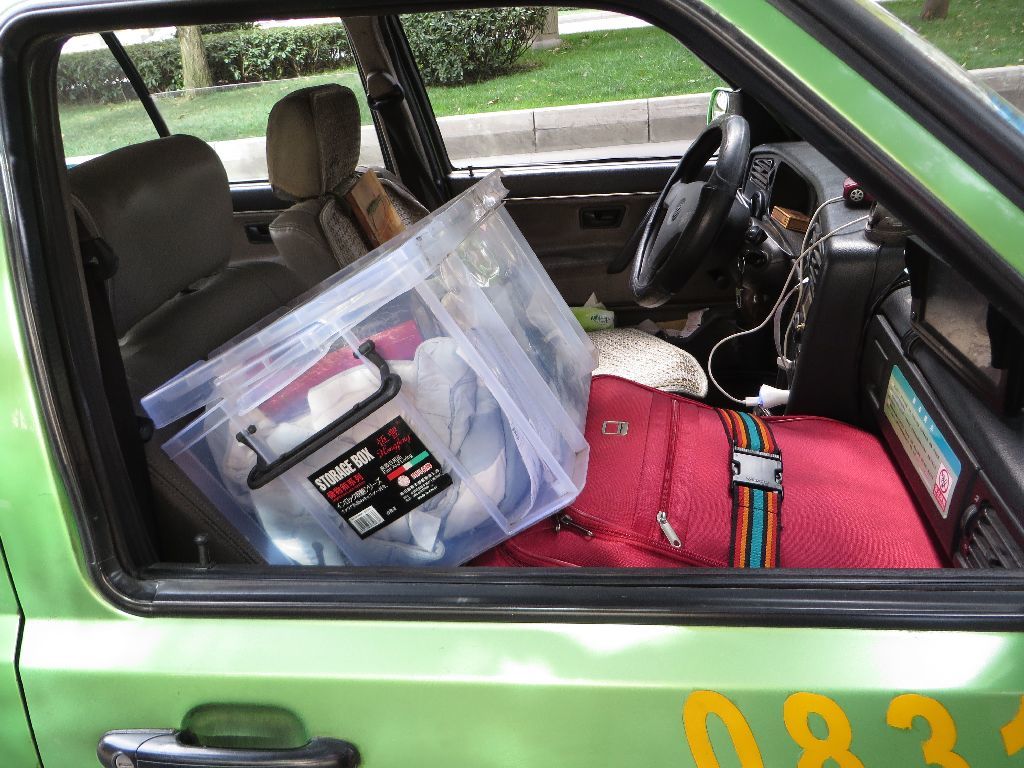
It was a hassle free ride to CTU
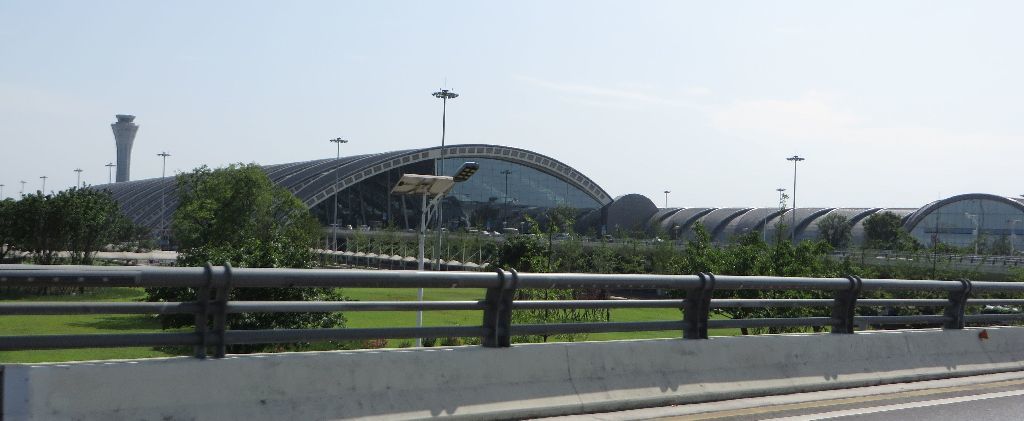
The taxi drop zone

Like in PVG, there was an explosive screening at the entrance of the terminal

But unlike in PVG where the passengers had to wait briefly in a cordoned off area until the cotton swabs had been tested, the passengers were guided here through a meandering path to have them still within reach if there was a positive test, so the whole process was fluid (and possibly felt faster than it really was).
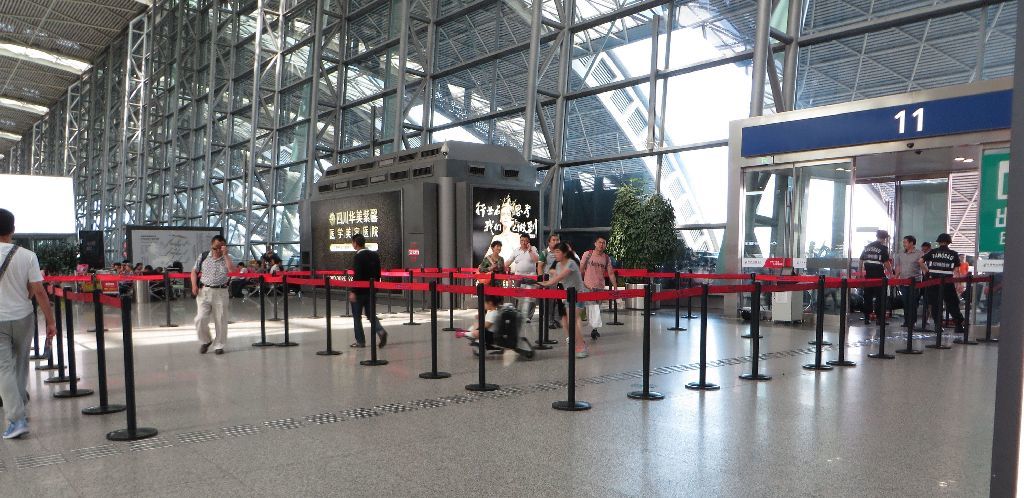
The inside of the terminal, landside

There were self checking machines
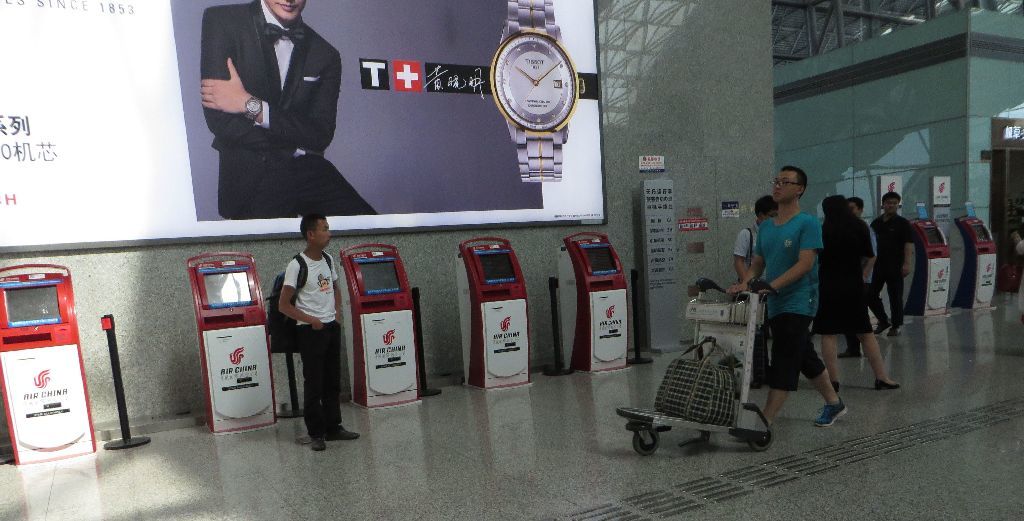
But since I was traveling with a *A Gold member, I could join him in the J/Elite check in counters. It was this way:

Waiting was nil there, and passengers traveling in a small group could wait comfortably on these armchairs on the left while a companion would check them in.
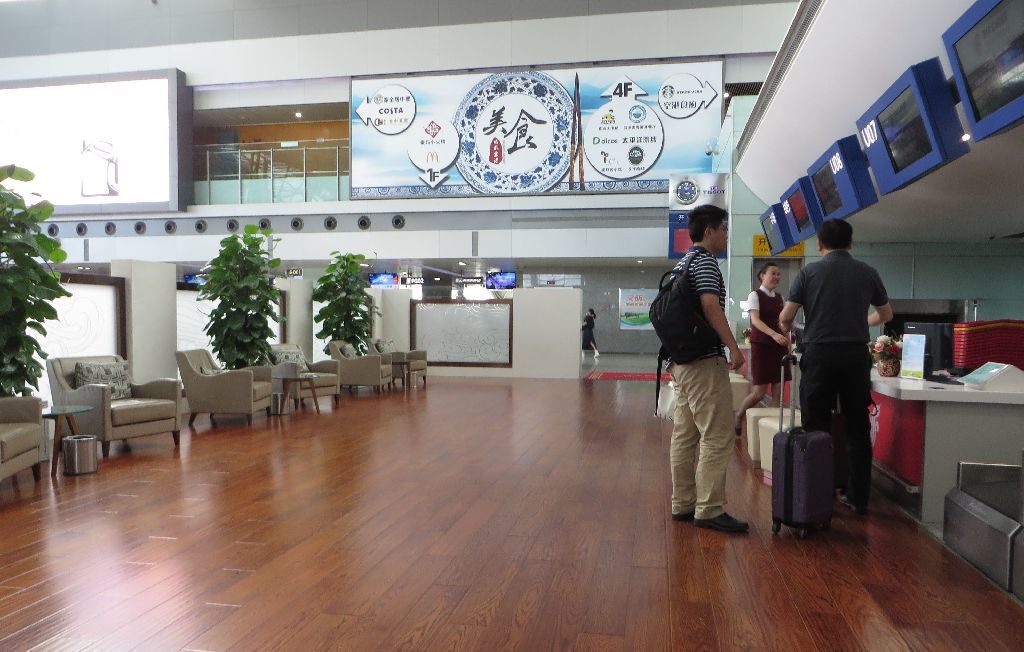
A view of the check-in counters, with stools for the passengers to sit on
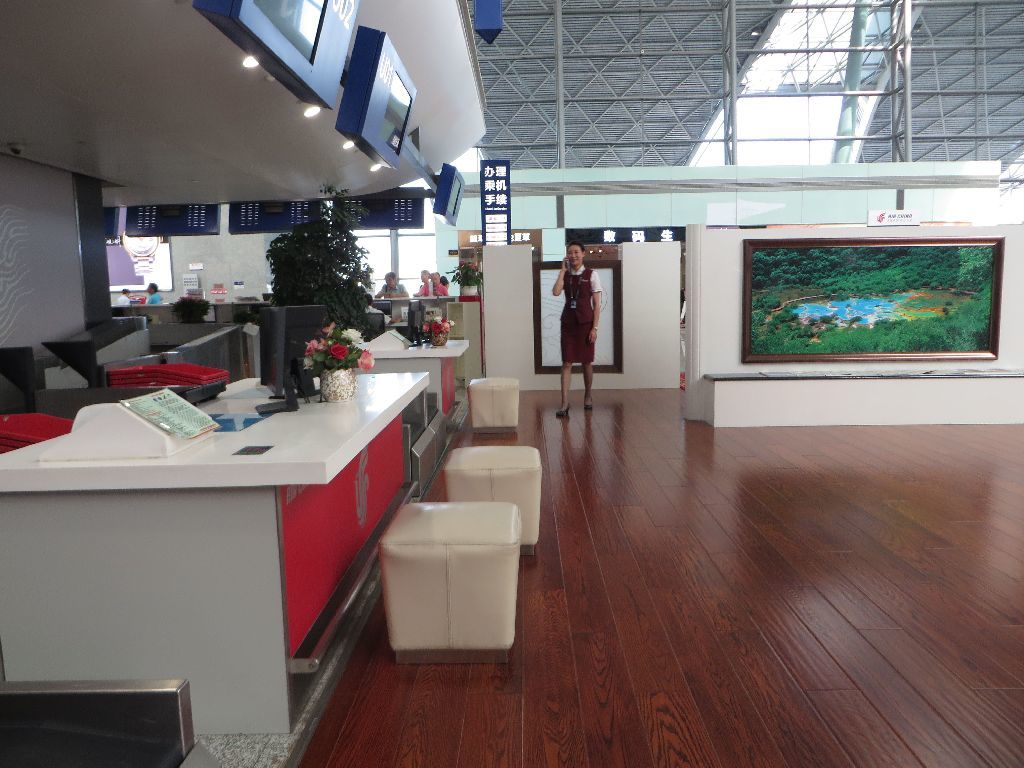
This picture in the background represents the travertine cascades at Huanglong National Park, in the north of Sichuan. You will find a very similar picture in my tourist bonus of this JZH-CTU Flight Report, posted in the very early times of this website. This natural wonder is very famous in Mainland China, but little known outside the country. (Do not go there in spring, which is the end of the dry season).
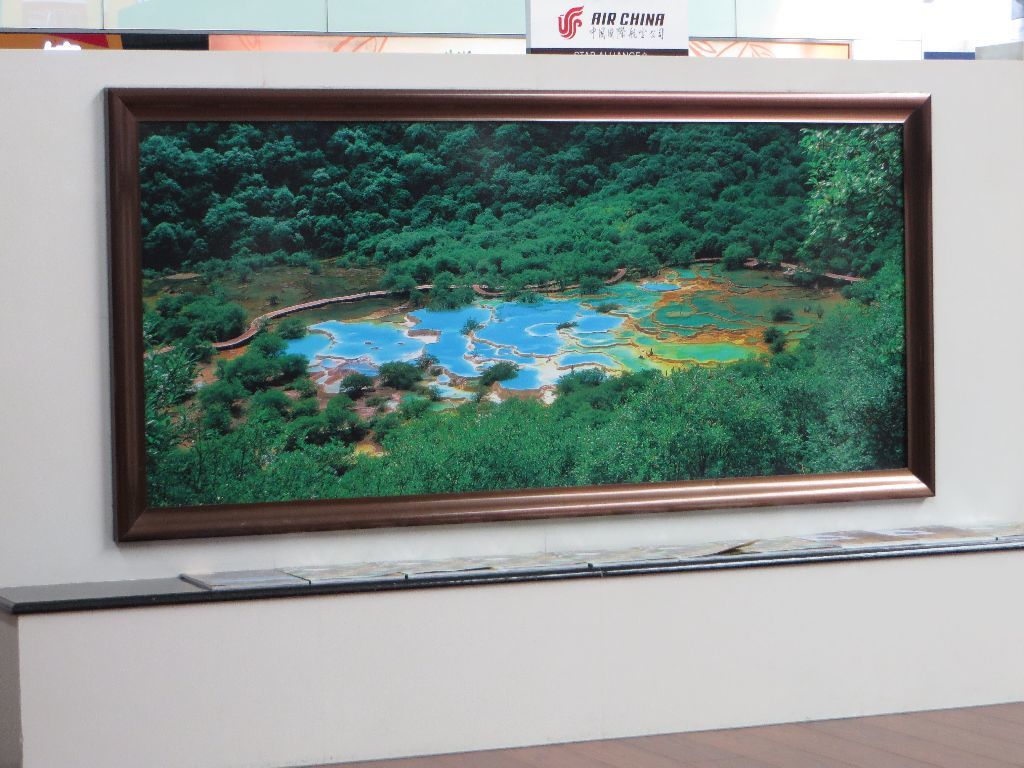
The carpet at the exit of the J/Elite check in area
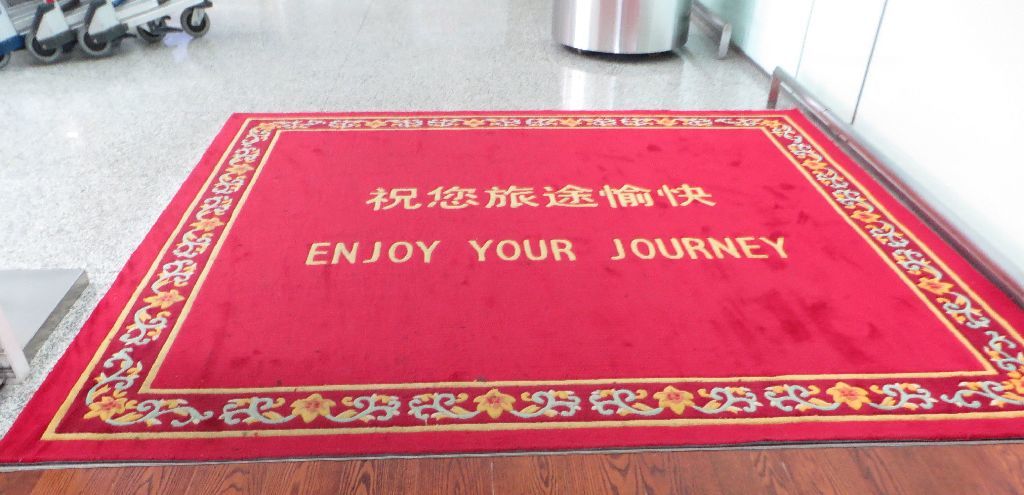
On the other hand, I could not use the proirity lane of the security check, so my colleague had to wait for me (not very long) on the other side
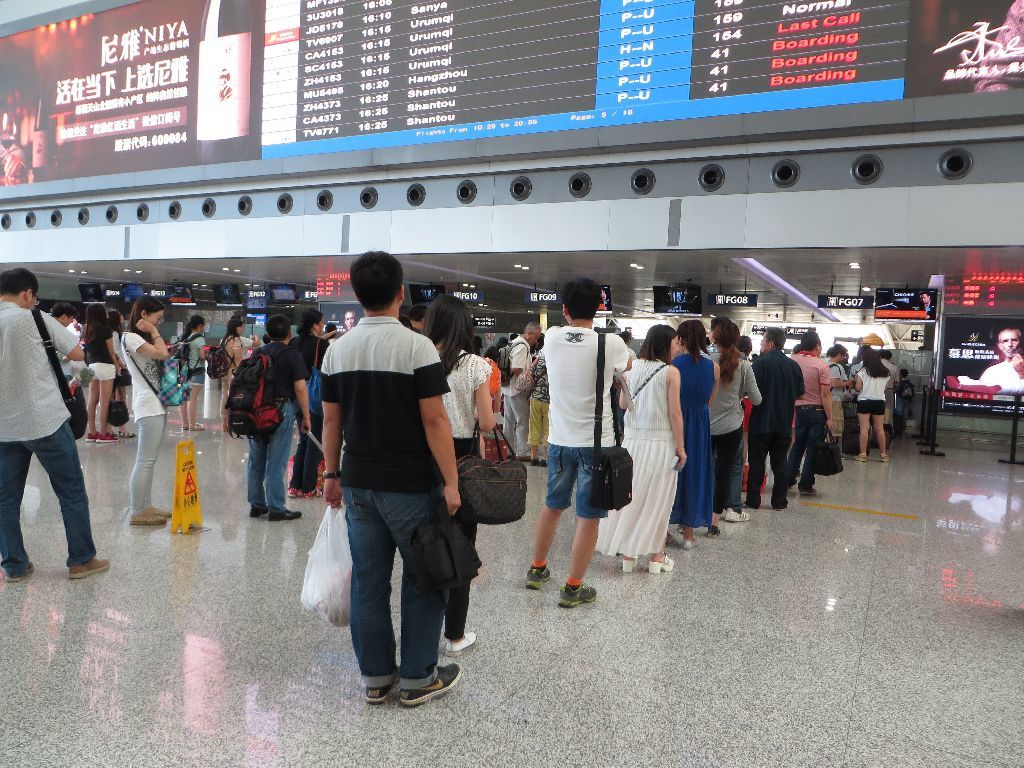
… and then guide me upstairs to the smiling welcome at the CA lounge welcome desk.
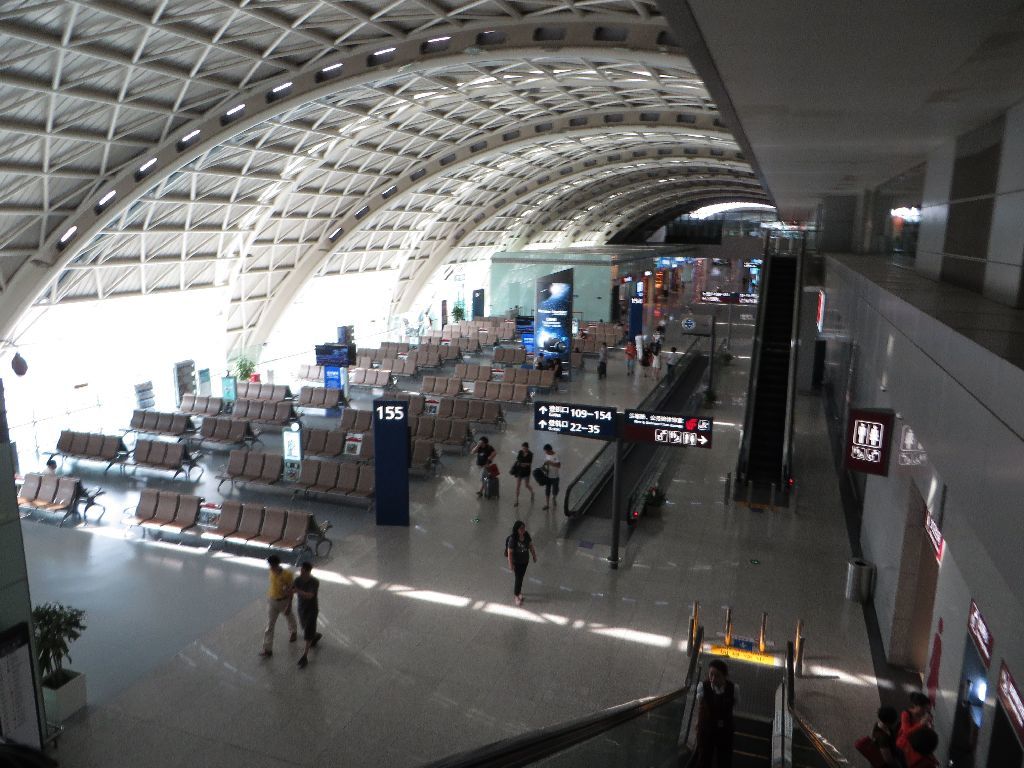
A magazine and newspapers stand. There were the two main English language daily papers published in Mainland China (HK excluded): the China Daily and the Global Times. The former has a strong “official government release” and “Ideal China where the bad guys are punished and the heroes are rewarded” line, and the latter adds a rather xenophobic and conspiracist tone.
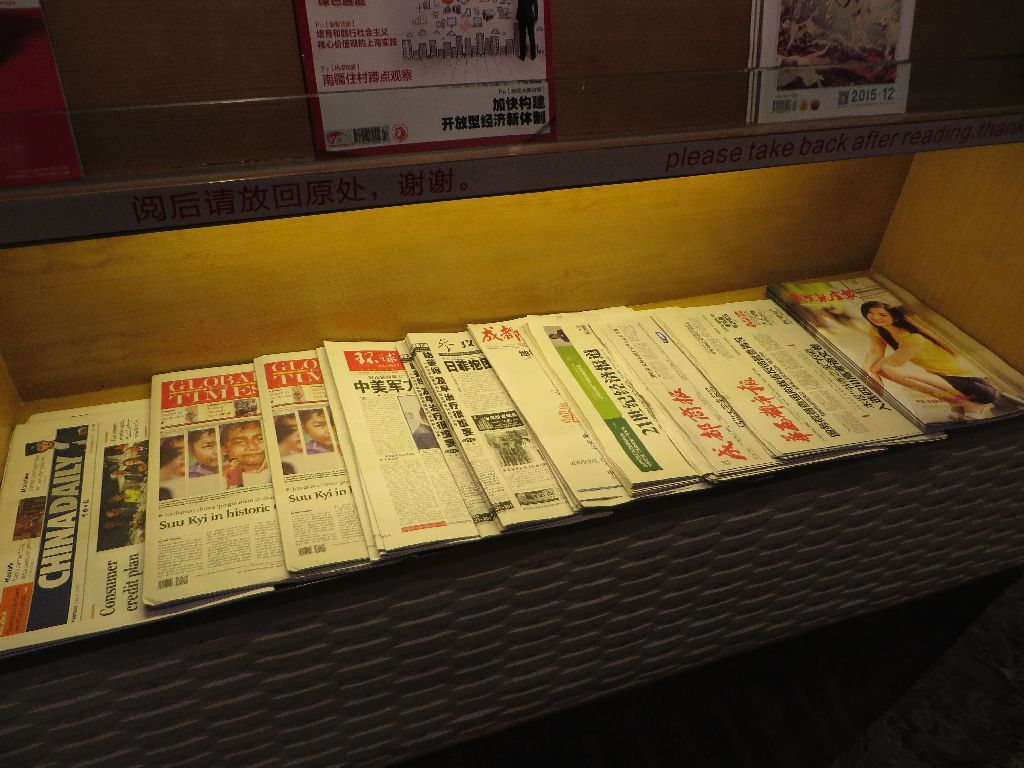
Beyond the initial areas behind the welcome desk,
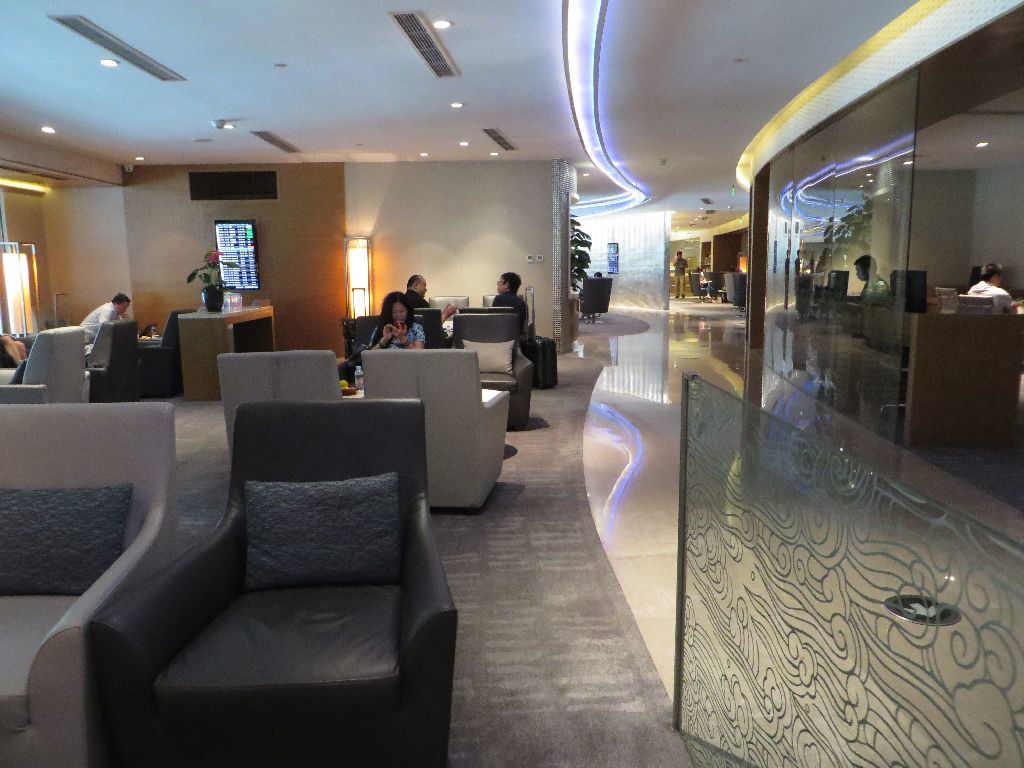
… this lounge gave me a feeling of space, no matter which direction I looked, contrary to that in HGH. There was a lot of circulation space and much fewer passengers than seats.
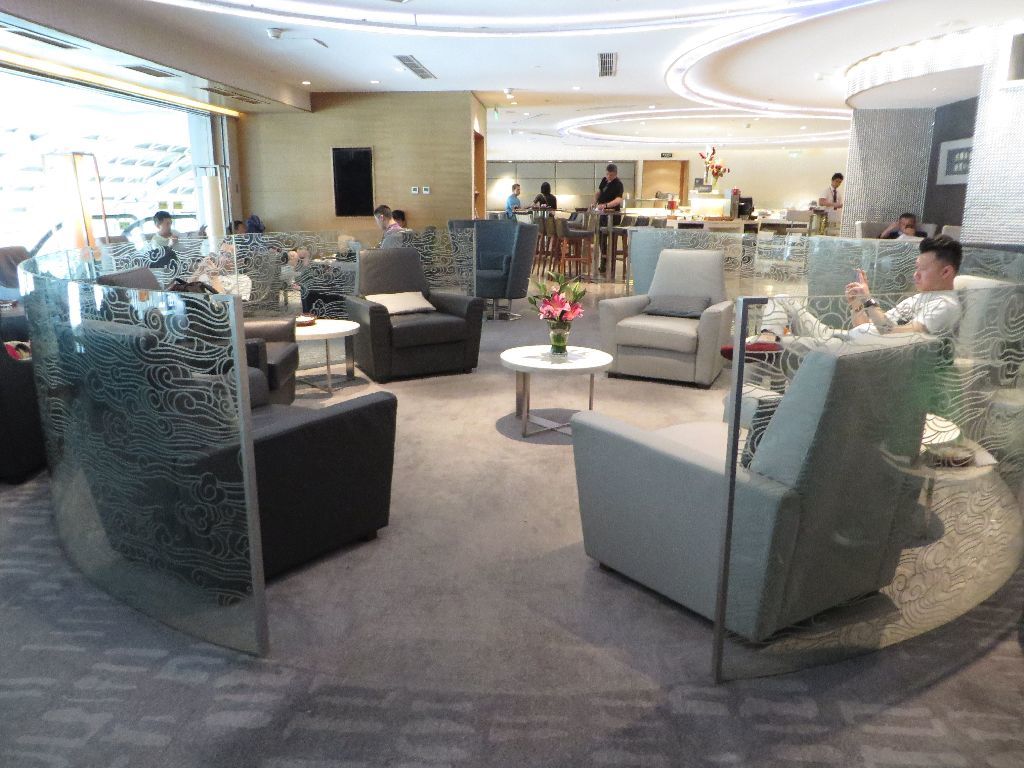
The only fault was that the staff took excessive time to collect the used plates of the passengers. I eventually took myself the leftovers of another passengers who had been sitting in the place which I found most pleasant.
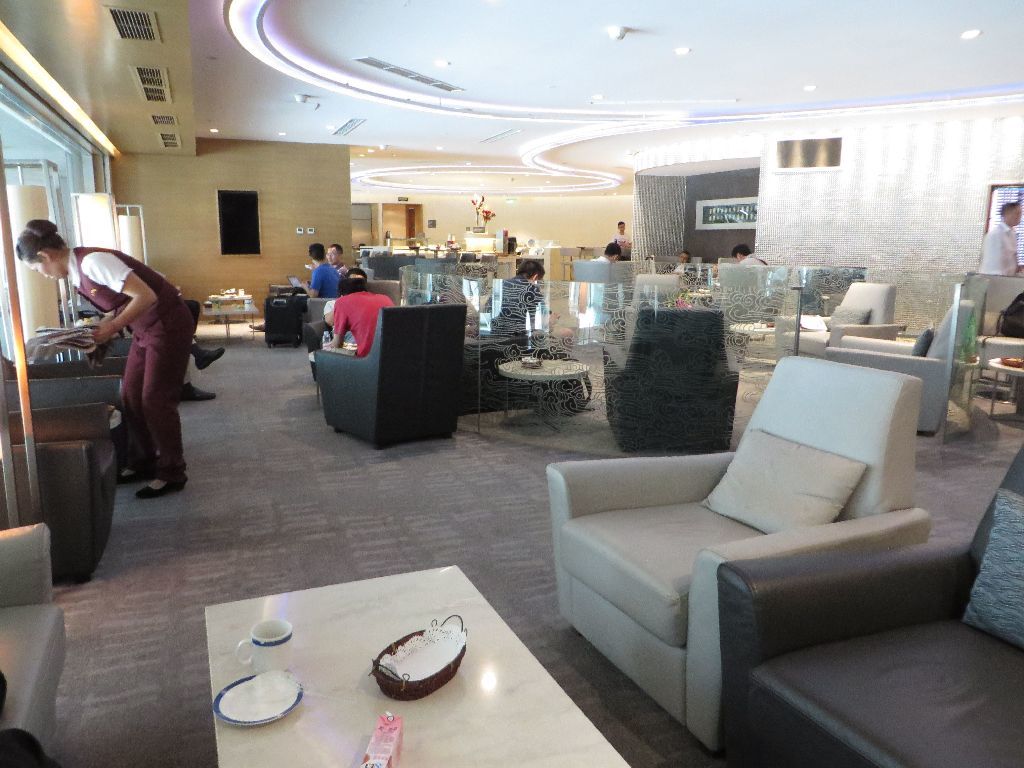
There was a room for getting rest, with a subdued lighting and a massaging armchair (for a fee, in the background).
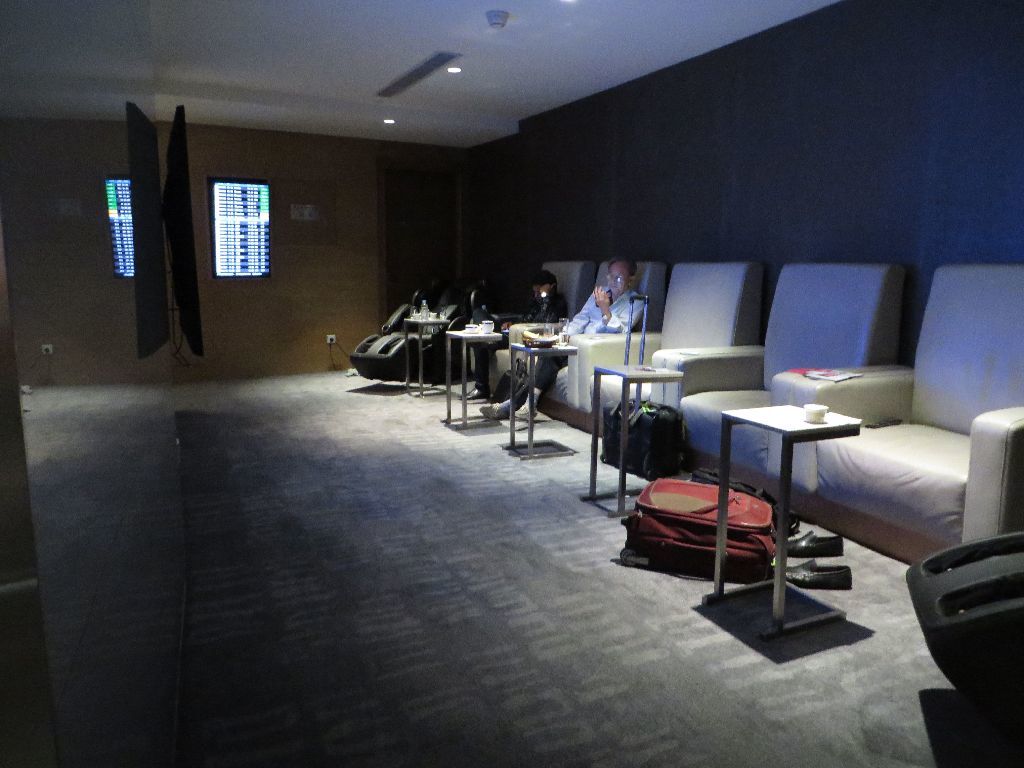
There was just as much space and lack of congestion in the catering area, with a central counter surrounded by a half circle of counters, and tables for eating there your choice.
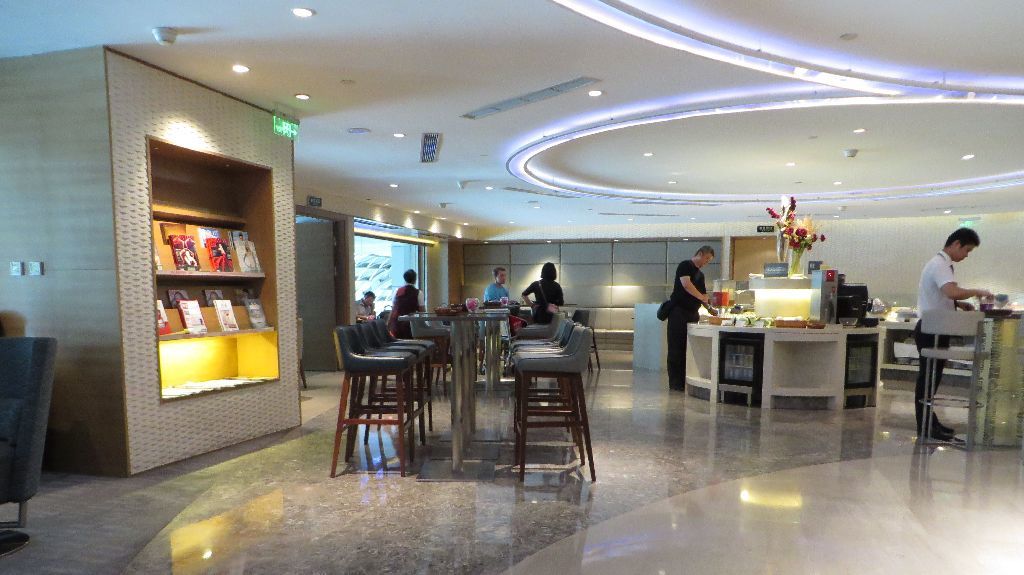
Dinner was not served yet, but there was food for hungry passengers

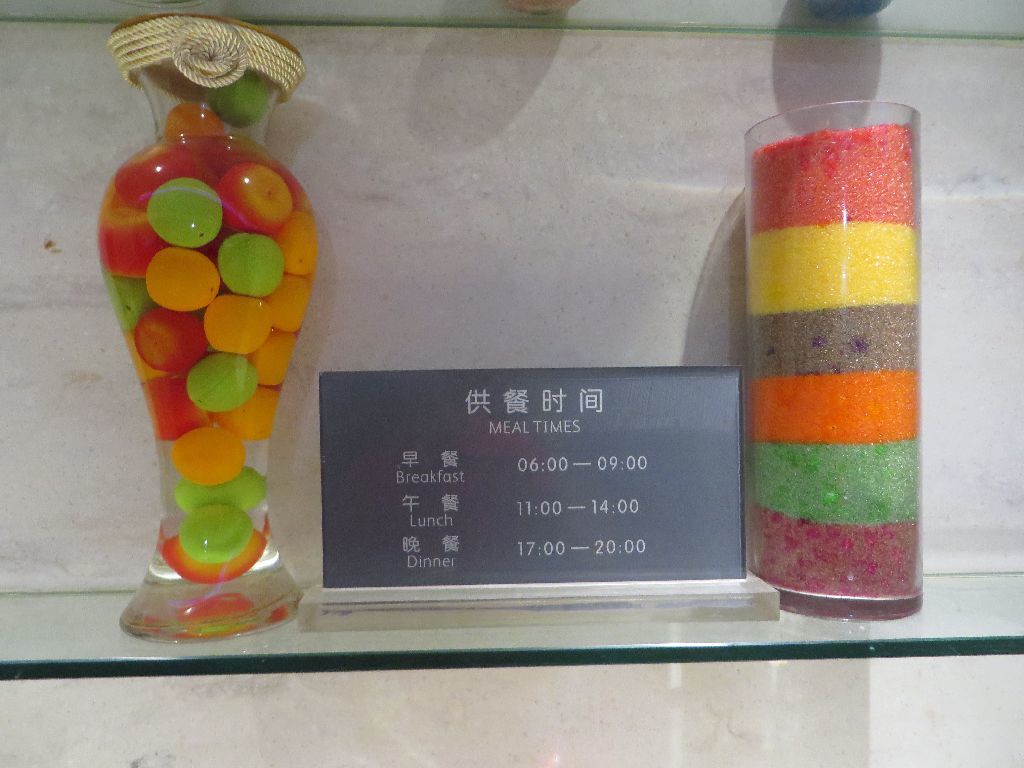
So, before the hot meals were due to arrive at 5pm,
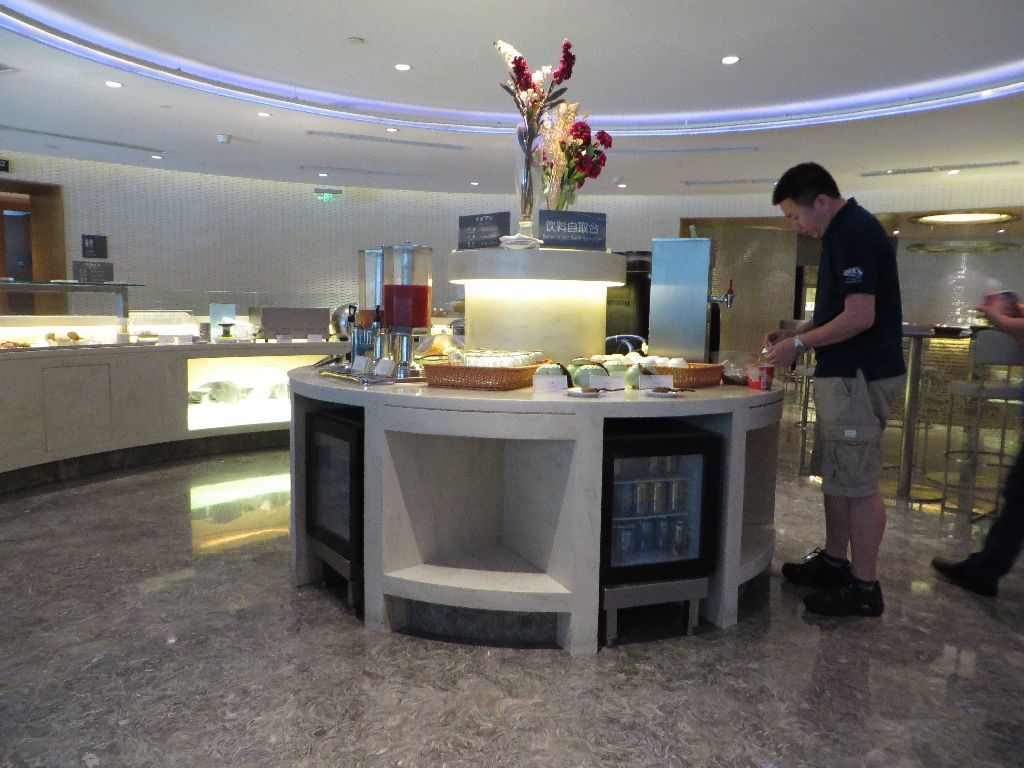
This is what was already in the center :

A coffee machine
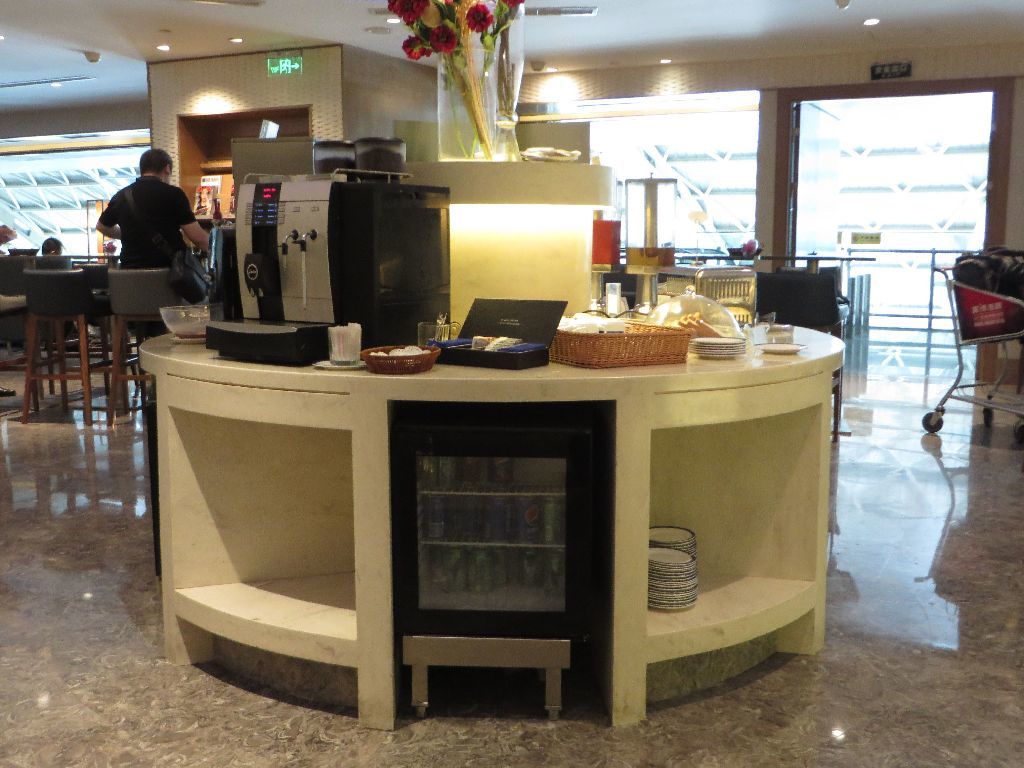
Sandwich bread, butter and jam; there was a toaster too
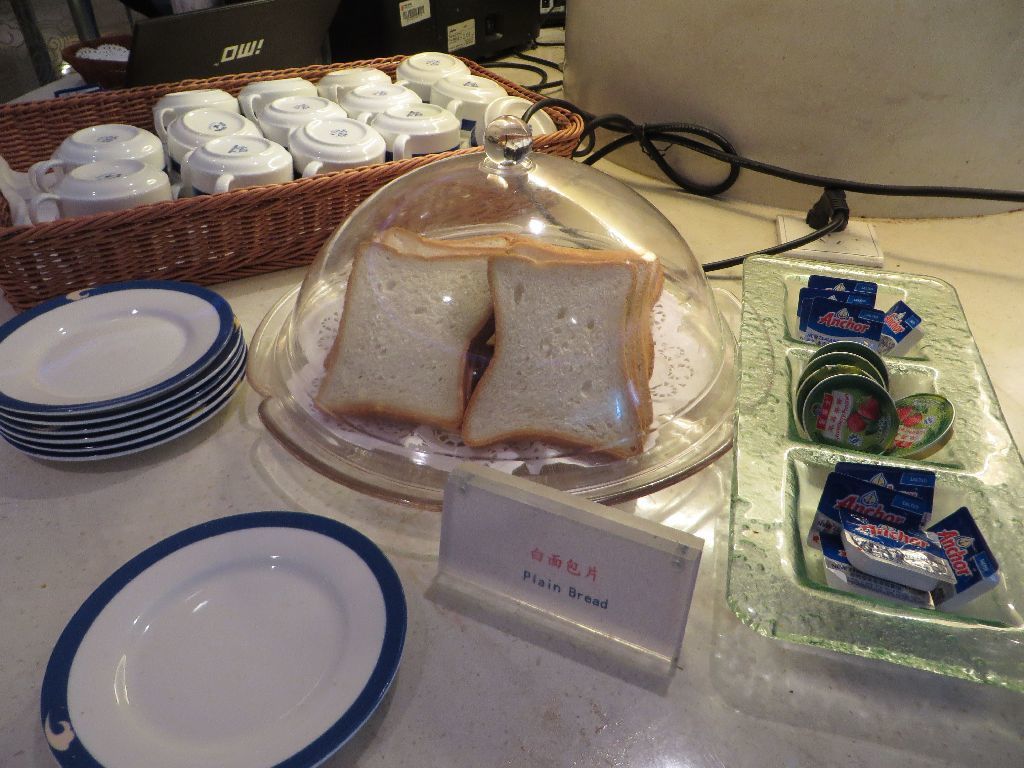
In a corner of the room :

Instant cup noodles, the kind which cost 4 yuan in any Chinese grocery store
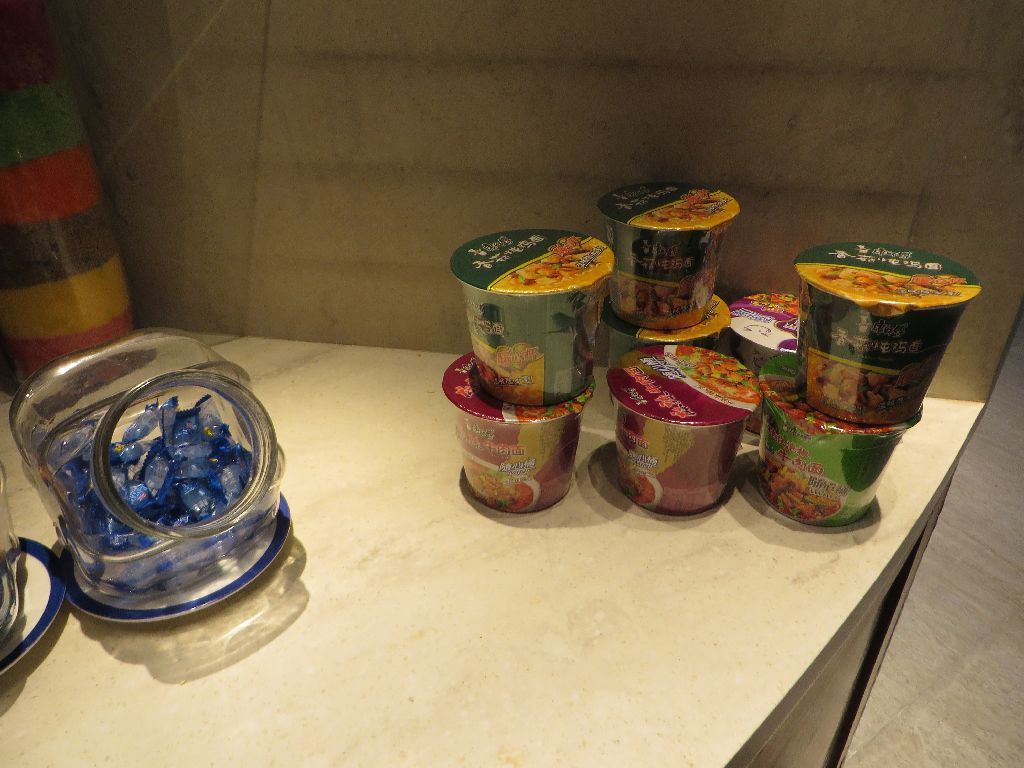
Various wrapped snacks
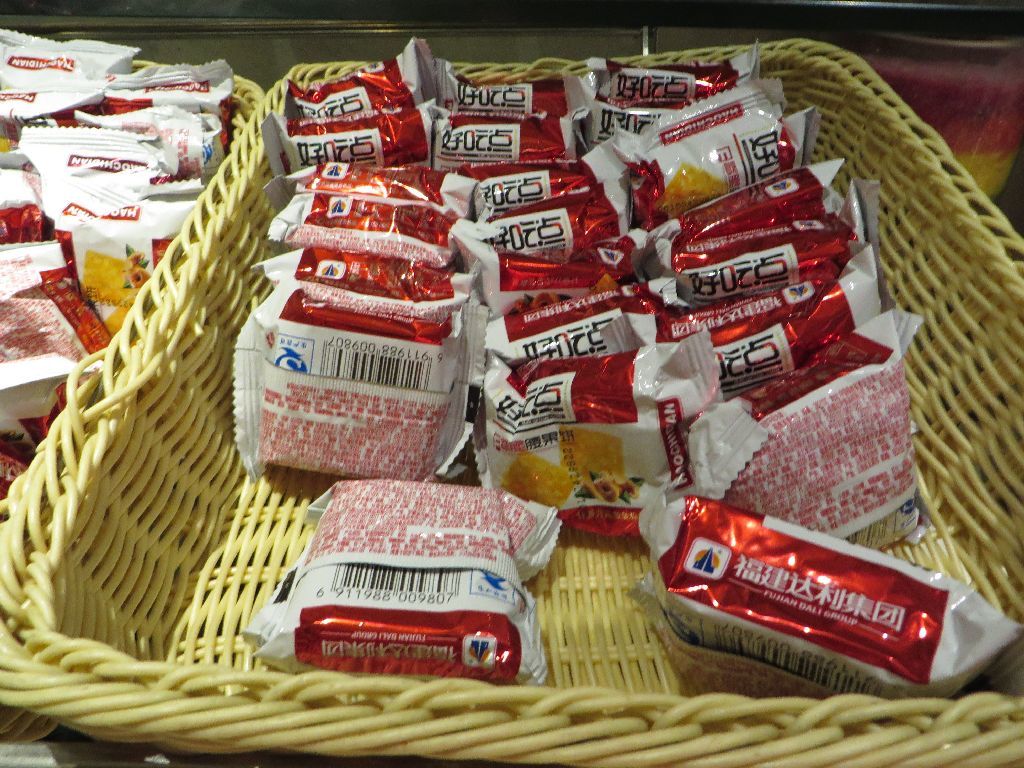
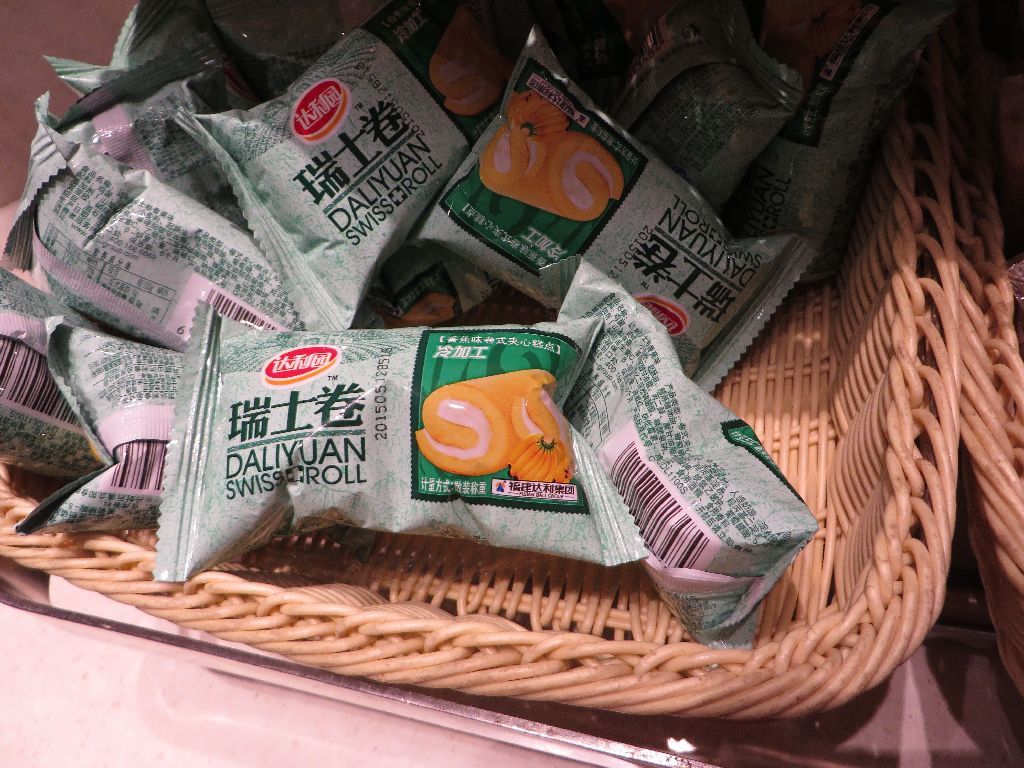
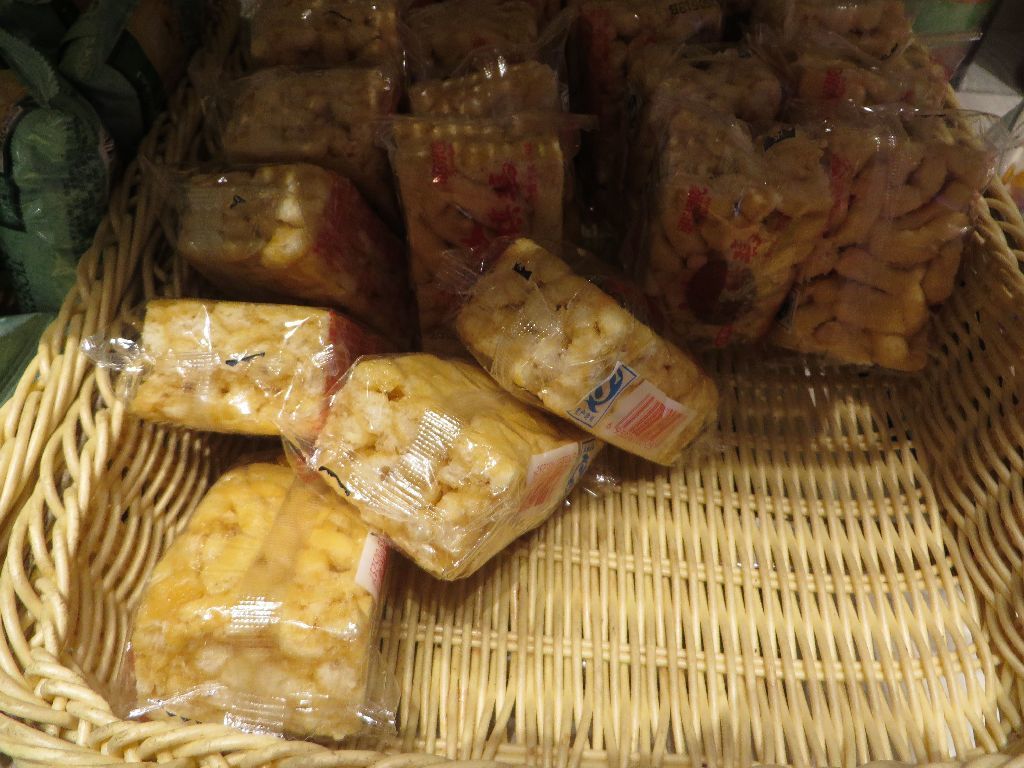
I am no specialist of these beverages ; all I wan write is that the choice was very limited.
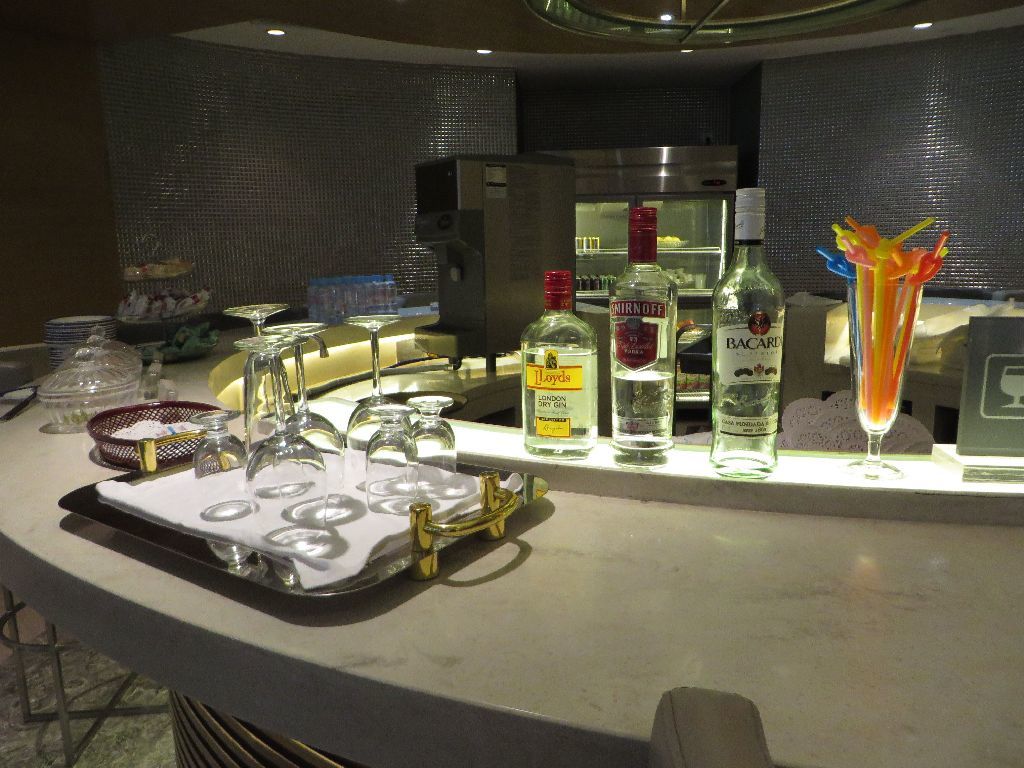
There was not much choice either of cold non-alcoholic drinks

Top right, the yogurts and the straws without which a Chinese could not eat them.
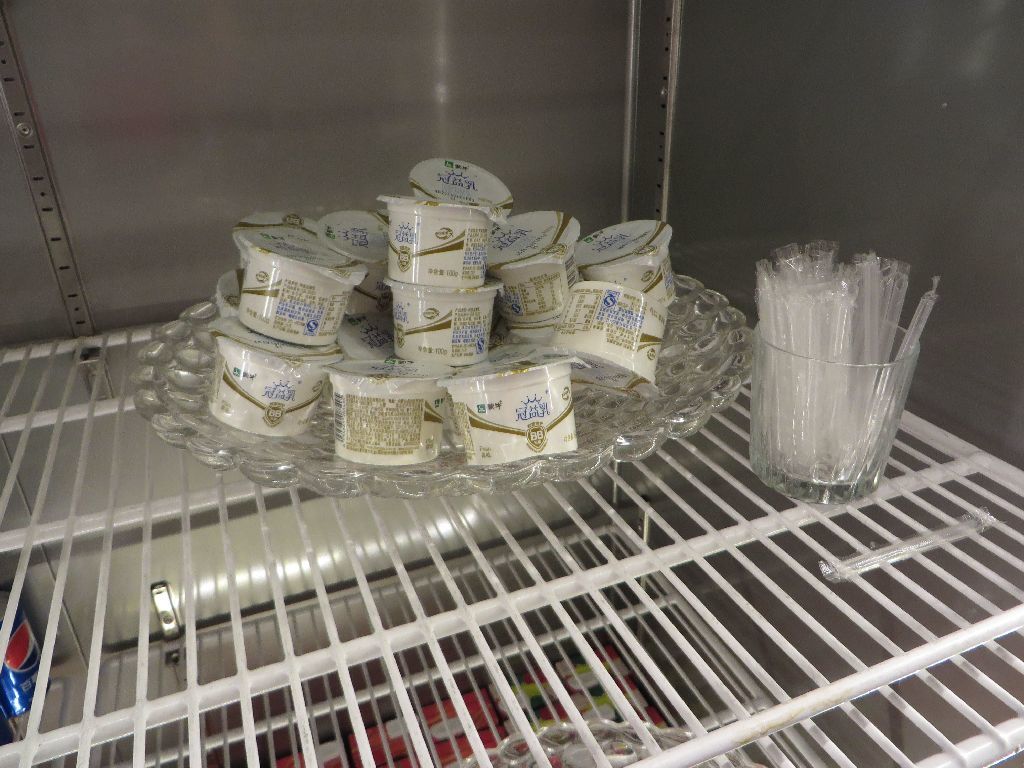
Some fruit

And small pastries
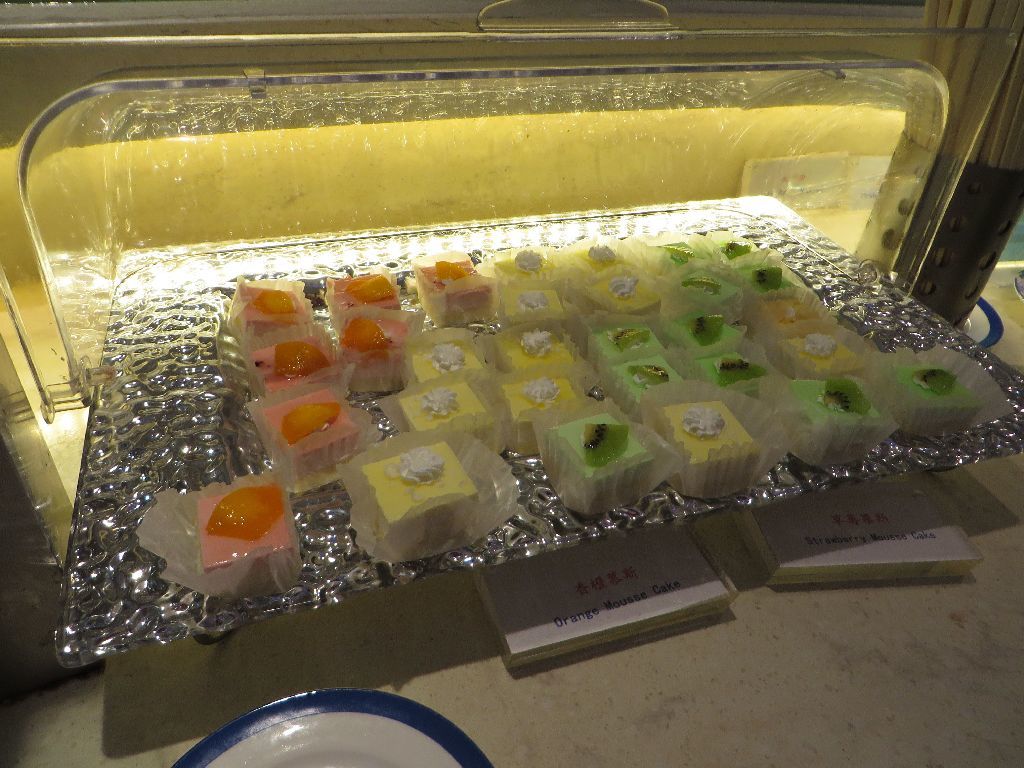
My selection, waiting for the dinner catering
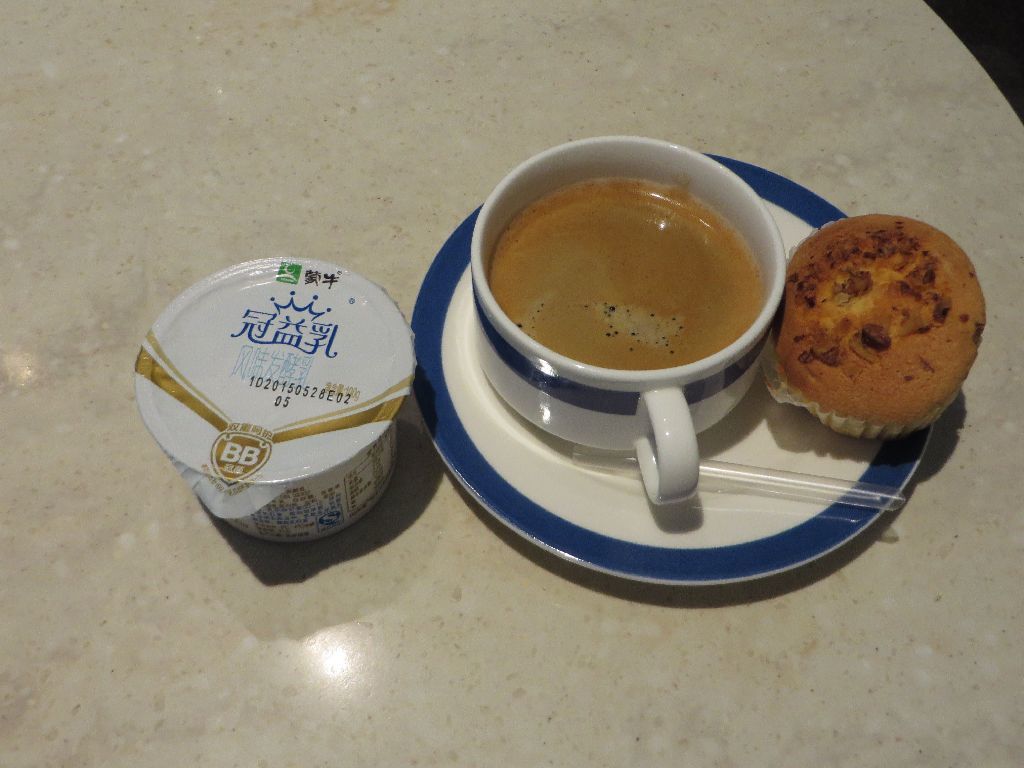
In Mainland China, the date marked on perishable foods is that of production. It is up to consumers to determine until when it is safe to eat it. This yogurt was therefore made on 28 May.
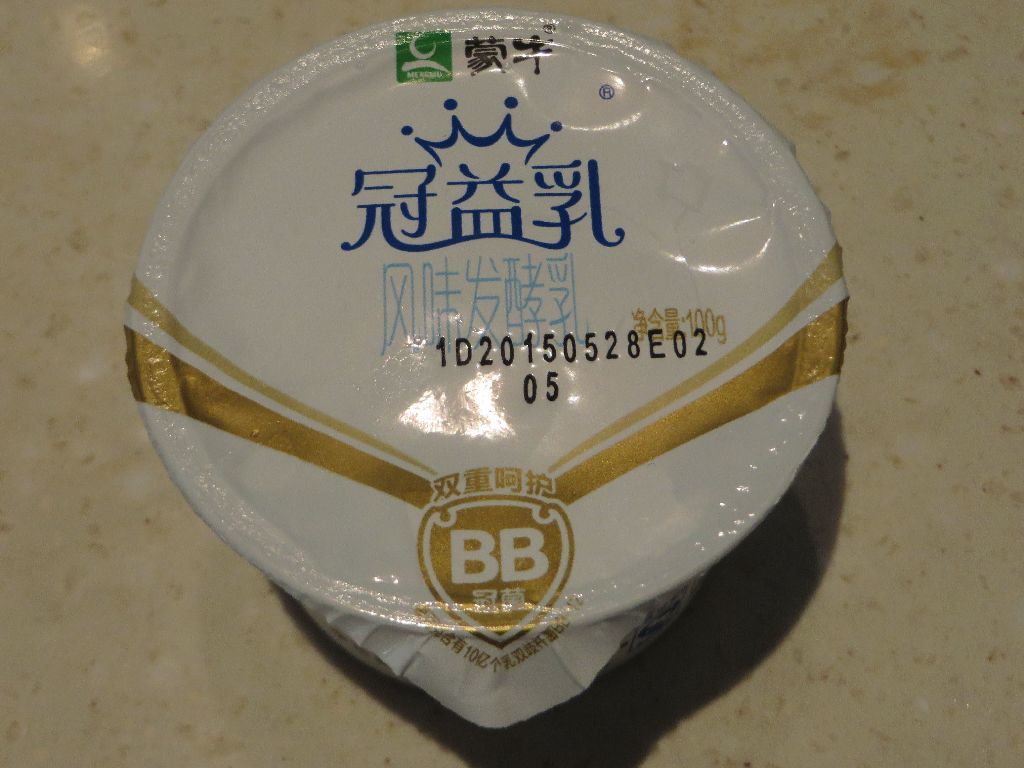
Now that I had nibbled a bit, it was time to get something to do. There was a room with self serve computers
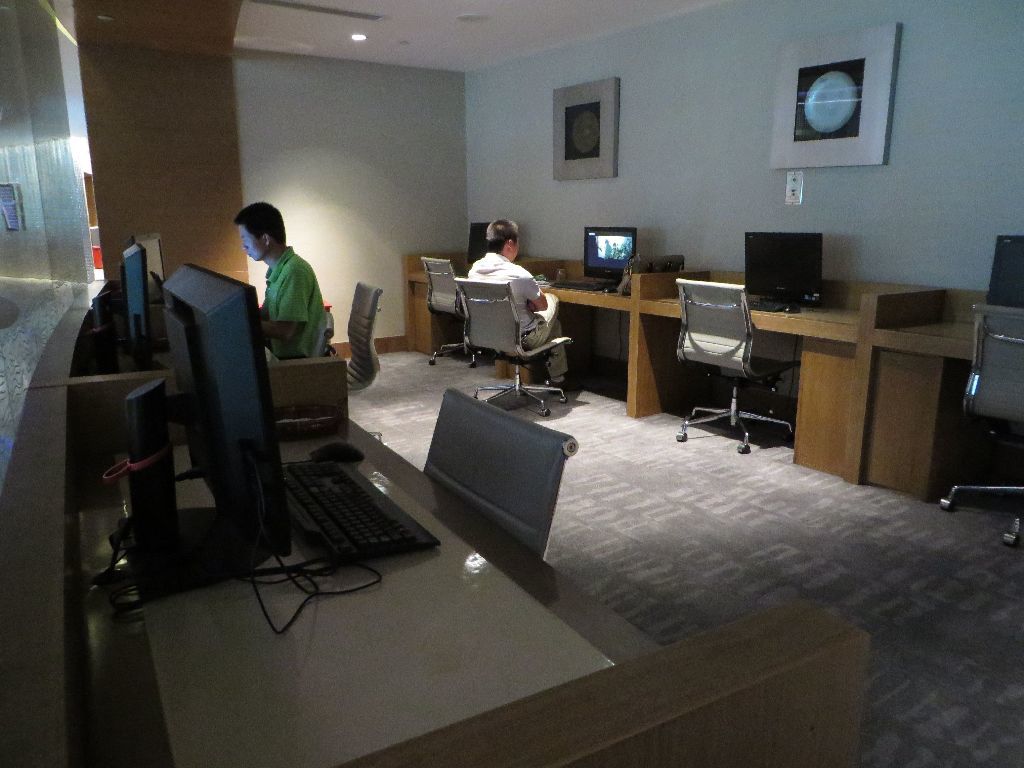
How about using my own ?

The internet connection was fast and hassle-free this time, which should not be taken for granted in Mainland China these days.
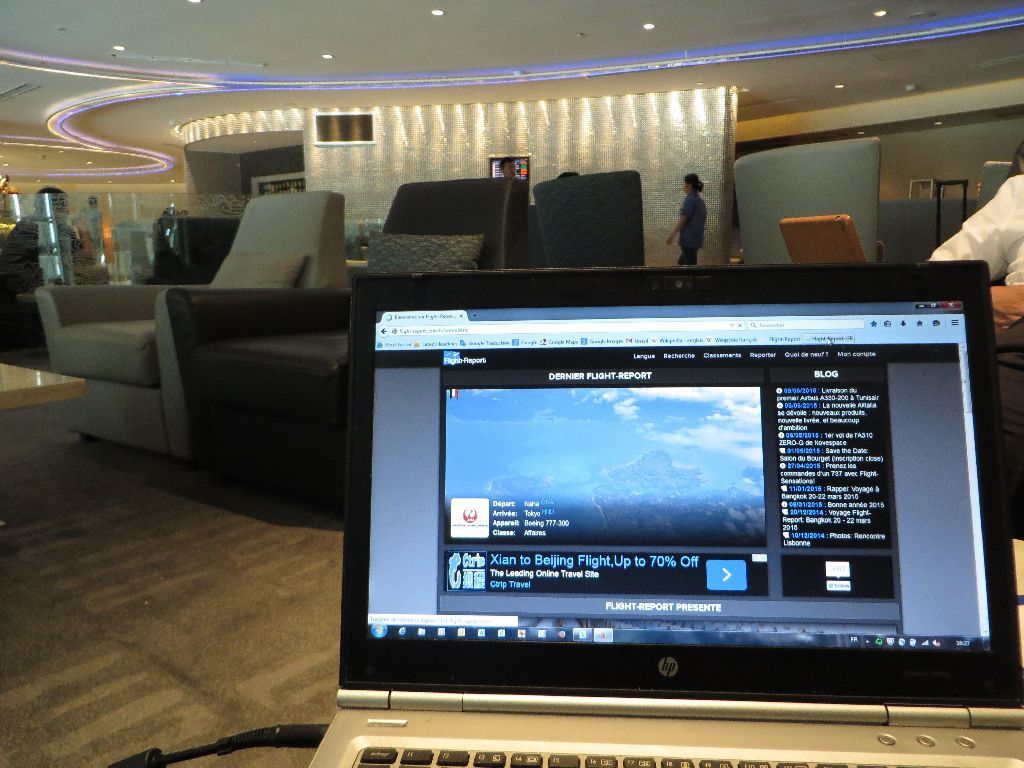
The toilets, here the ones for handicapped travelers, were spotlessly clean
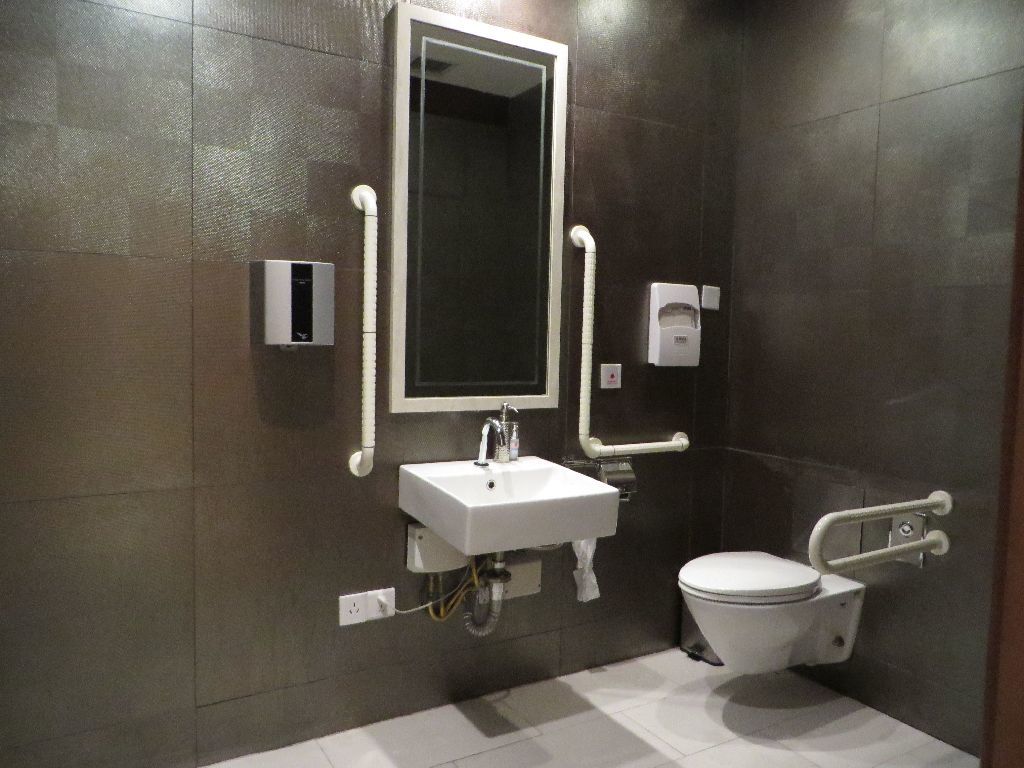
The lounge did not fill up, the number of passengers actually tended to decrease

At 5 pm sharp, hot food was brought in the catering area

There were a total of six heated dishes, with a rather attractive and varied choice of food

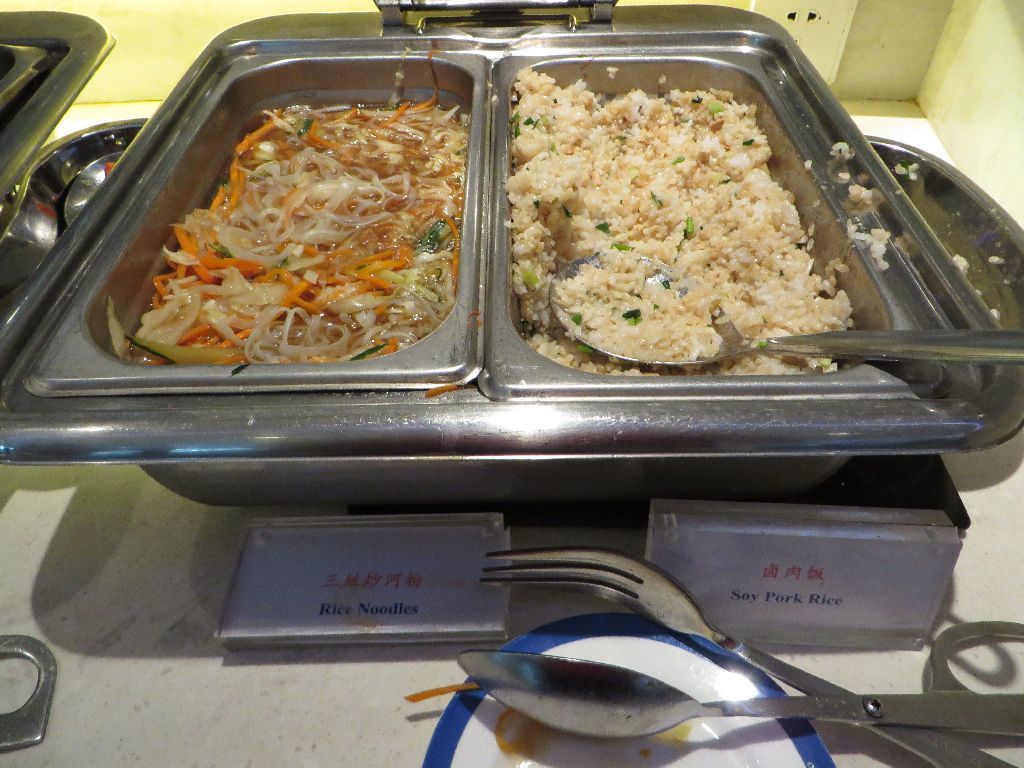
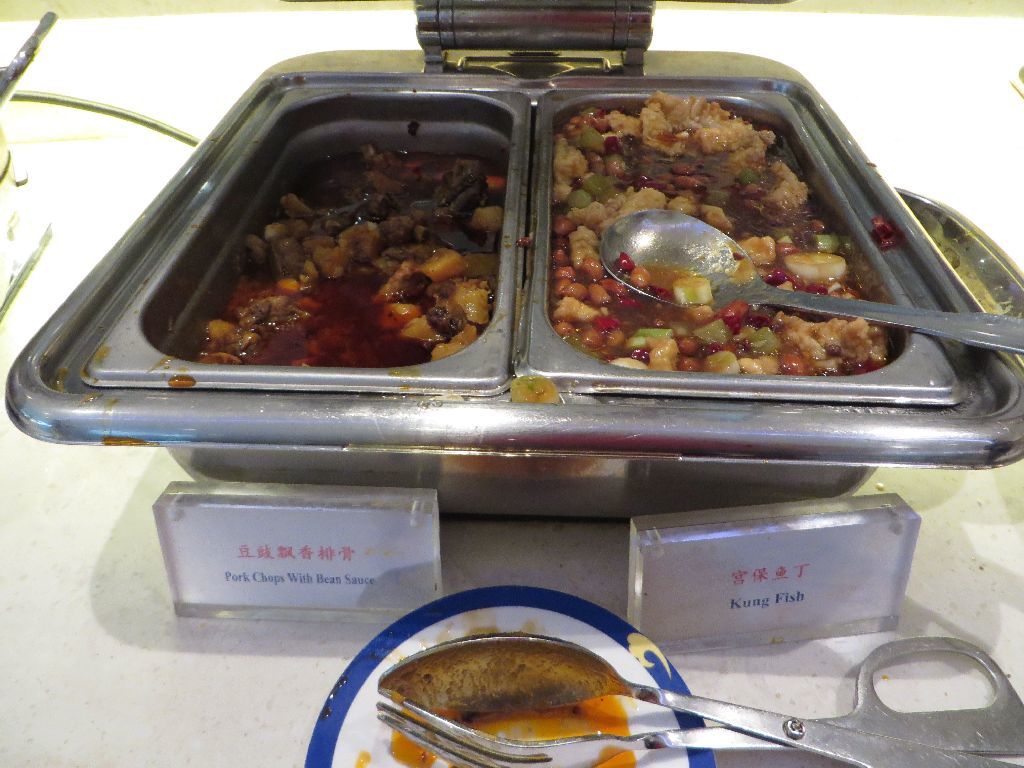
I stopped in front of this dish on the right
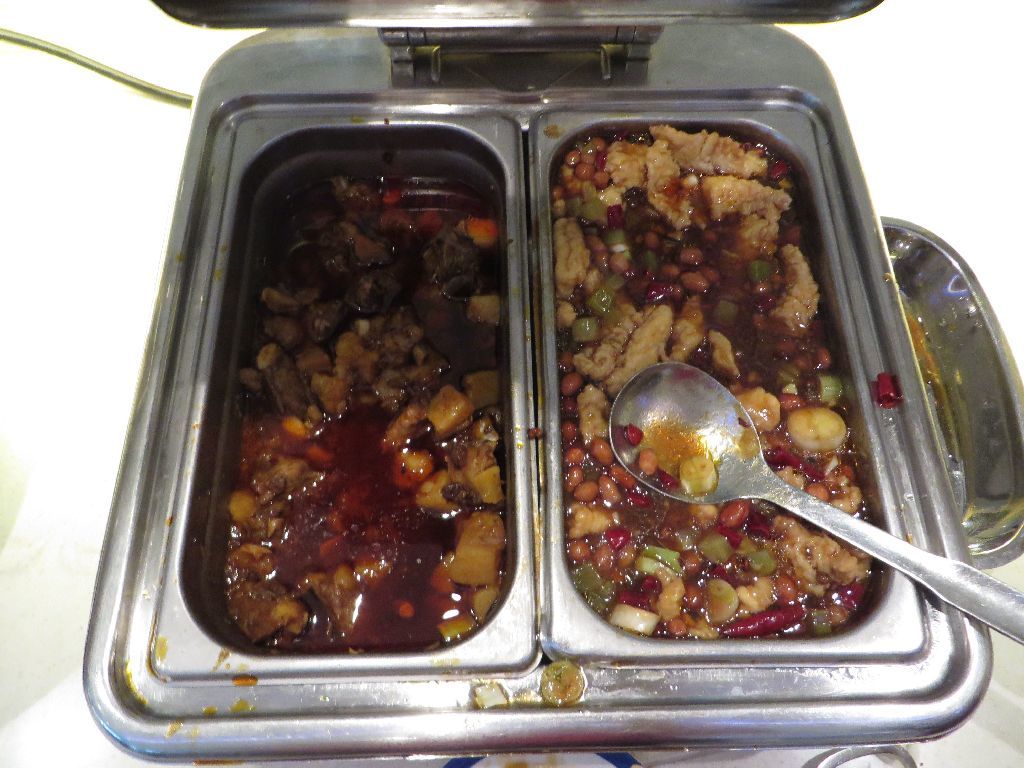
A 宫保鱼丁 (gōngbǎo yúdīng) ? This was an interesting fish (鱼) variation on the unavoidable 宫保鸡丁 (gōngbǎo jīdīng), the quintessential Sichuan dish. It is chicken with peanuts and red hot peppers. Better know where you stand, because hot peppers are world class fiery stuff in Sichuan.
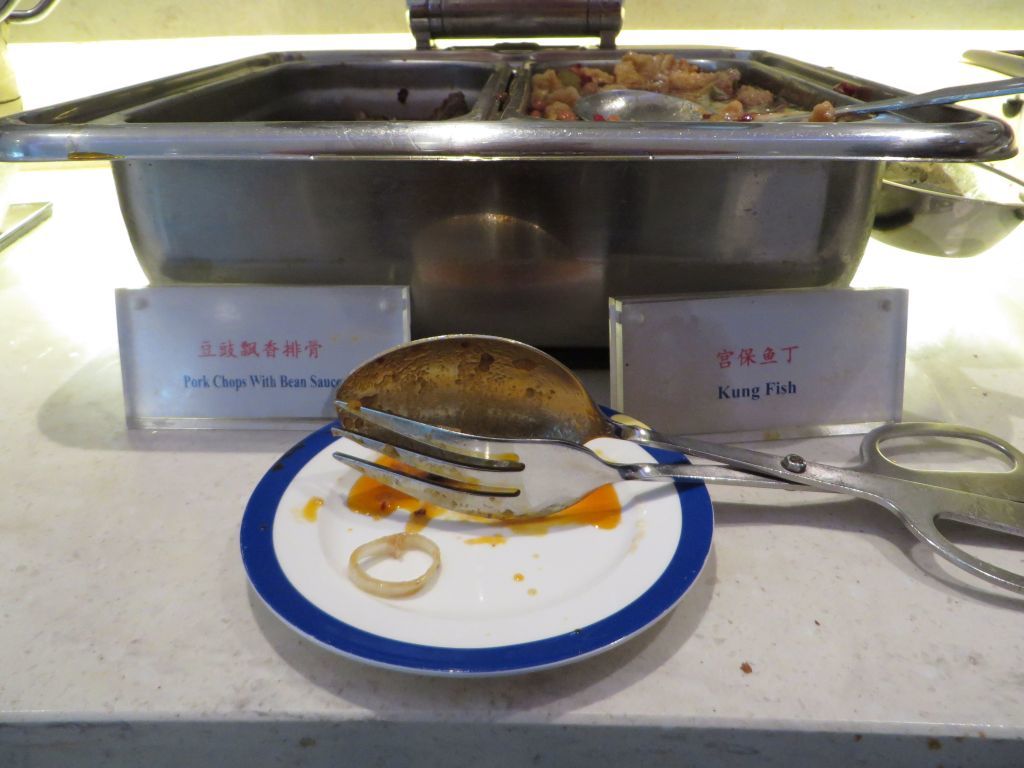
You can eat with chopsticks – the reusable kind that I had in my company restaurant in Beijing – but there were disposable silverware too for travelers unfamiliar with the handling of chopsticks.
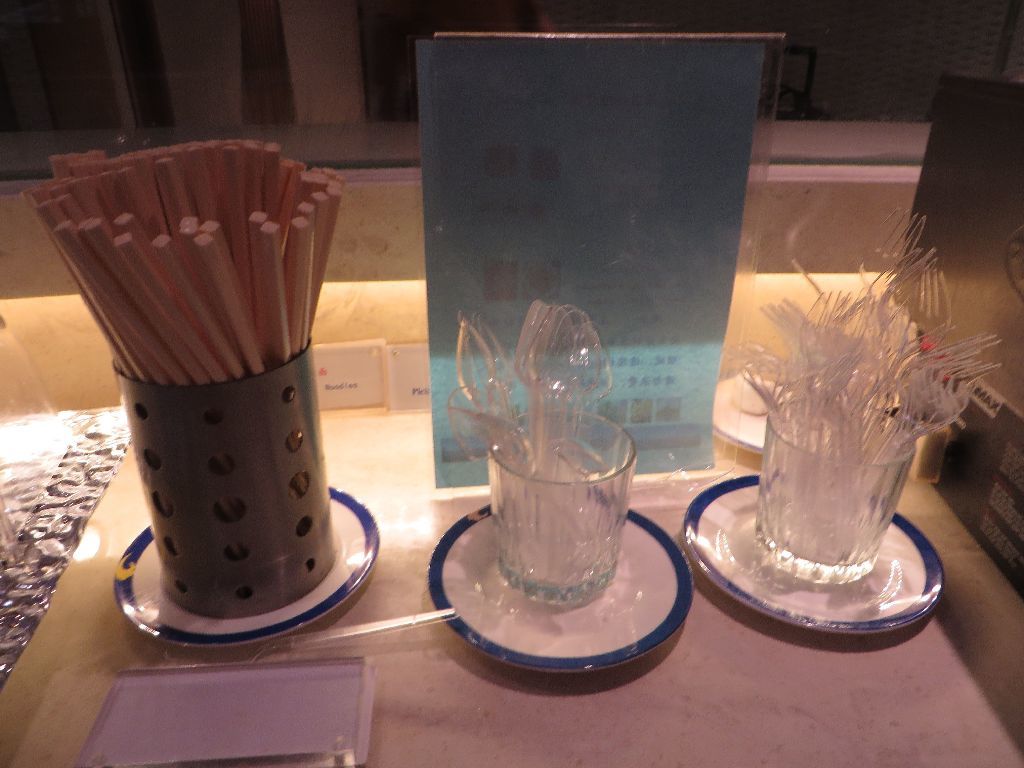
The staff resupplied promptly the dishes
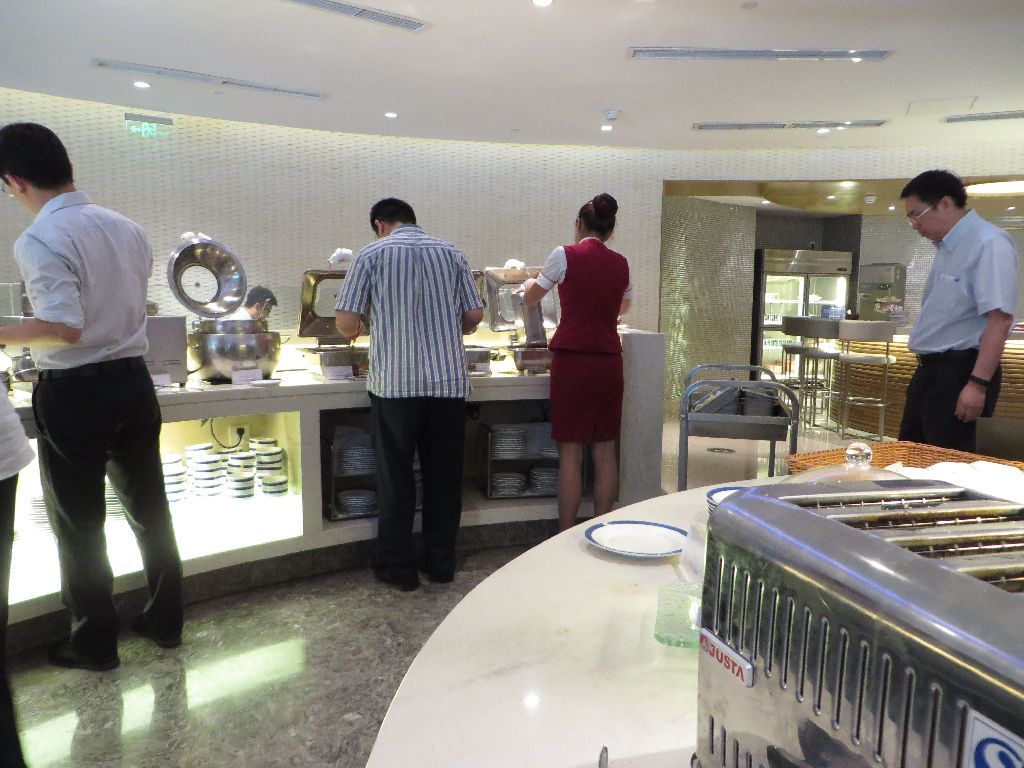
My selection : vegetables, rice, and this gōngbǎo yúdīng which puzzled me
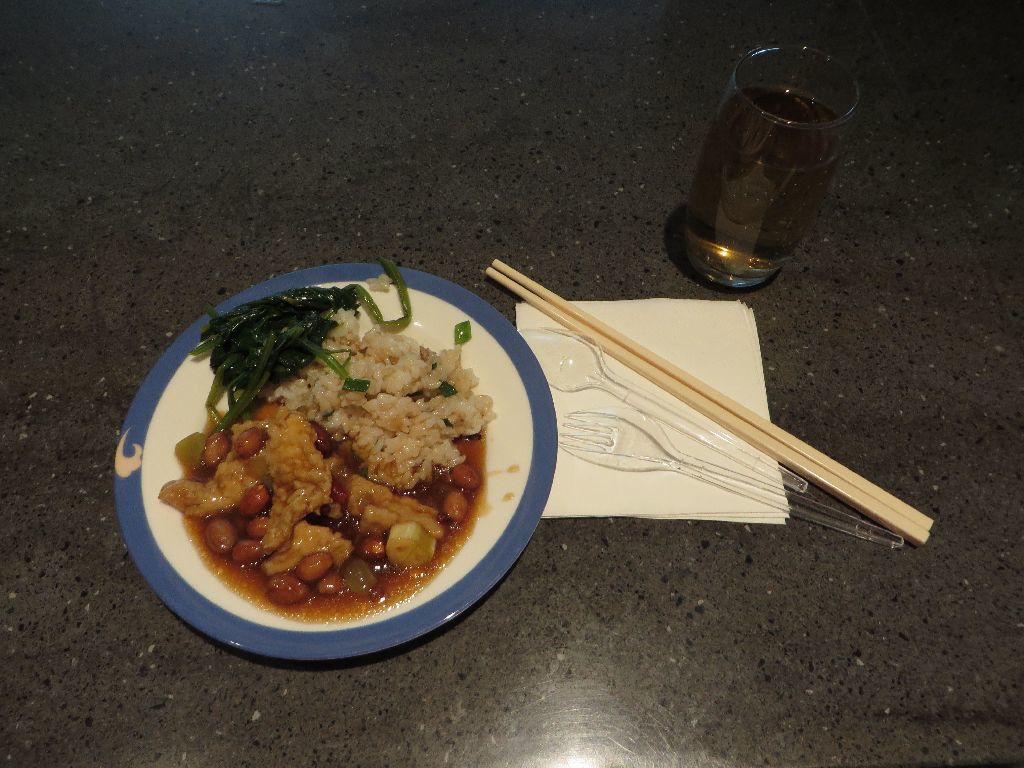
It was so good I took seconds; this version was considerably less hot than what I ate in local small restaurants.
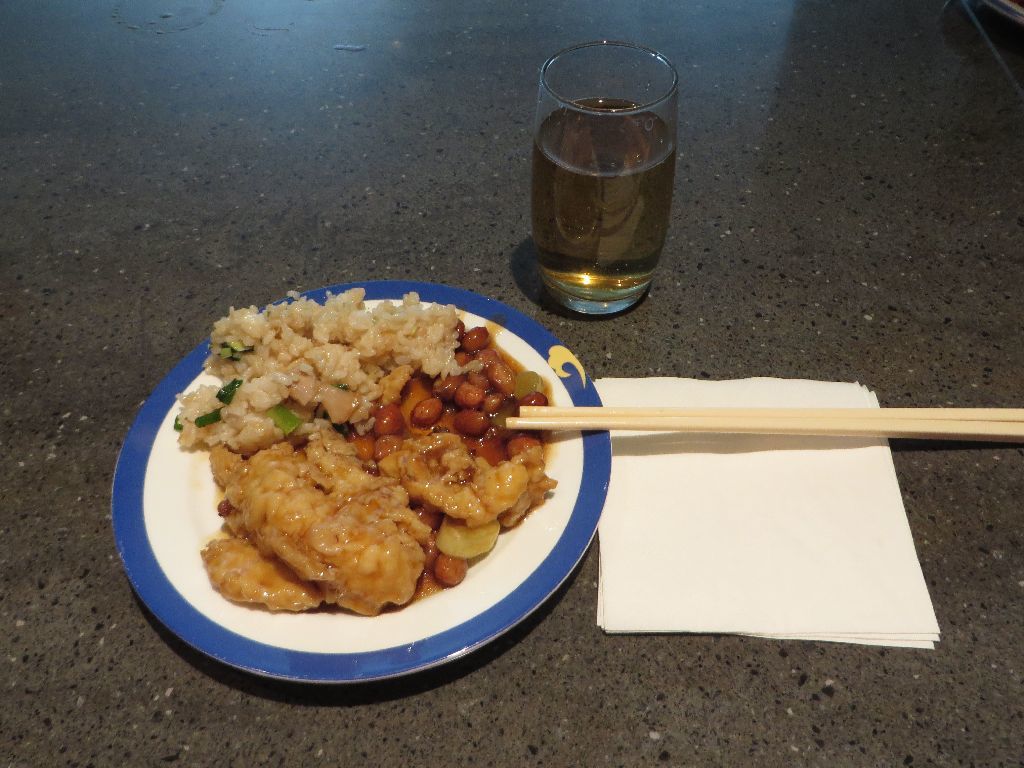
I did not try these desserts (flans with various flavors)
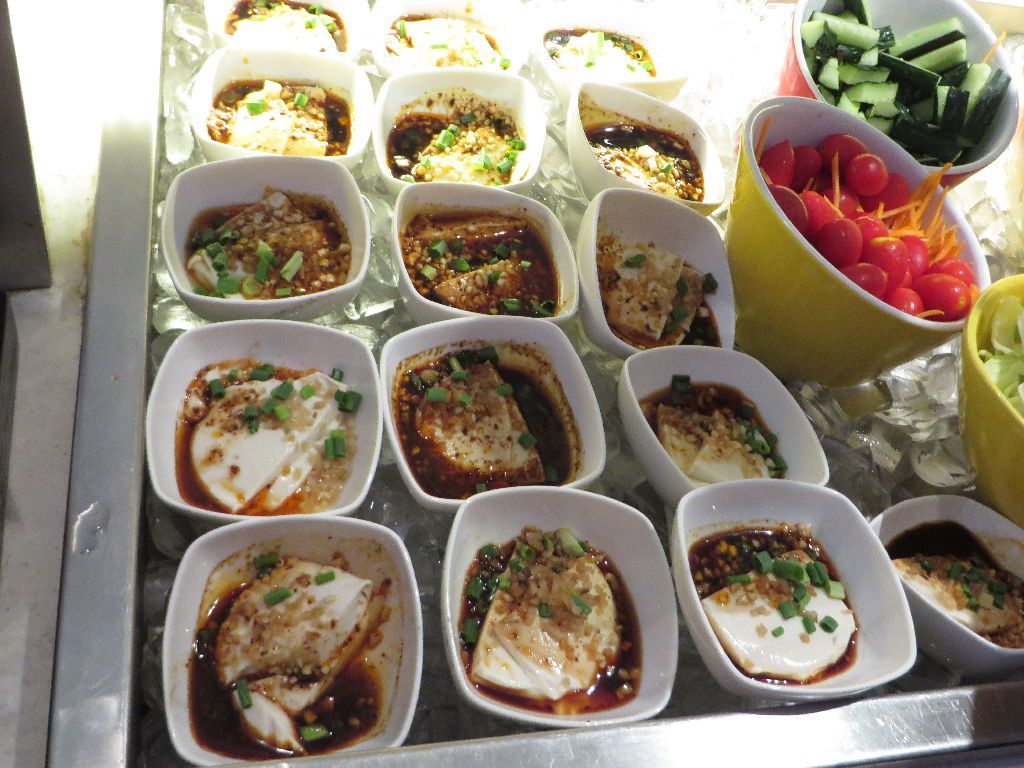
There was no mention of our flight to XIY on this FIDS, but it was time to leave the lounge
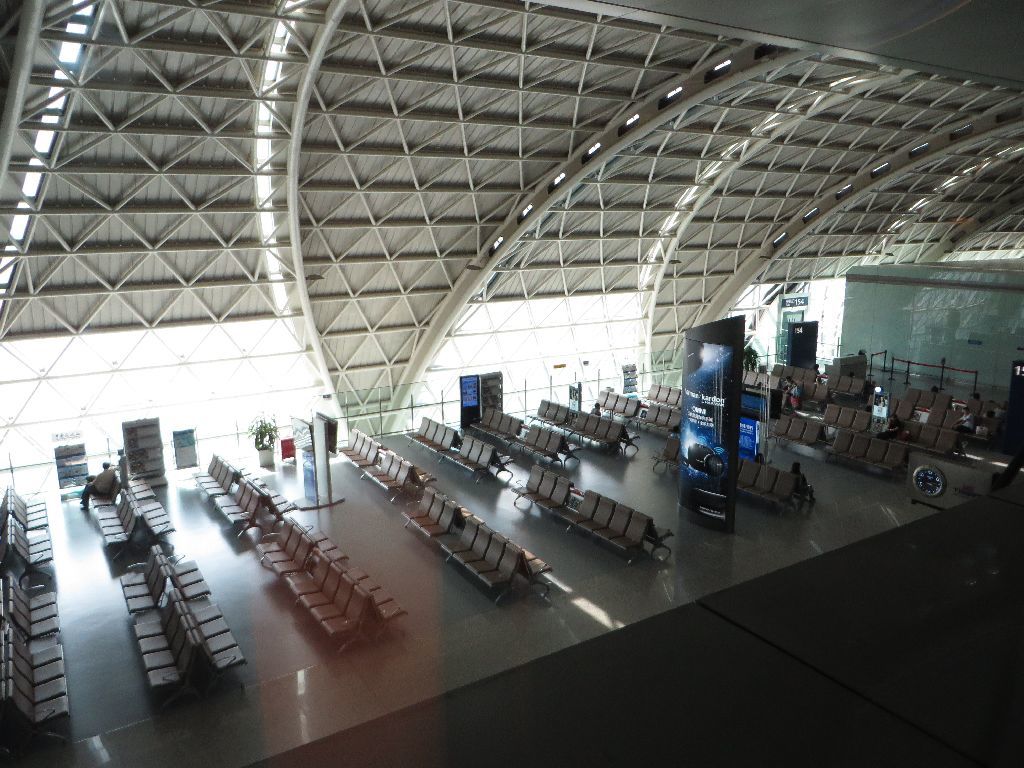
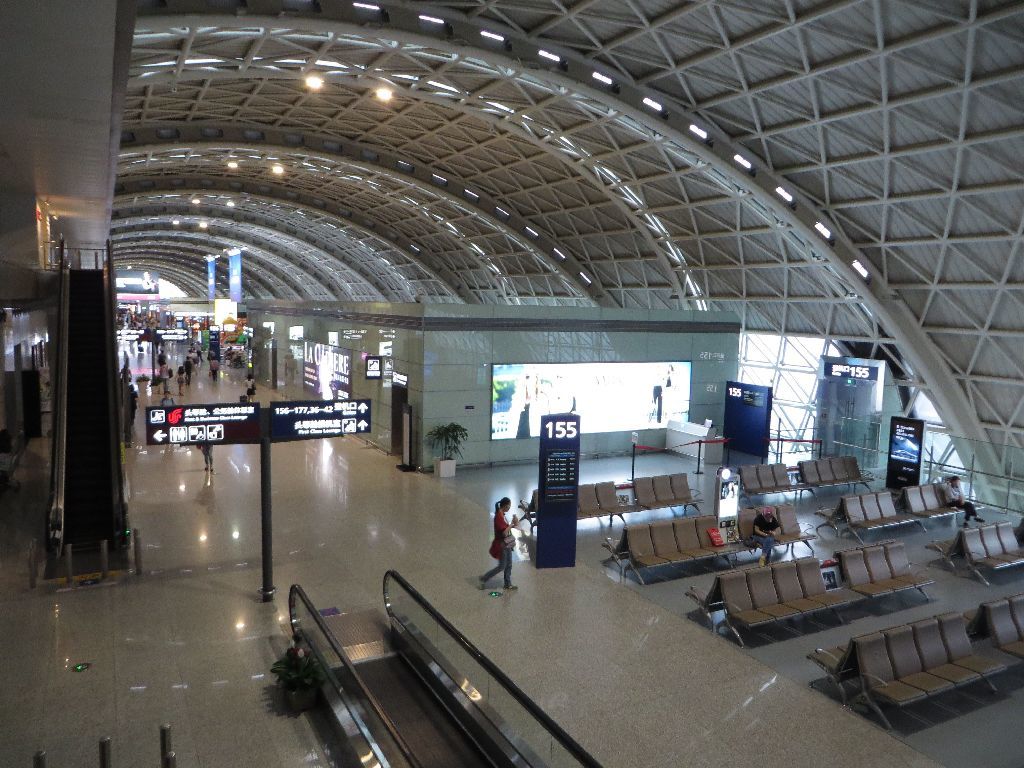
Going alongside a children play area
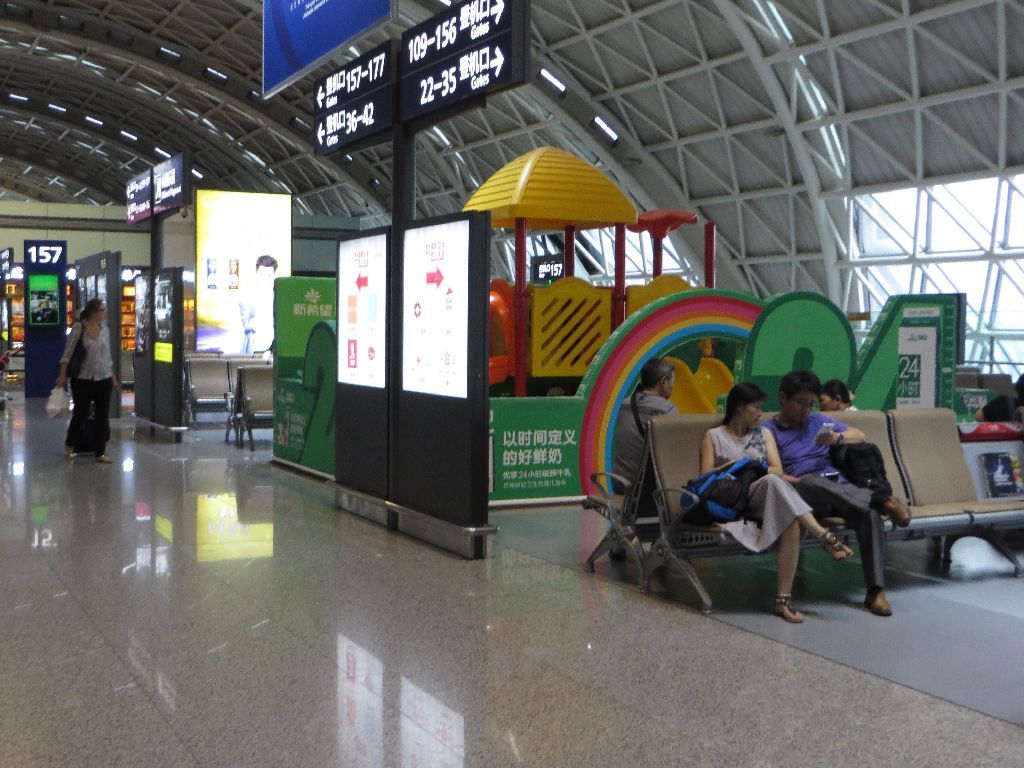
And reaching a boarding room at the lower level : we would be boarding by bus
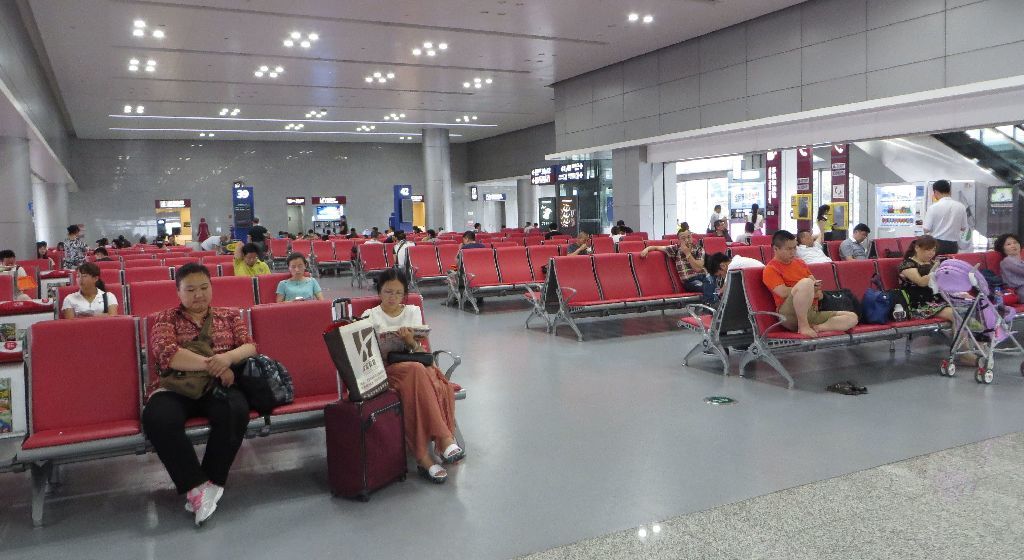
When it is not raining, a bus transfer improves the plane spotting opportunities. In the mean time, this room provides views of planes from a different angle, like this Air China A32x.
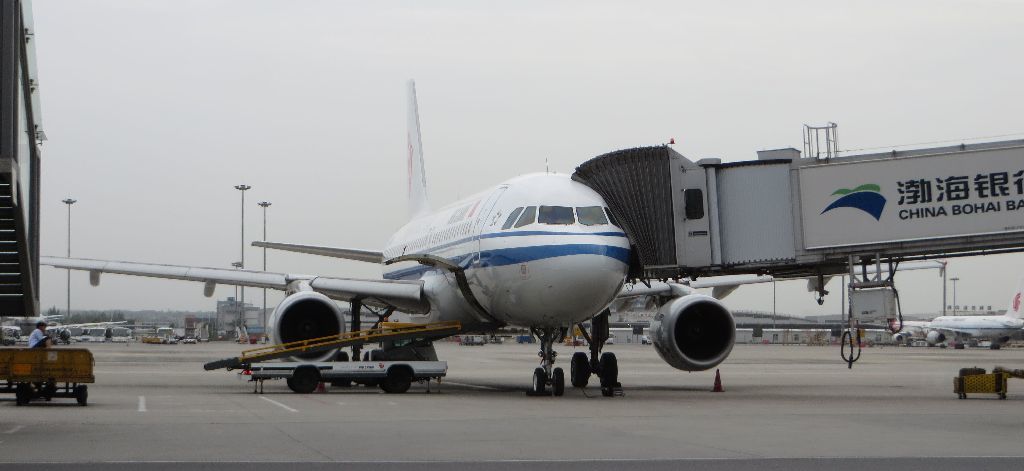
Two twin-engine aircraft of vastly different sizes : a Beech 350 and a Gulfstream IV
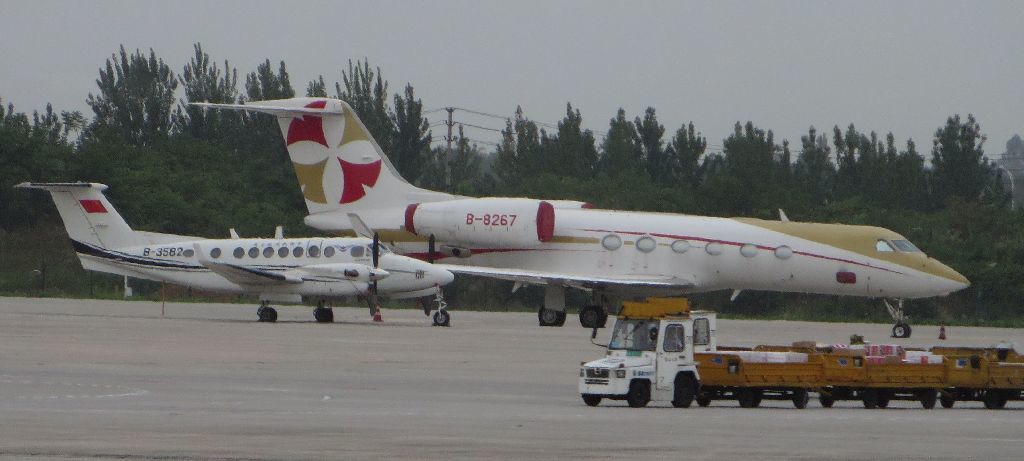
Even bigger : a Yalian Business Jet A318
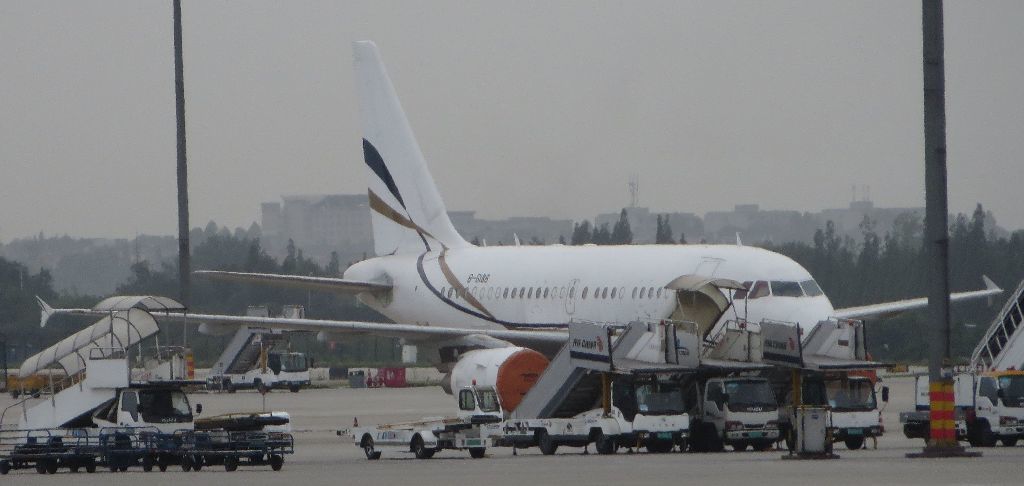
A Chengdu Airlines A320, with a reactor undergoing maintenance. The tail of the aircraft is decorated with the Jinsha solar disk, the prize of a major 21st century archeological find made by chance while building a housing complex in Chengdu.
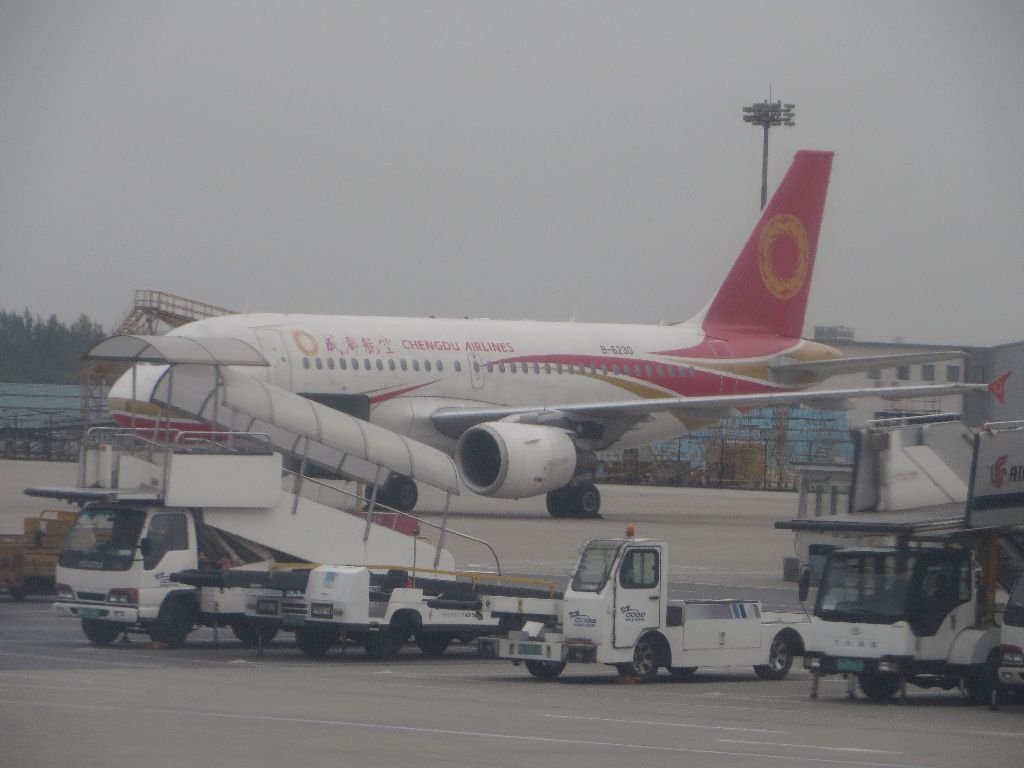
And a Dalian Airlines aircraft, whose livery on the tail and winglets made it clear that this airline is a subsidiary of Air China.
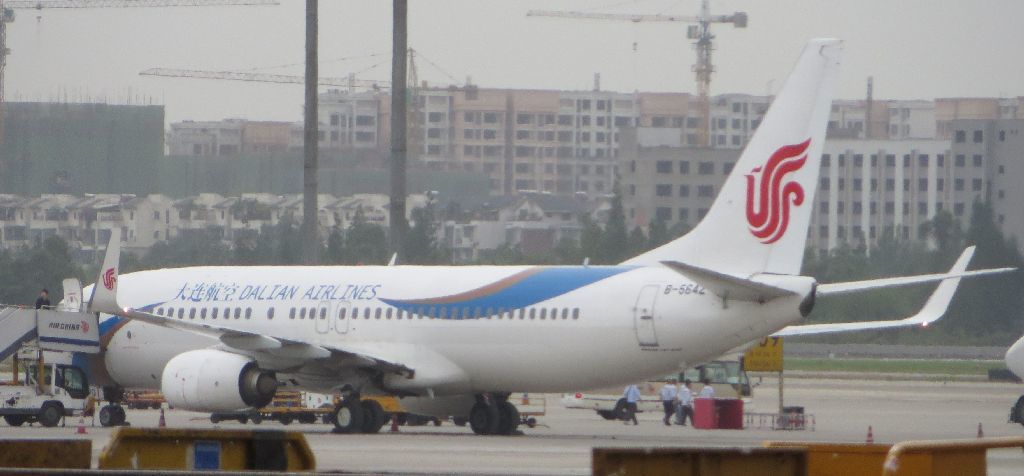
This was the explanation of the absence of Xi’an (XIY) in the list of destination on the FIDS : our flight was actually heading to Dalian (DLC), stopping over in XIY. We needed to pay attention to the flight number, which is a share code reference in this picture.

But then ? A flight which would continue to Dalian, a parked Dalian Airlines aircraft, a ticket with Air China, the parent company of Dalian Airlines … would I have a good surprise ? The answer would come soon, since boarding was announced on schedule.
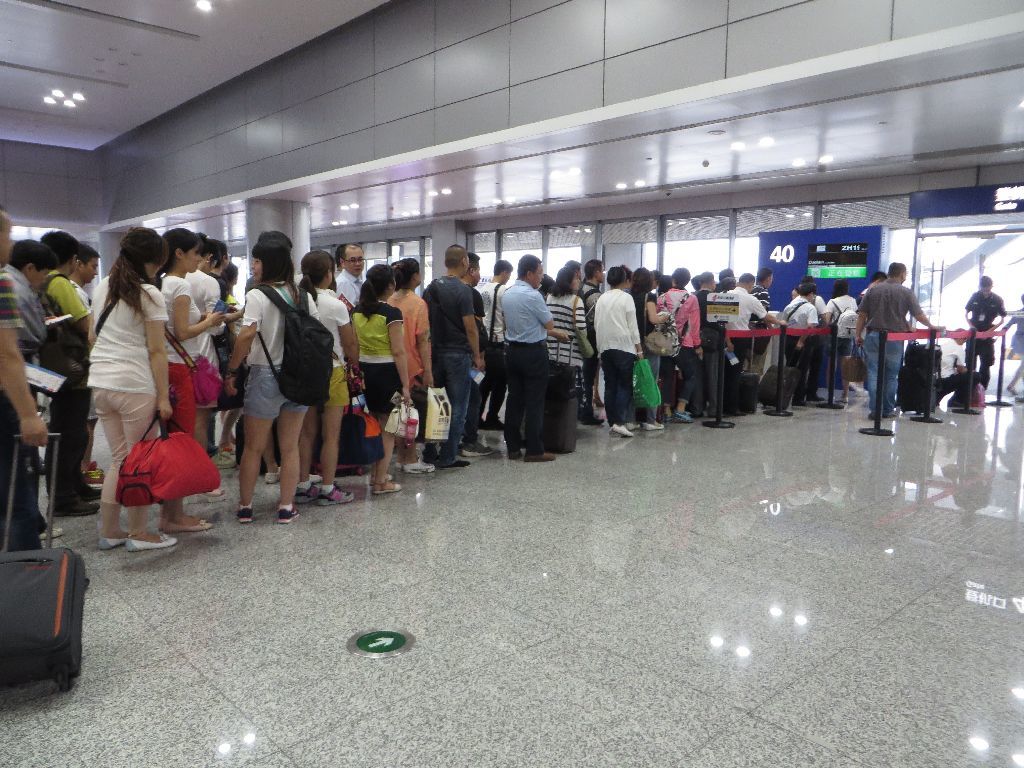
The priorities were respected:
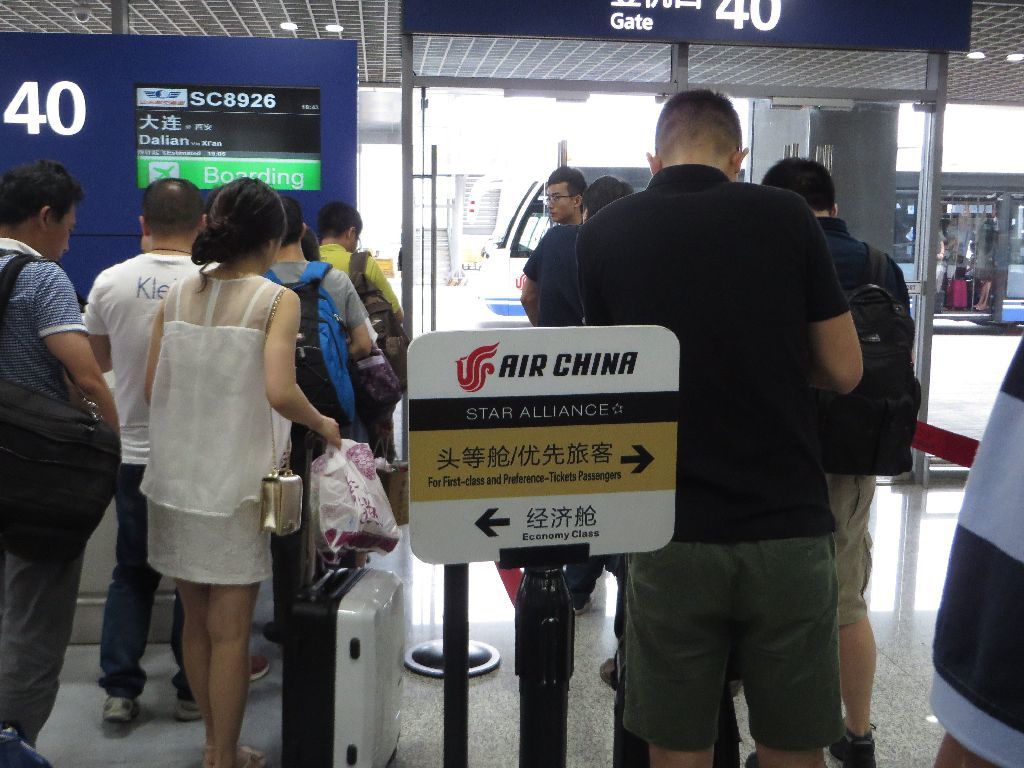
… my *A Gold colleague made the trip in a minibus
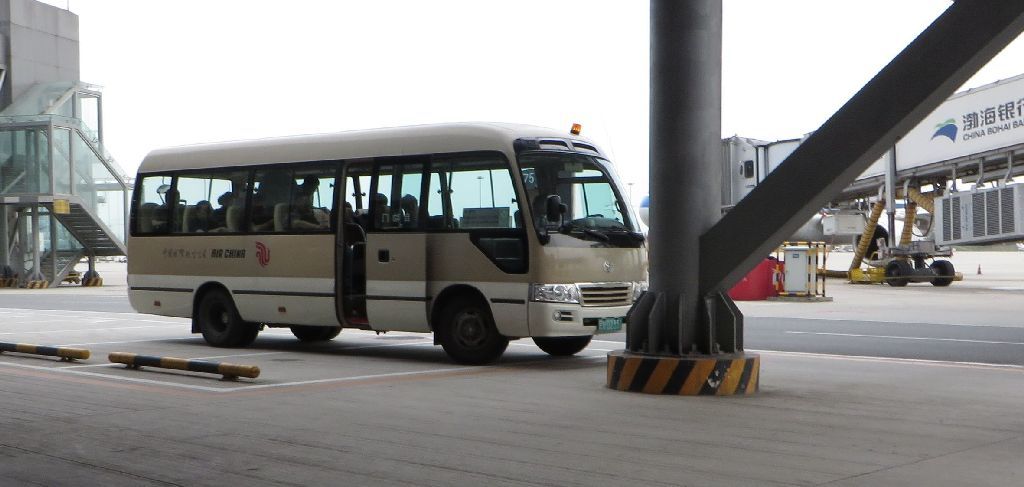
While the ordinary passengers took an ordinary bus

An interesting aircraft, seen with difficulty from the boarding room:
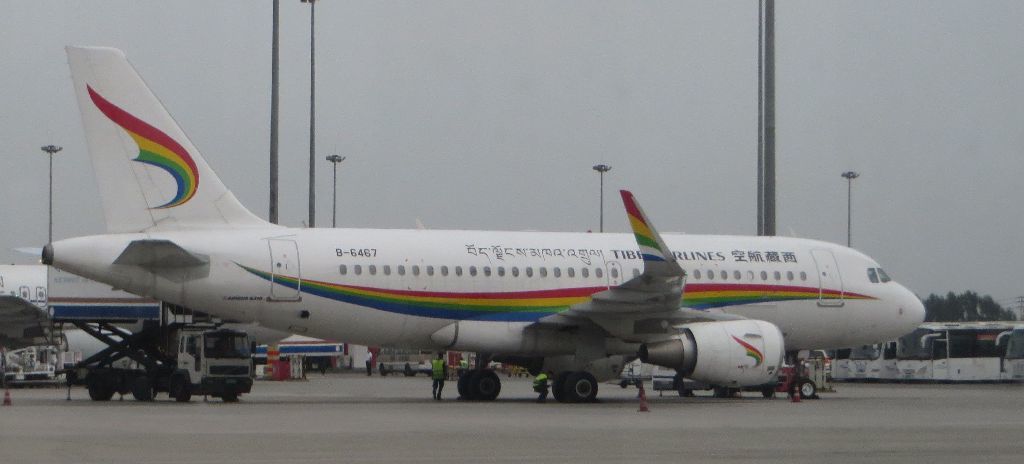
The presence of this Tibet Airlines A319 was no surprise: CTU (and to a lesser extent CKG) is the hub of flights to/from Tibet : the cost of bringing aviation fuel to Tibet may be a reason for not scheduling long distance flights from there.
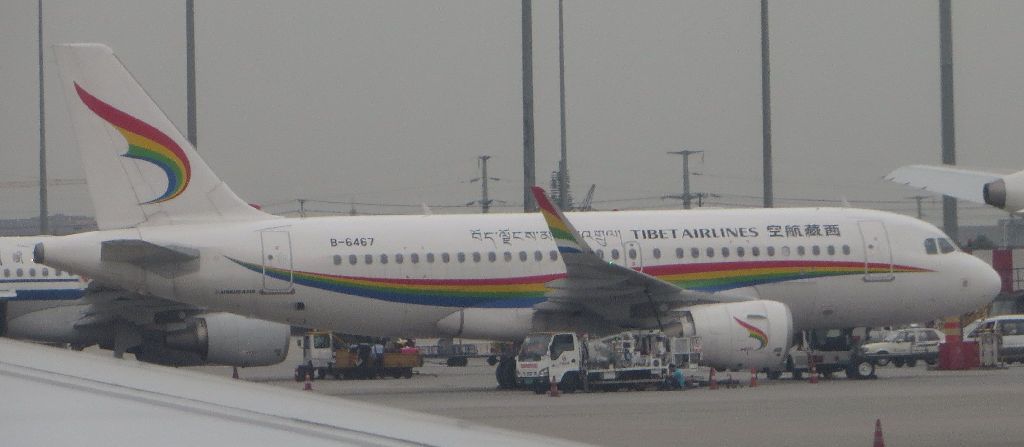
An Air China Cargo 757

The terminal seen from rather far away

This time though, the most interesting plane is the one that I am going to board. My Chinese colleagues chose systematically Air China flights, but they nevertheless unwittingly offered me a new airline in my list: its subsidiary Dalian Airlines! This airline was not even in Flight Report’s data base when I posted the French version of this report!
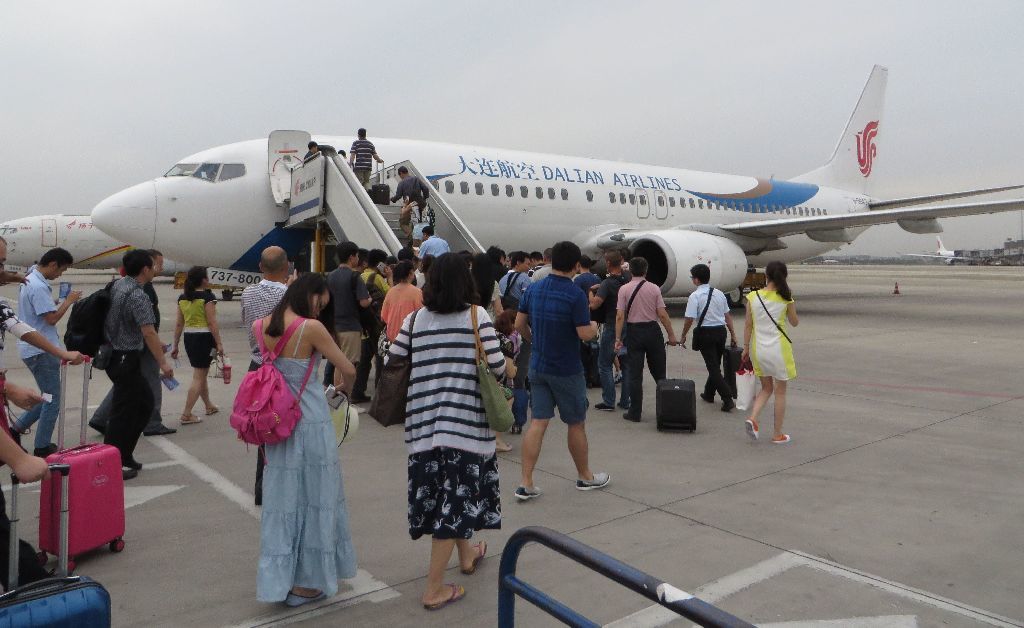
The name of the airline
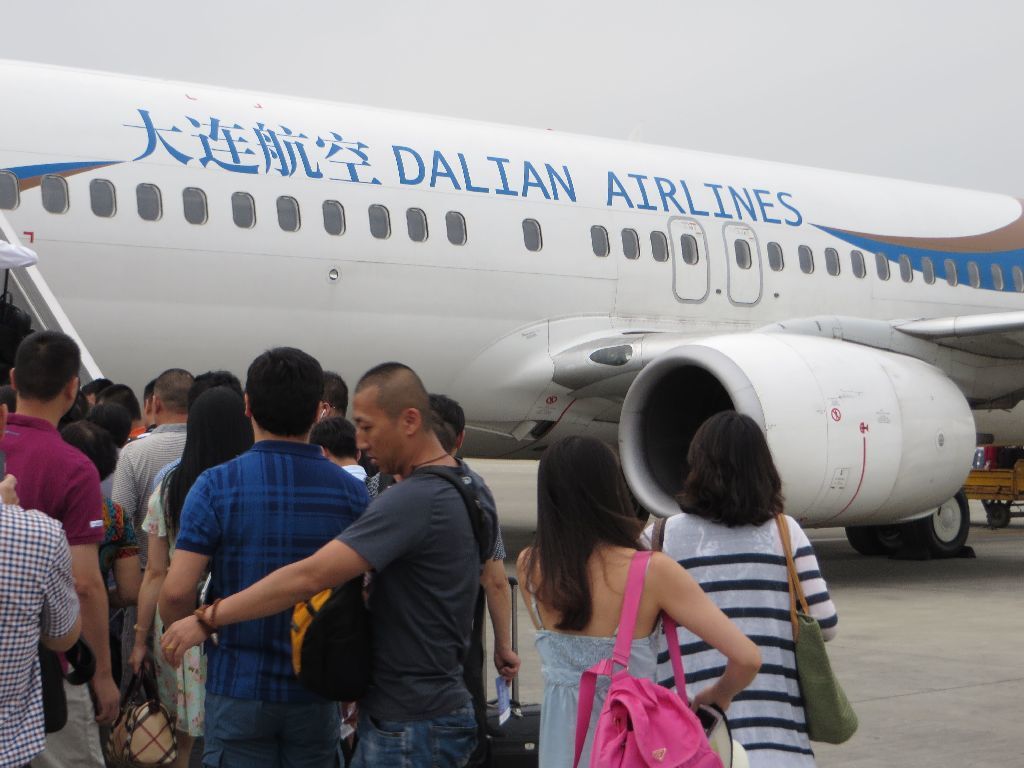
And the plane’s number. The tail’s livery is identical to that of Air China: only the fuselage is different.
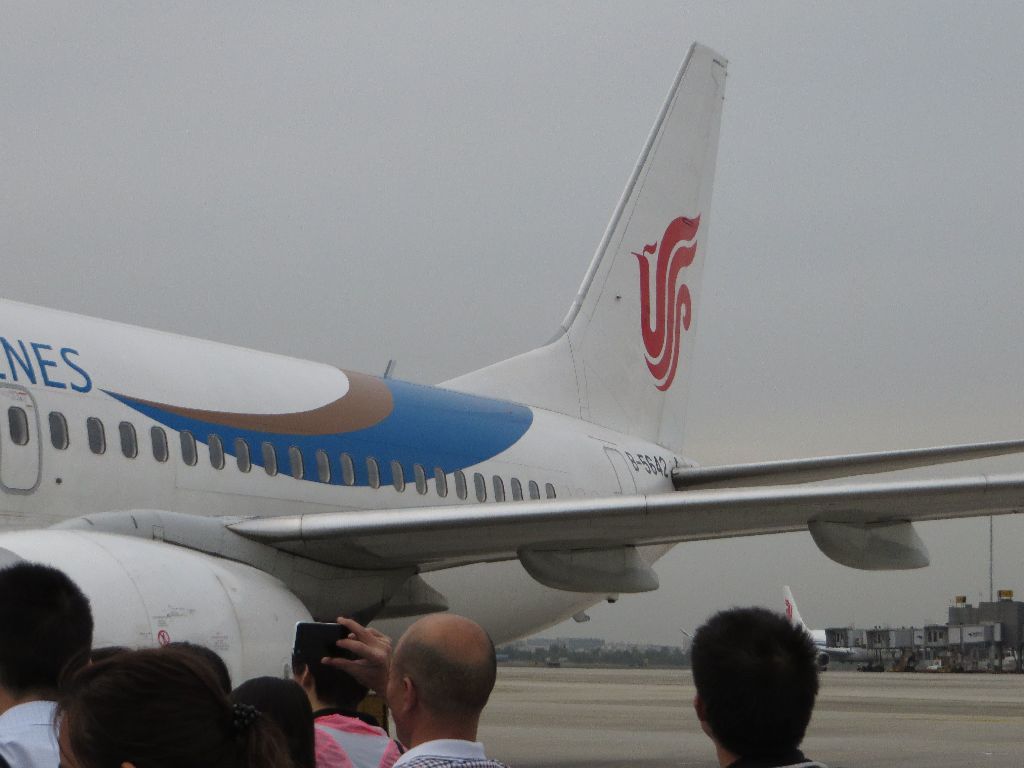
Note that I was not the only one taking pictures of the plane. I have never had any restrictions about taking pictures in Chinese airports, and my reports always have a tiny portion of all the pictures I accumulate.
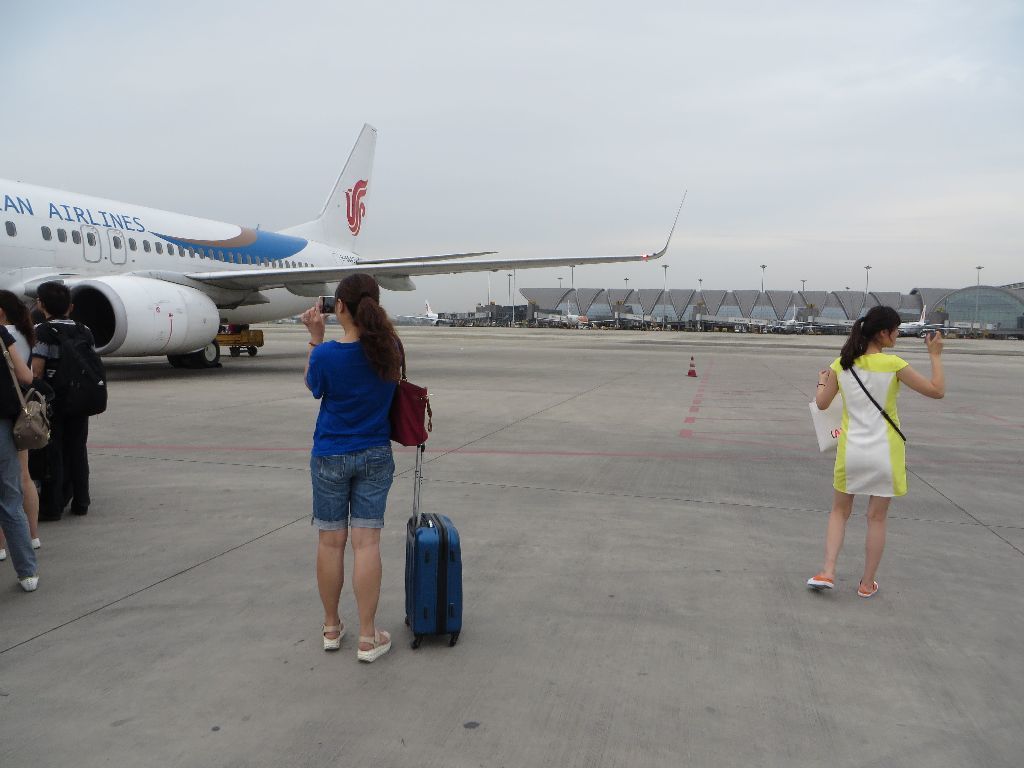
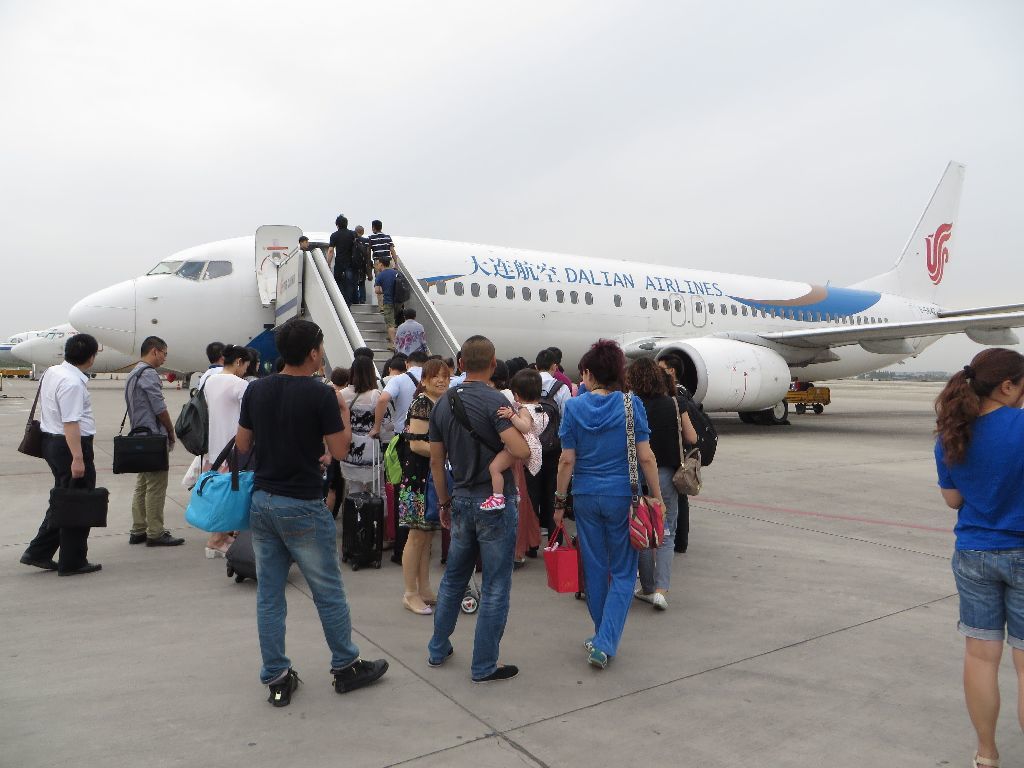
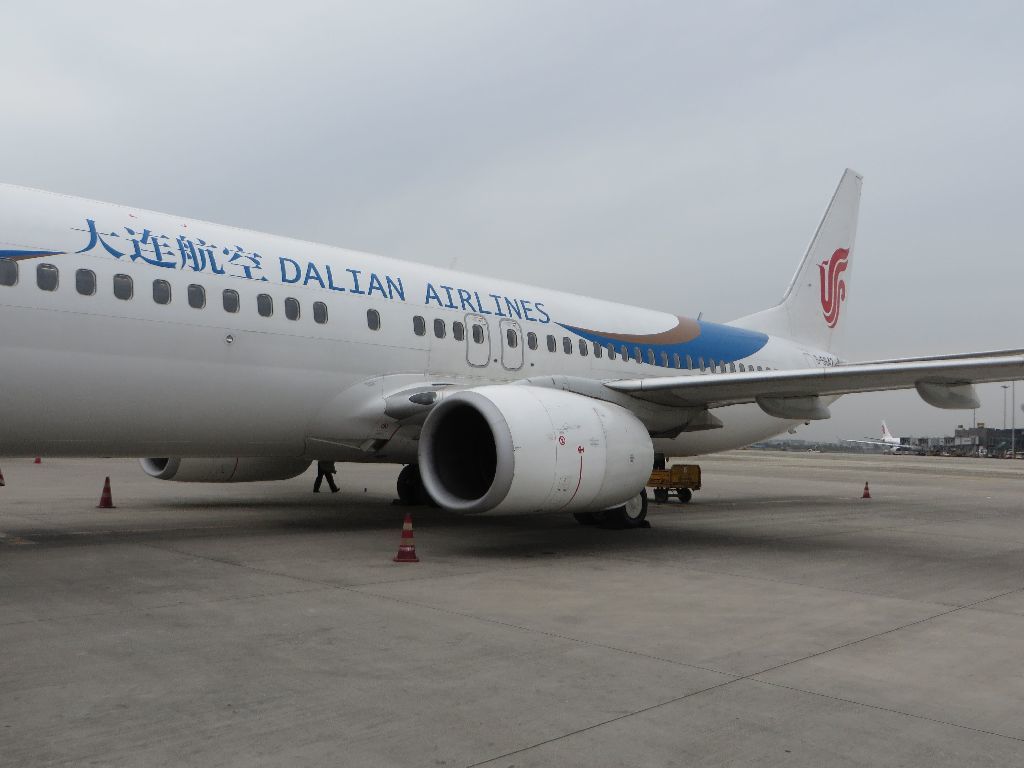
I was nearly the last passengers up the stairs
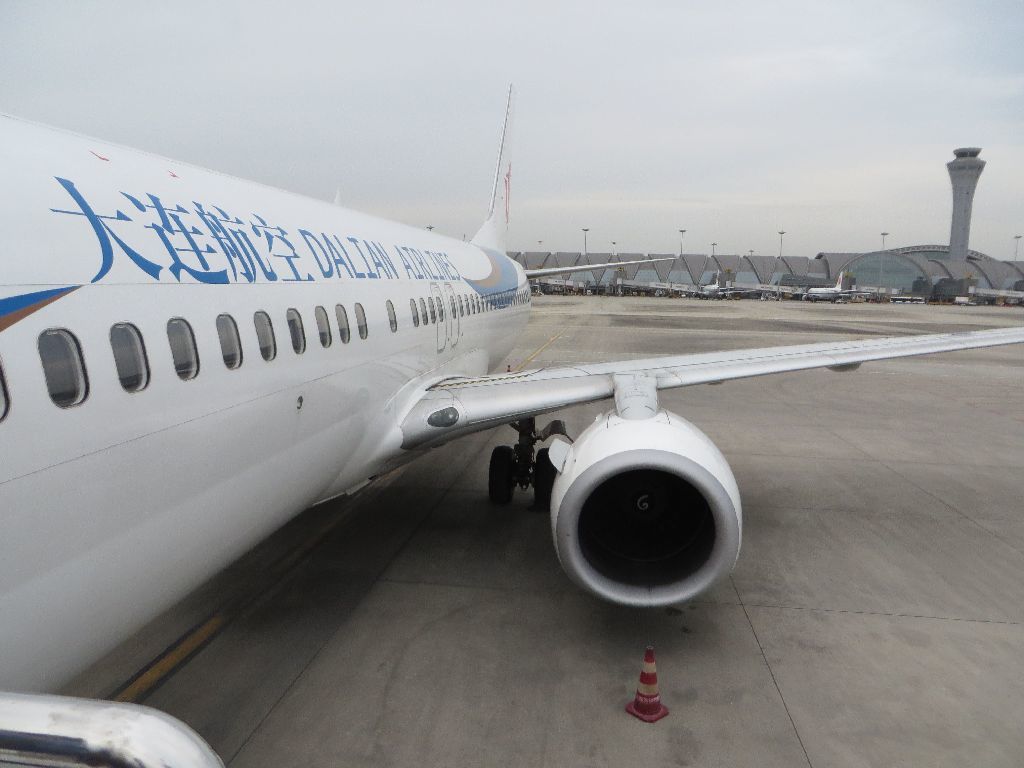
There was no error : this plane belonged indeed to Dalian Airlines. Taking this picture gave me an additional smile from the FAs welcoming the passengers on board.

We found the usual two J rows in 2+2 layout
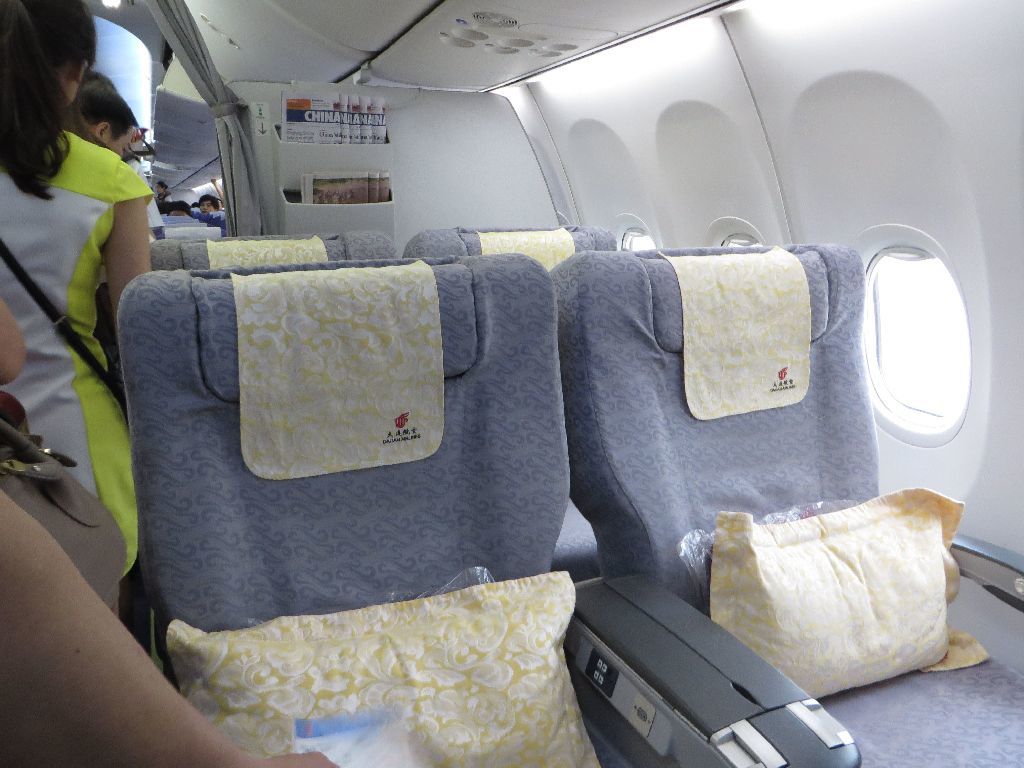
But the antimacassar was embroidered to Dalian Airlines’ name .
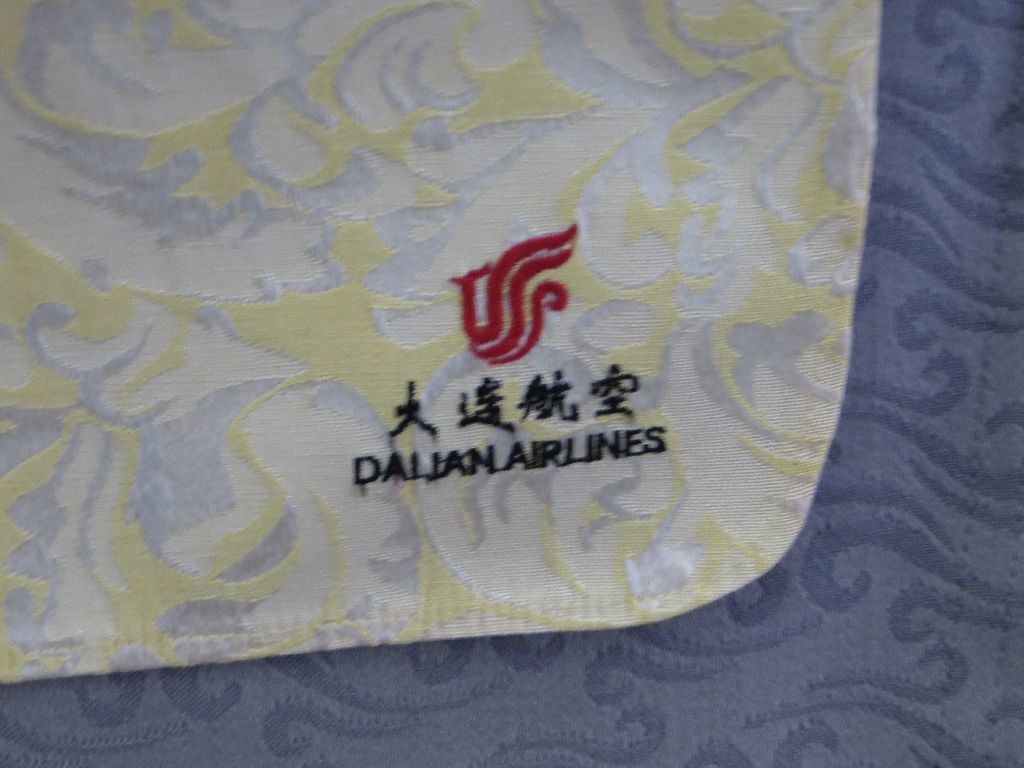
Same for the Y cabin

… but the antimacassar are of course in much cheaper non-woven fabric, with a printed logo

Newspapers in Chinese were available at the beginning of the Y cabin.

My seat, of course a window seat
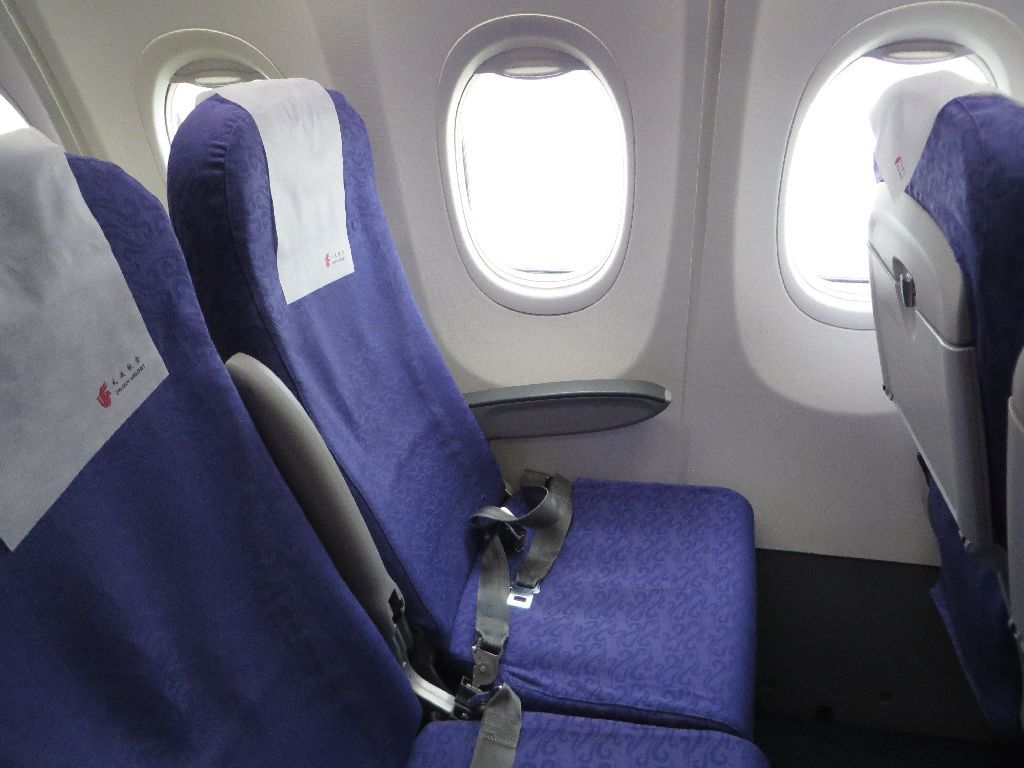
I had the half row to myself, at first
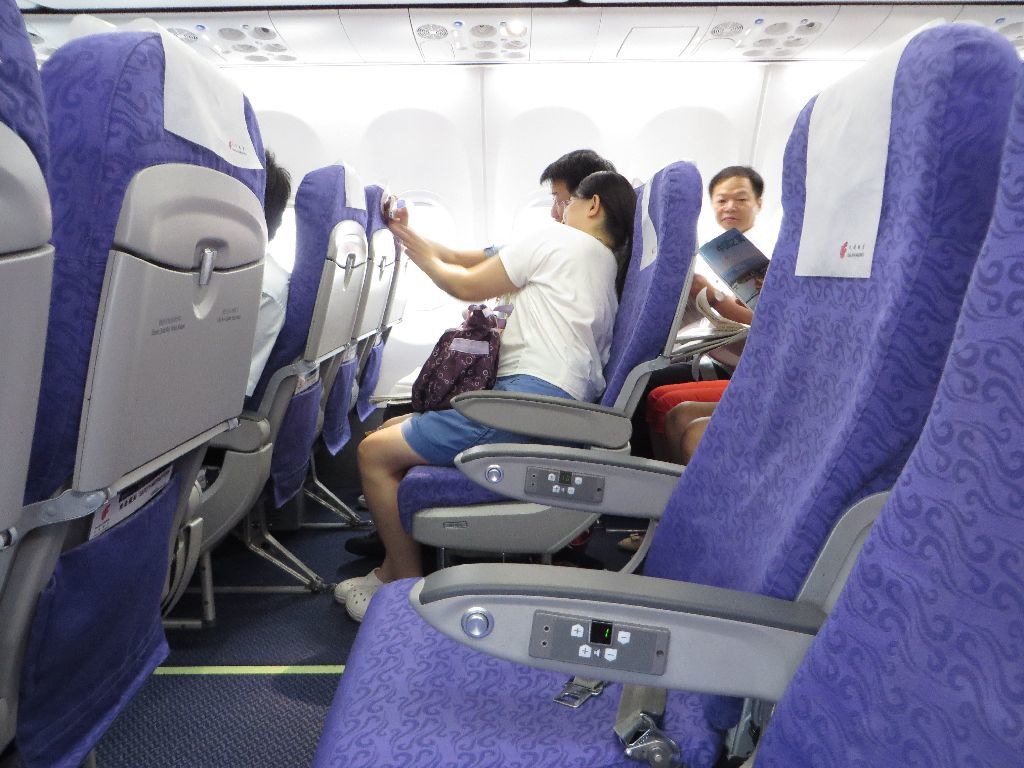
The scene form my seat as boarding went on
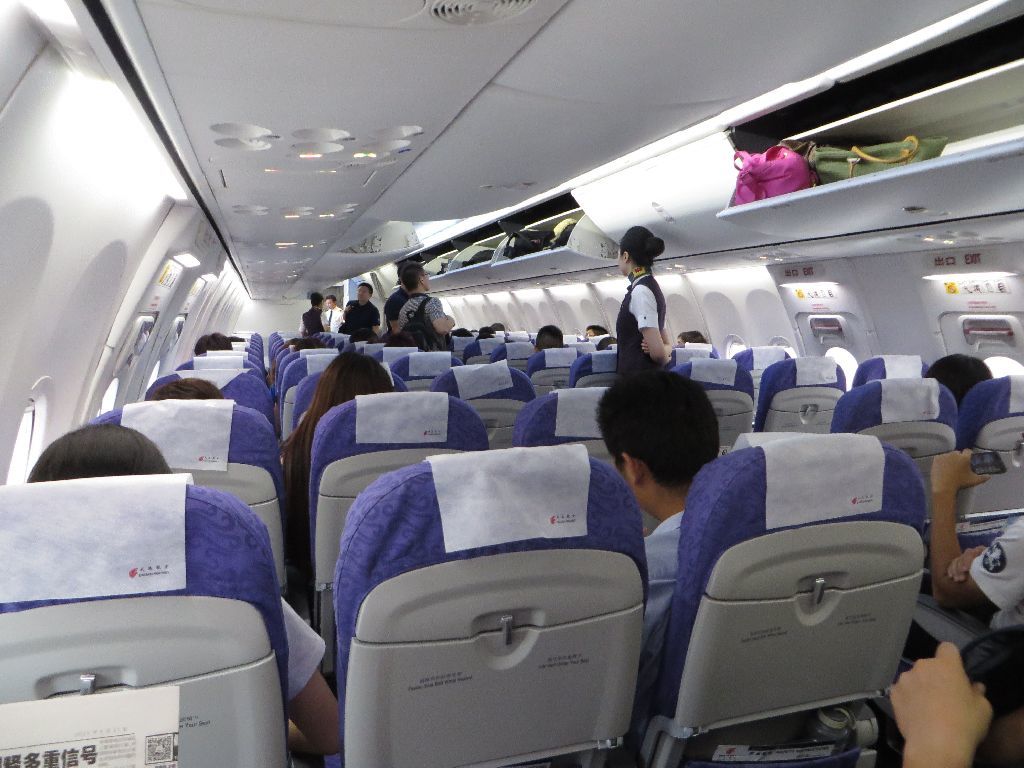
Focus on the scarf of a FA
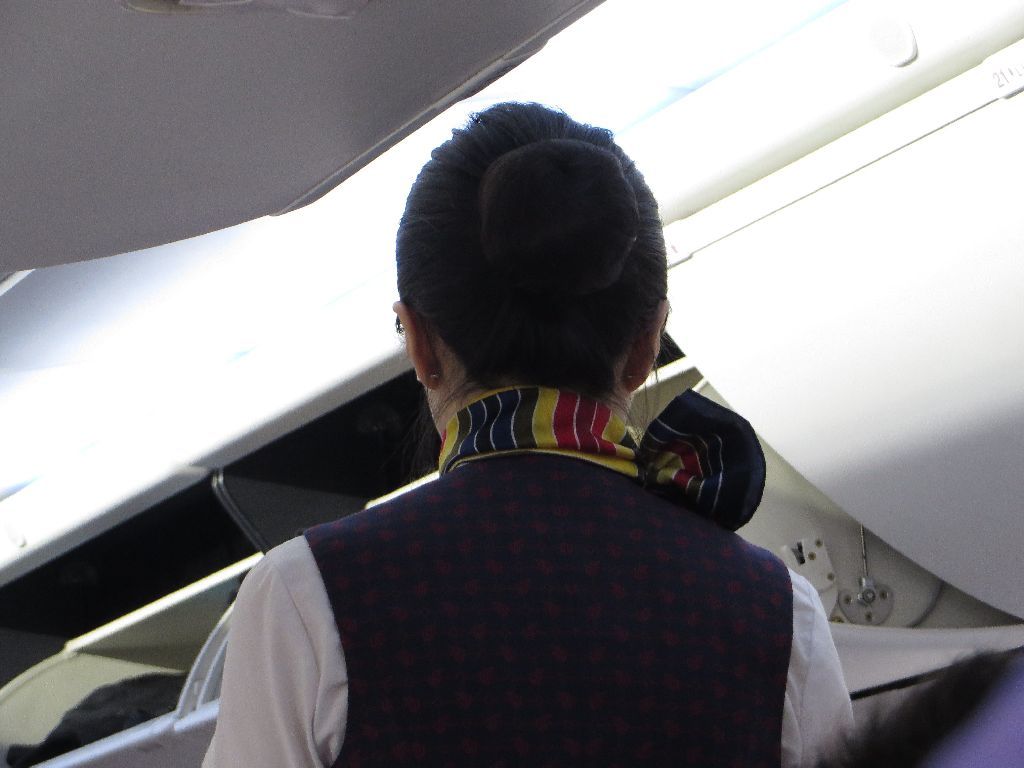
I could not expect to keep this half row empty: a second bus arrived:

The seat was by Recaro, according to the logo on the table tray support
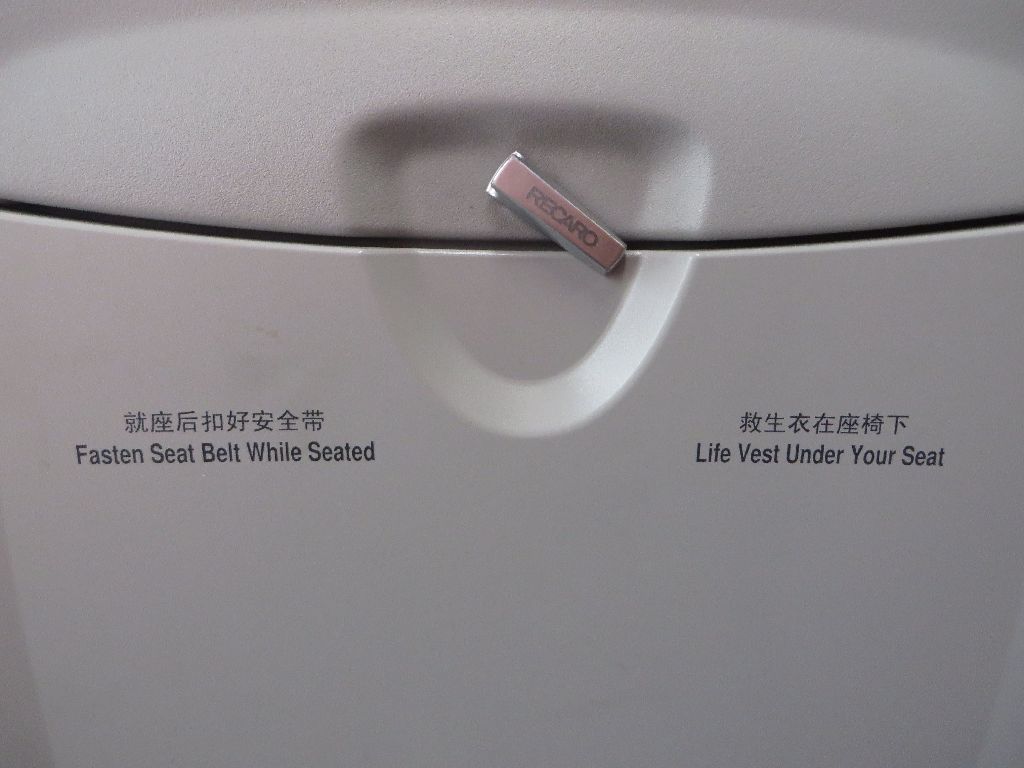
The safety instruction sheet, with Air China’s logo
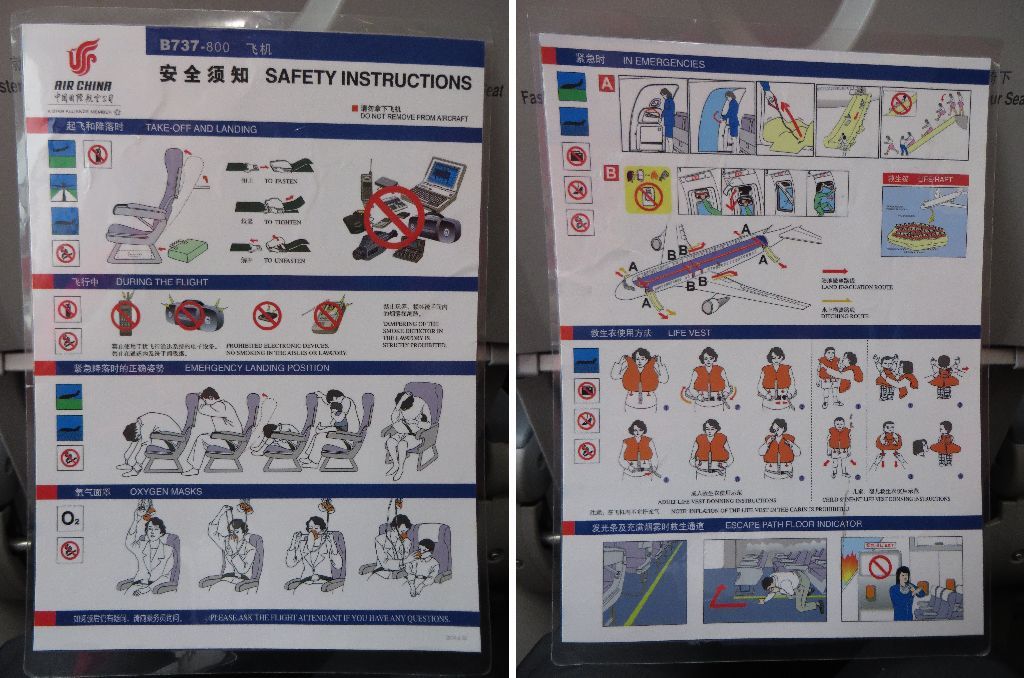
The seat pitch could also have Air China’s logo : it was the same as on the previous flight
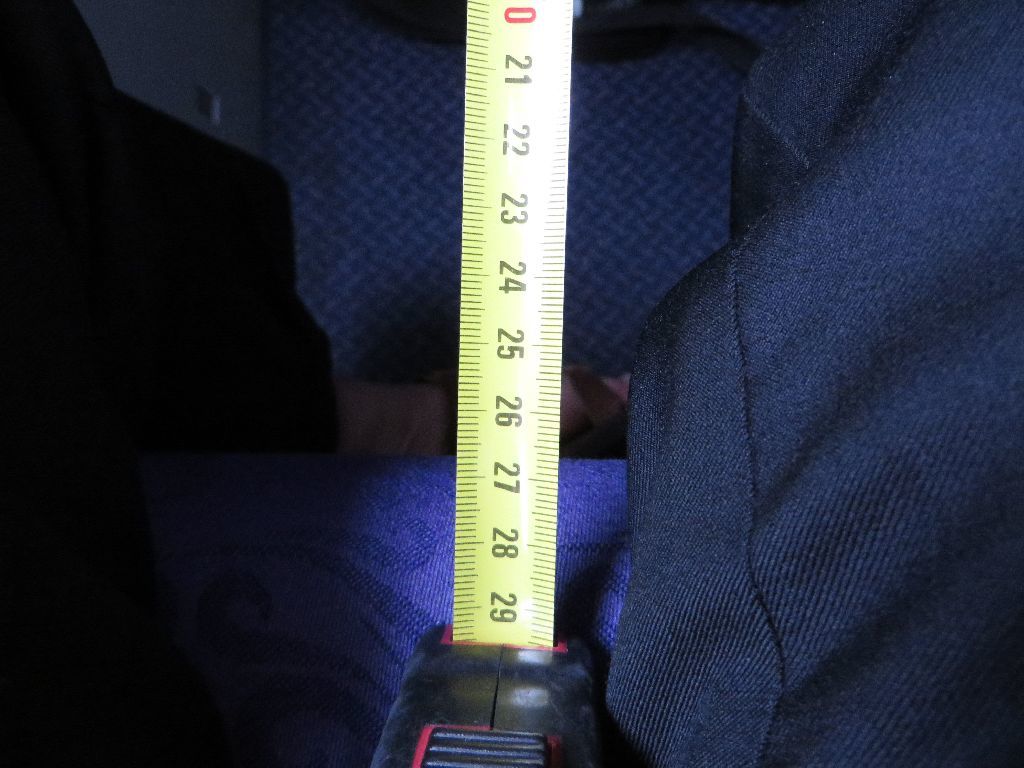
A 737-700 converted for freight for Yangtze River Express. It was unusual in being registered B-3000, appearing in a specific font.
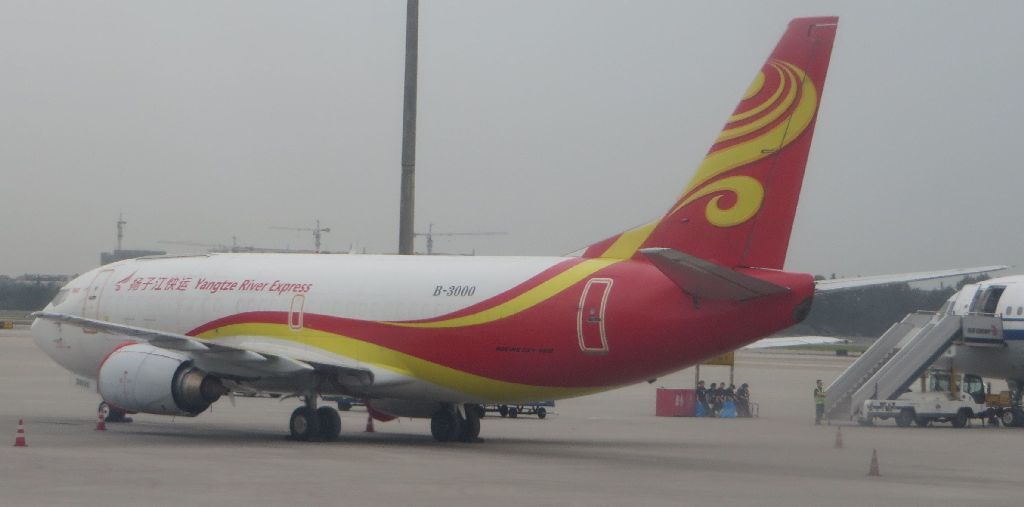
The salute of the ground staff… after a long wait, because “due to air traffic control”, we started taxiing twenty minutes after boarding was completed.
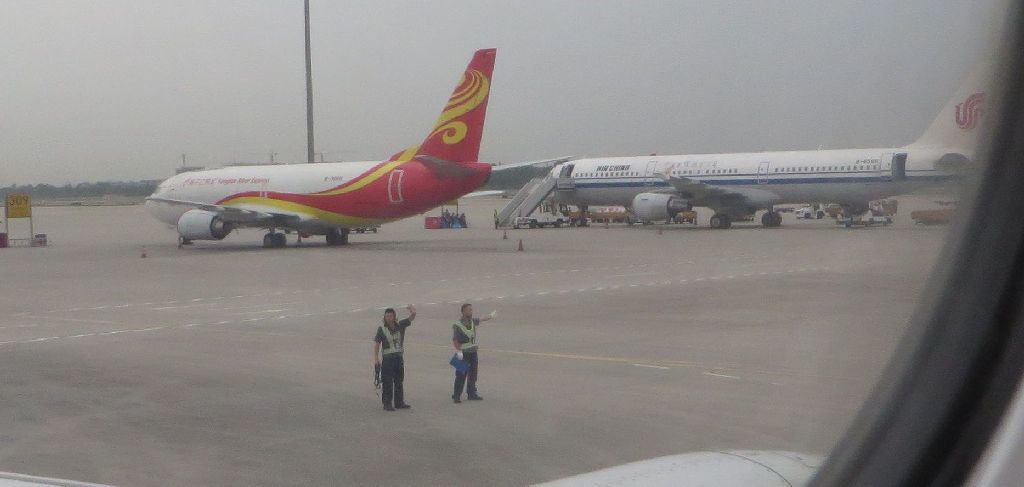
A CA A321 seen while taxiing
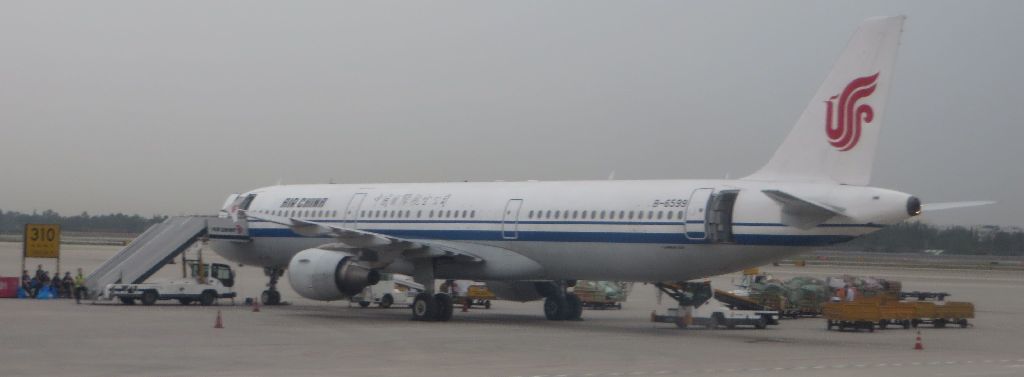
The safety demonstration was on the IFE screens, with a sign language interpreter.

A Gulfstream V seen shortly before reaching the runway. It belonged to the Hongda Group, a letter apart but of course unrelated to the Japanese car-maker.
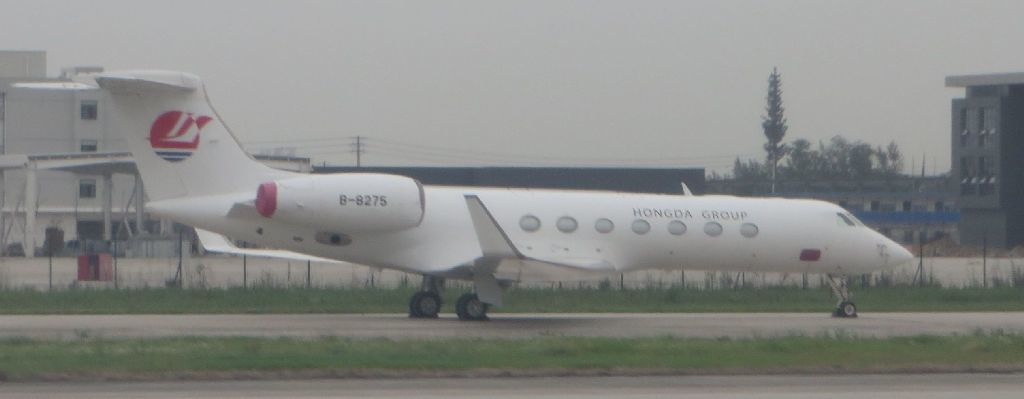
Take off
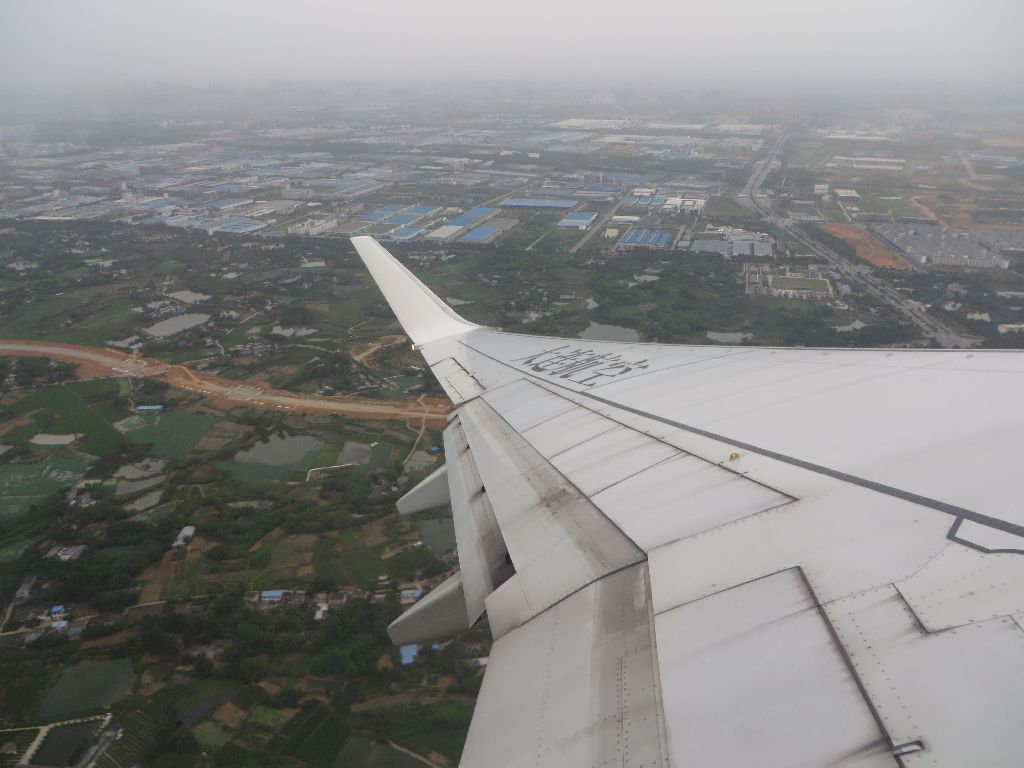
Focus on the 大连航空 (Dalian Airlines) marking on the wing
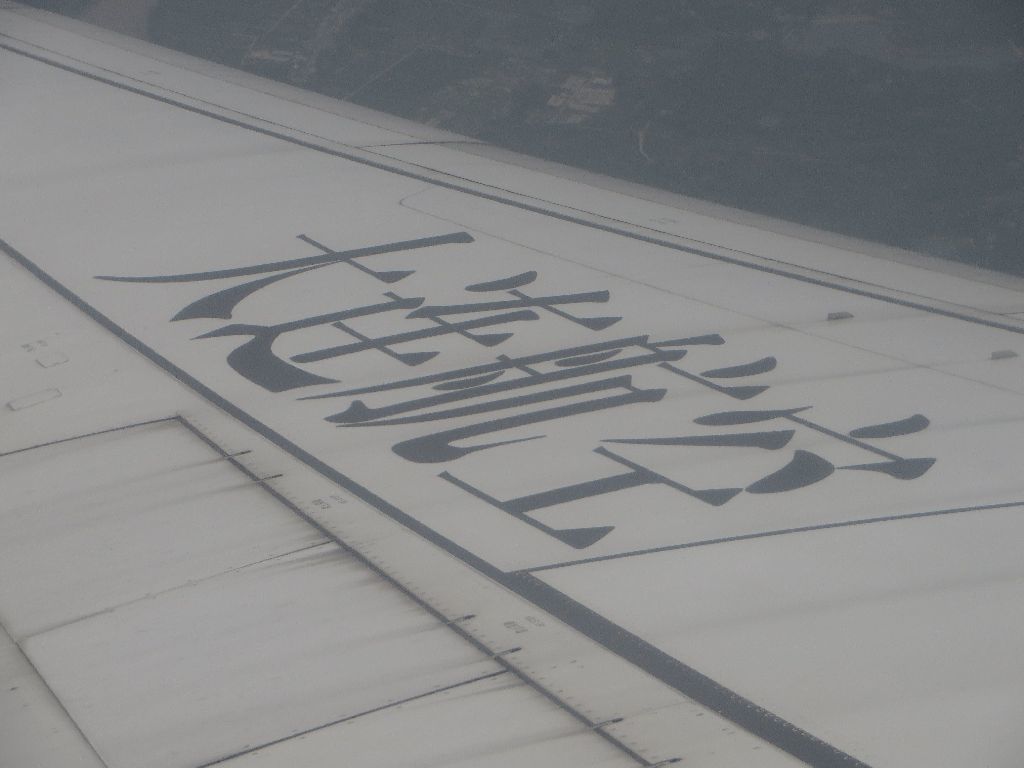
An interchange and the toll gates
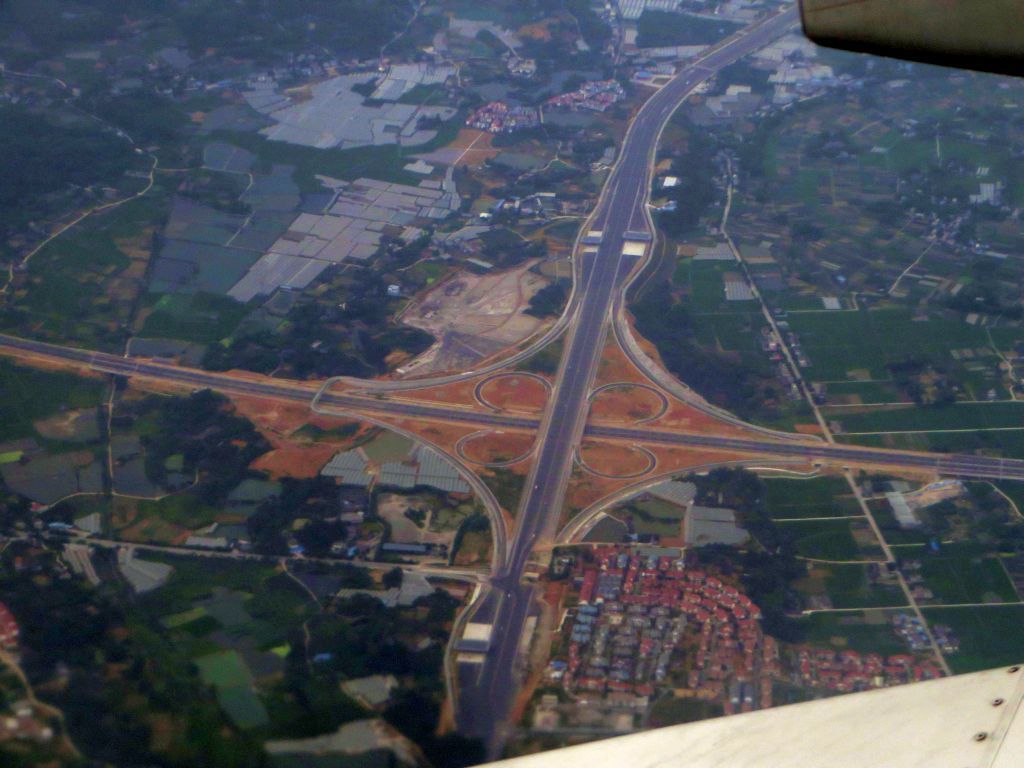
The plane had a Sky Interior feature
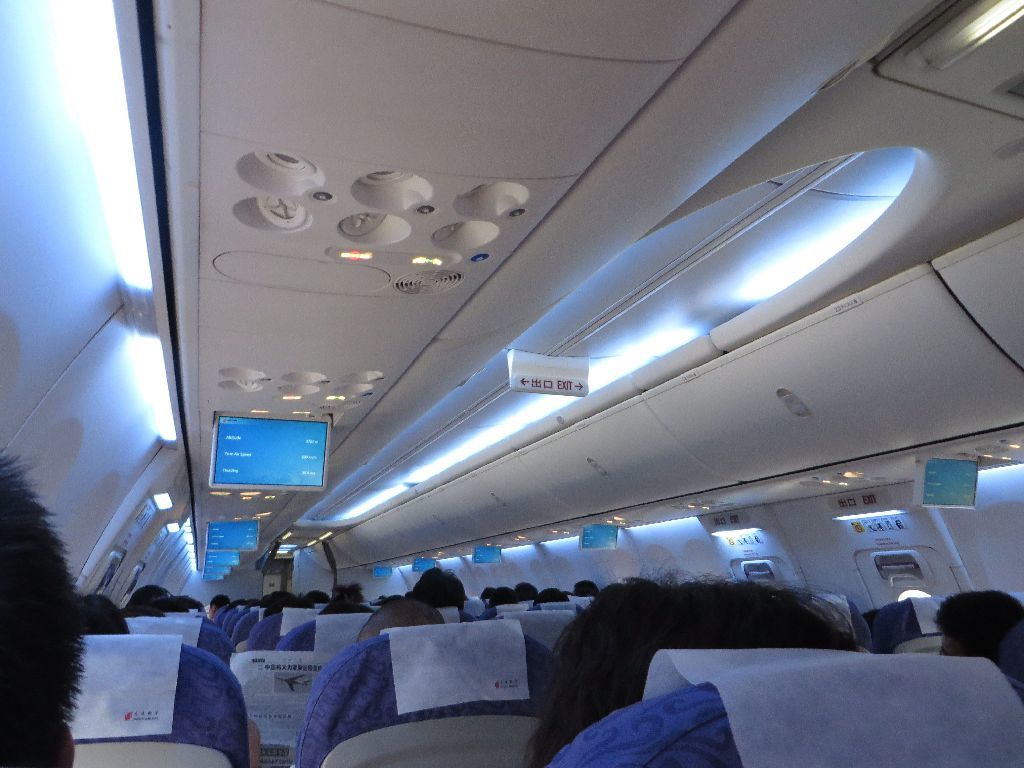
The IFE screens display the airshow
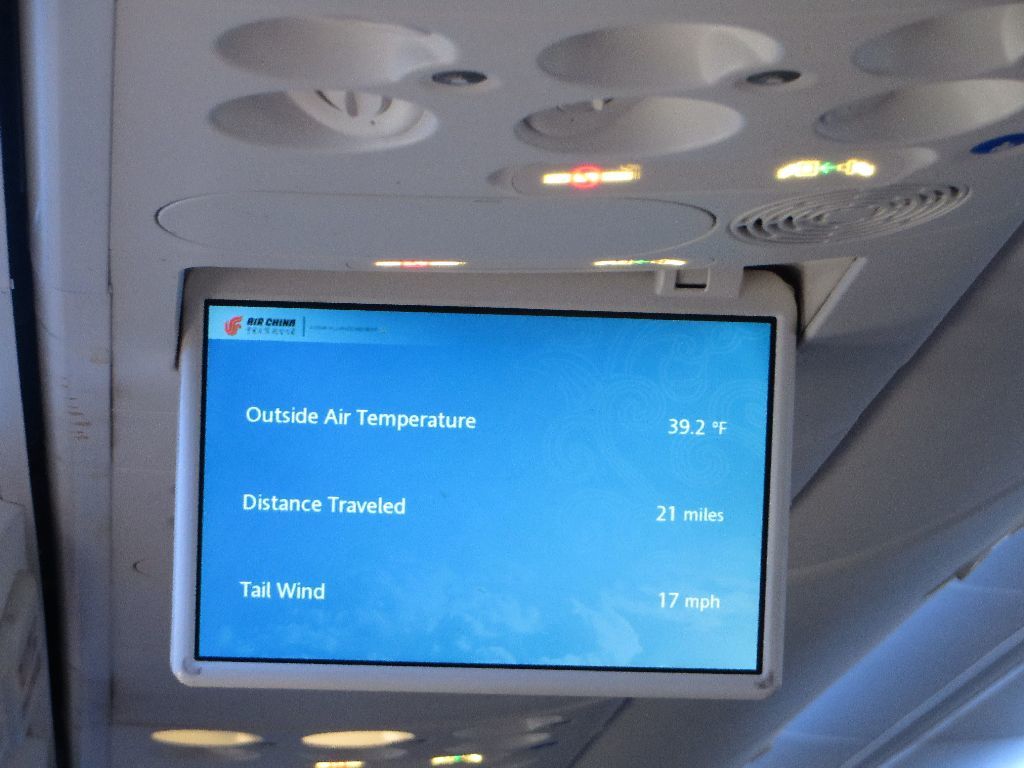
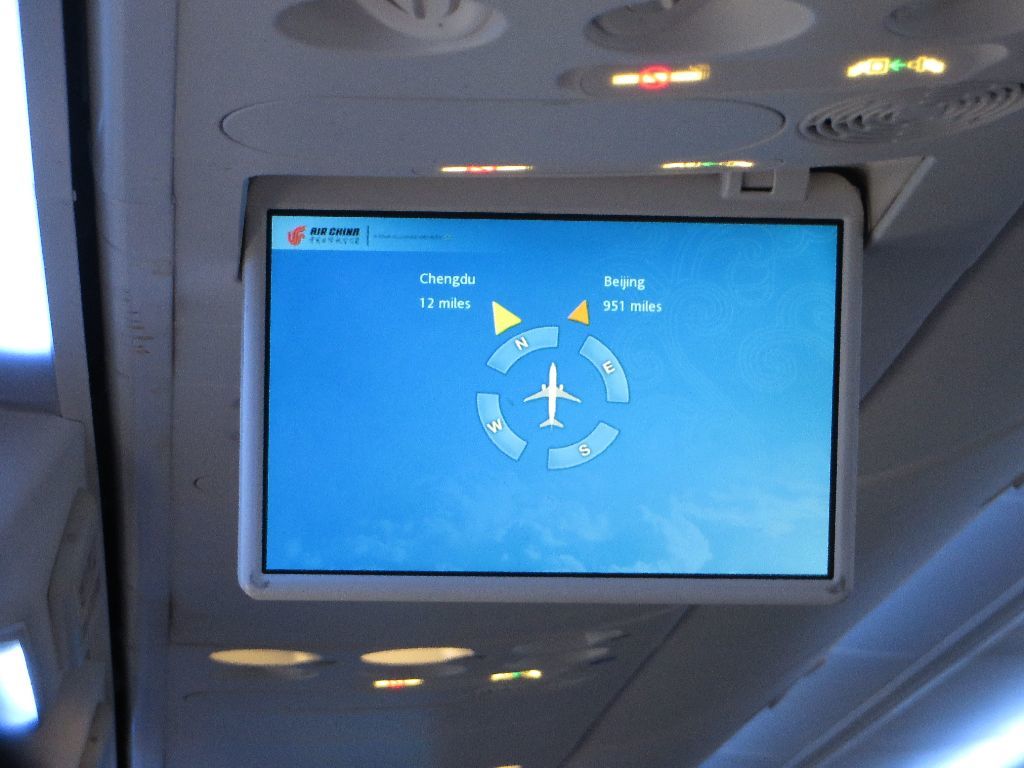
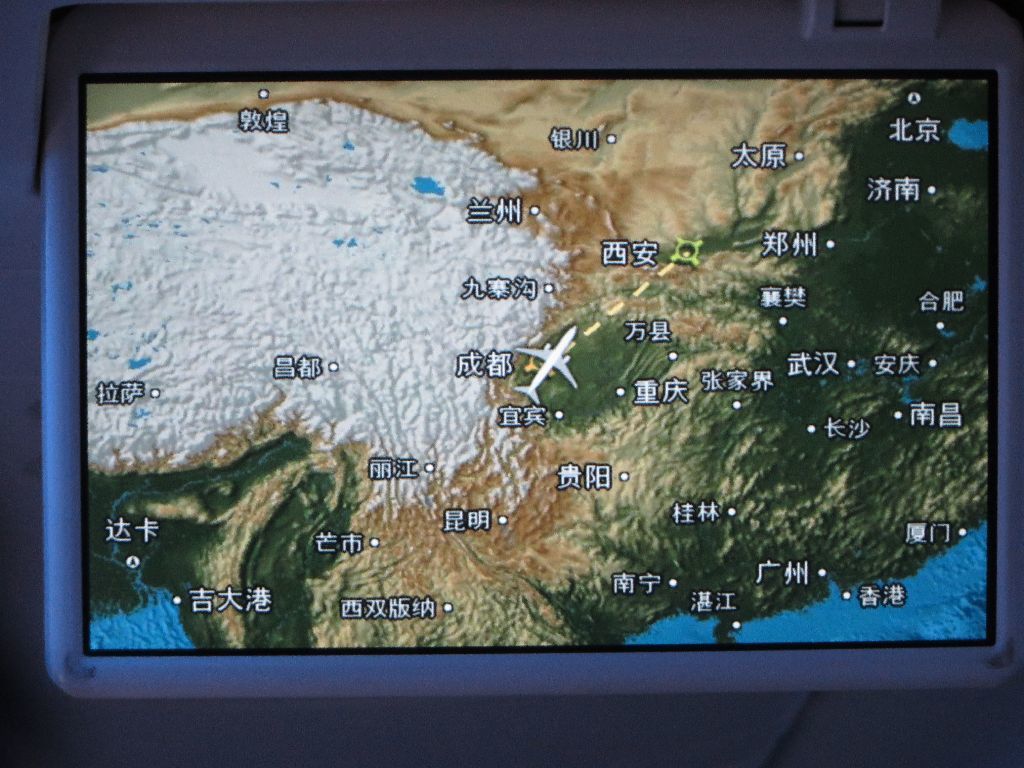
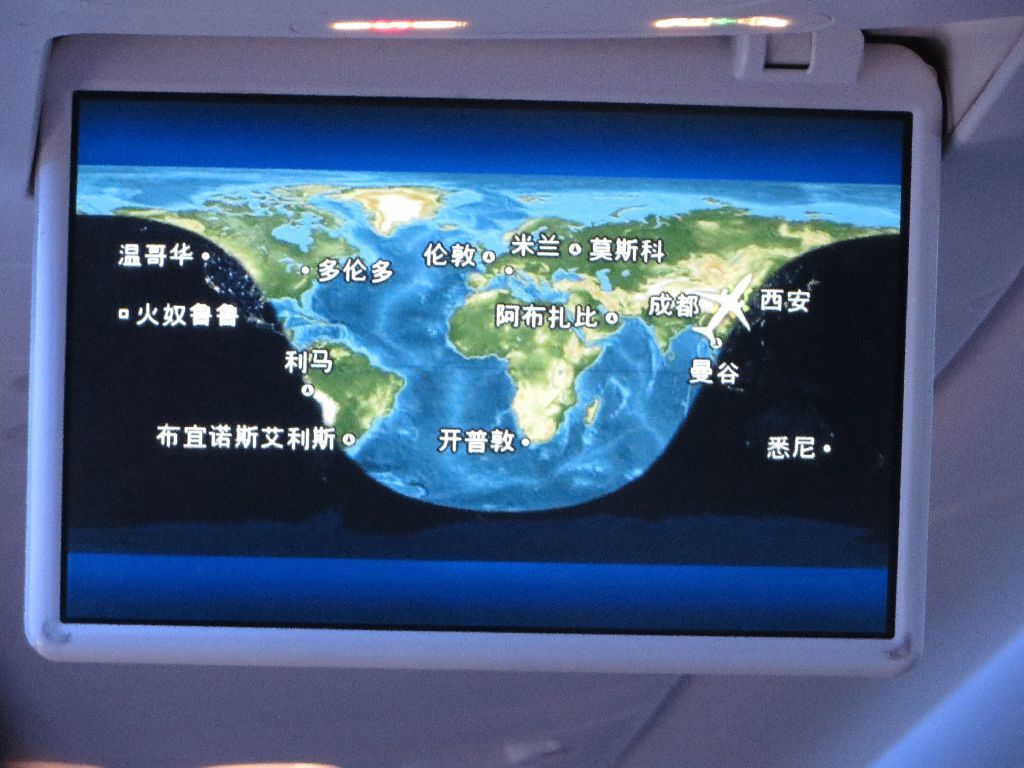
The sun set in accordance with the screen below
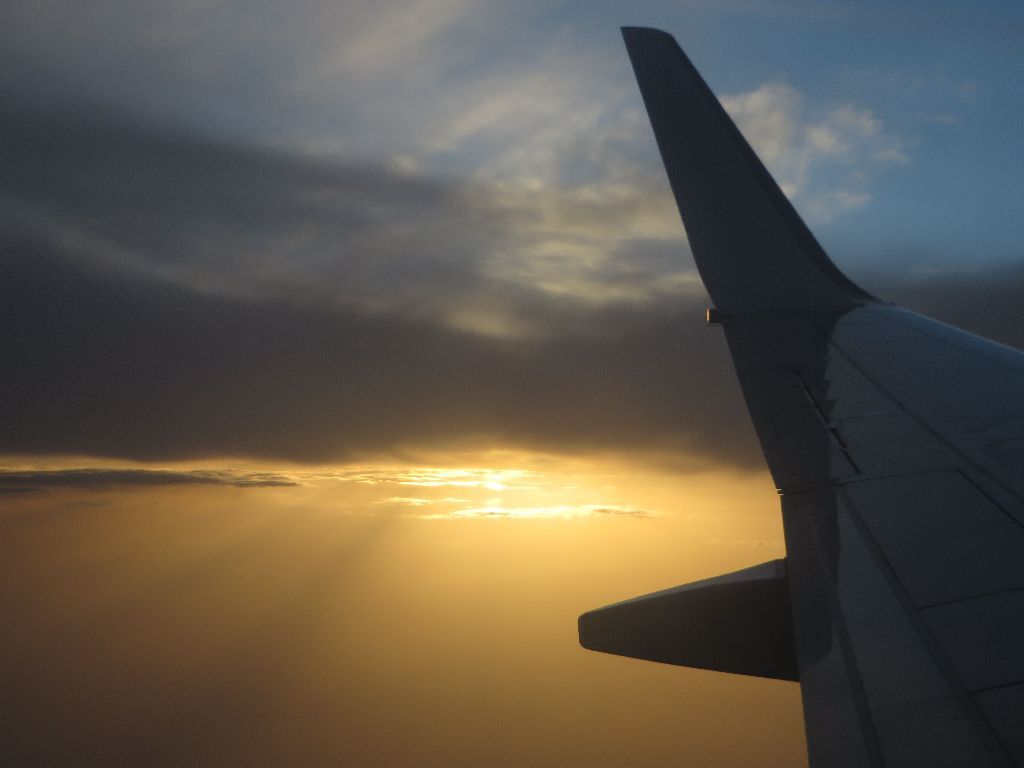
The meal is not generous by Chinese standards : a small sandwich and an equally small bottle of water.
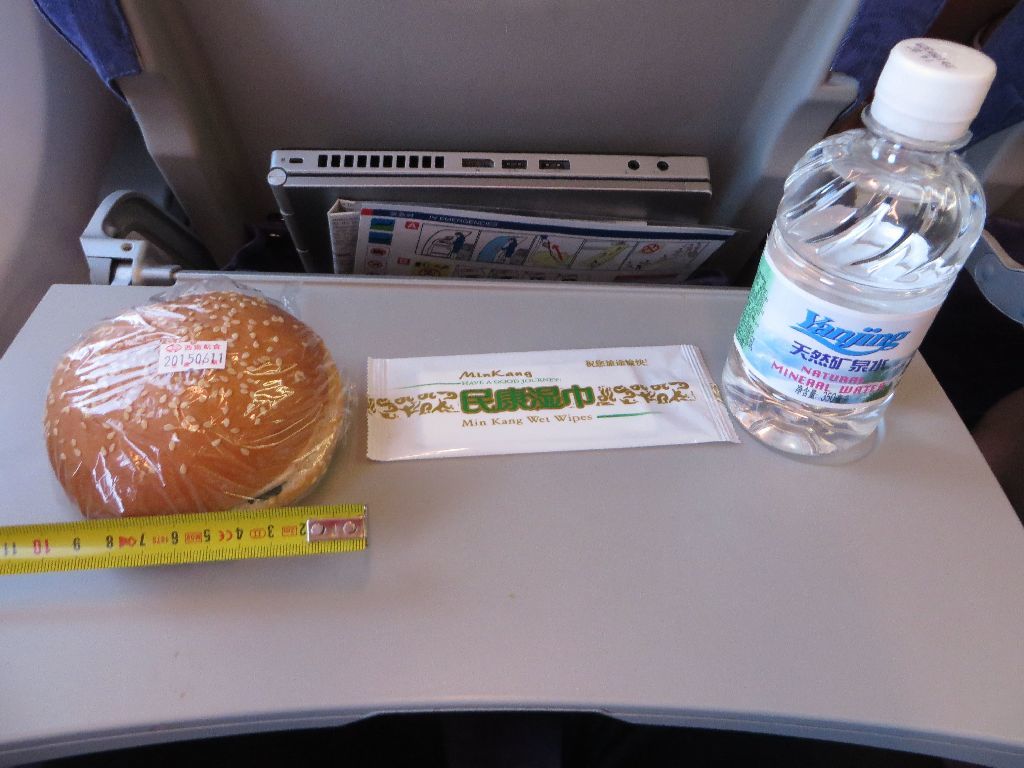
About 8.5 cm diameter
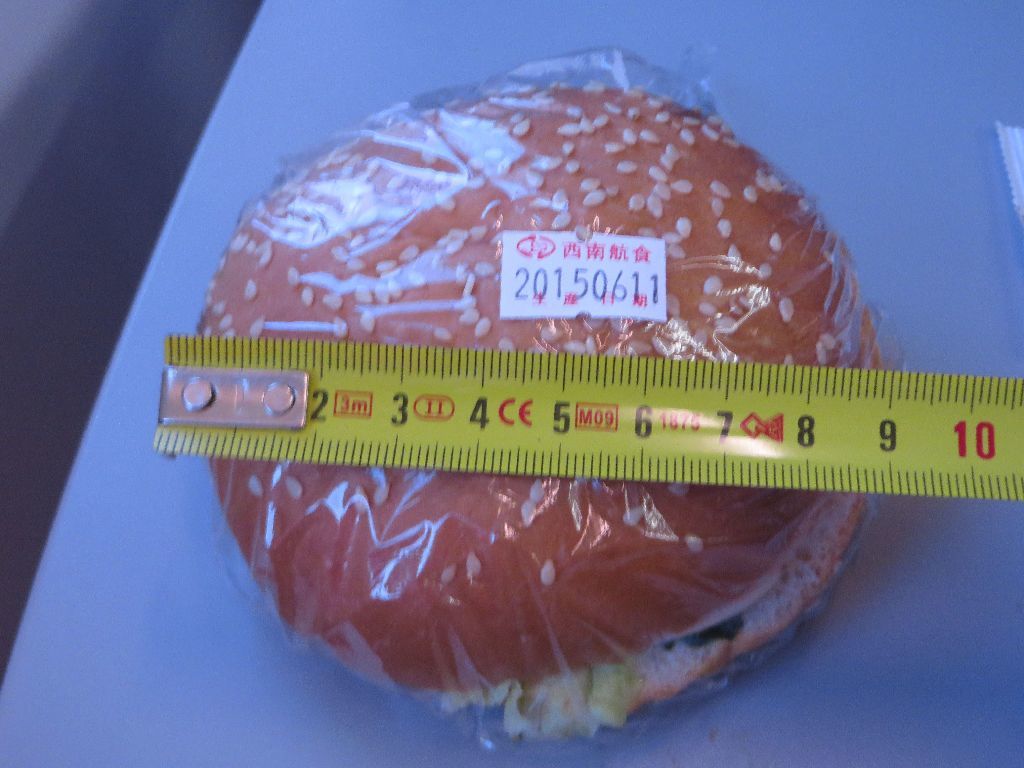
… and not much inside. But remember that this was a flight with a stopover, and that the passengers to Dalian probably had a second serving on the leg.
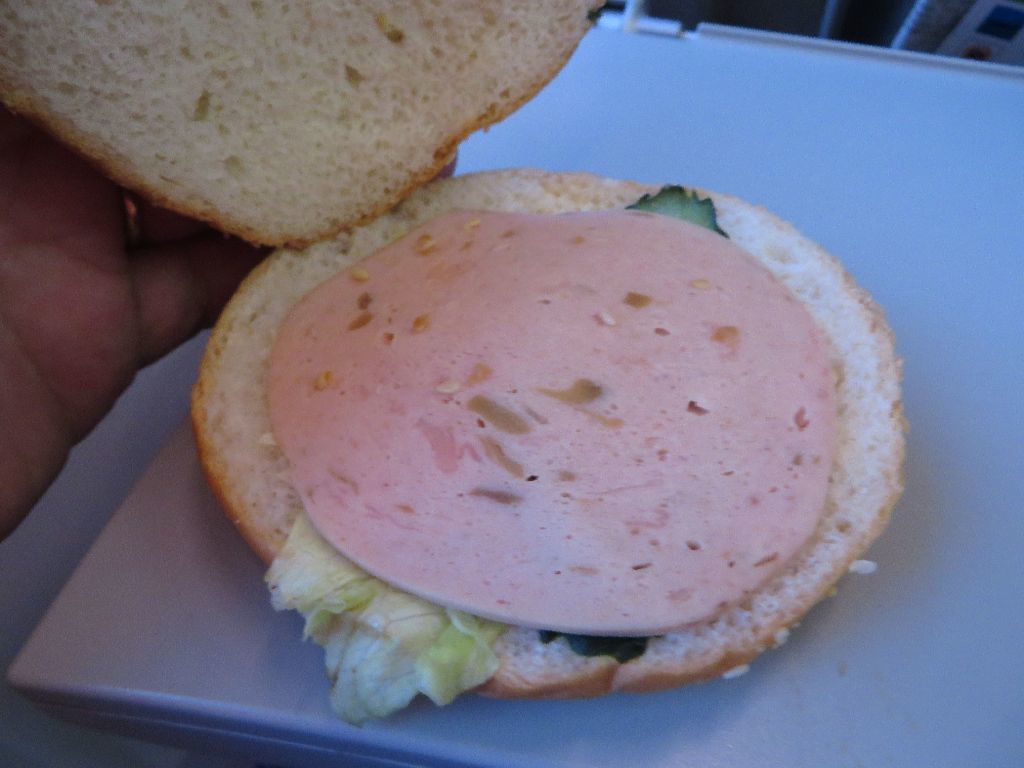
Another view of the sunset

The waning light improves the look of the Sky Interior

Touch down at 20:31 and final stop at the terminal at 20:41 : the plane recovered some of her initial delay. I deplaned a quarter of an hours later.
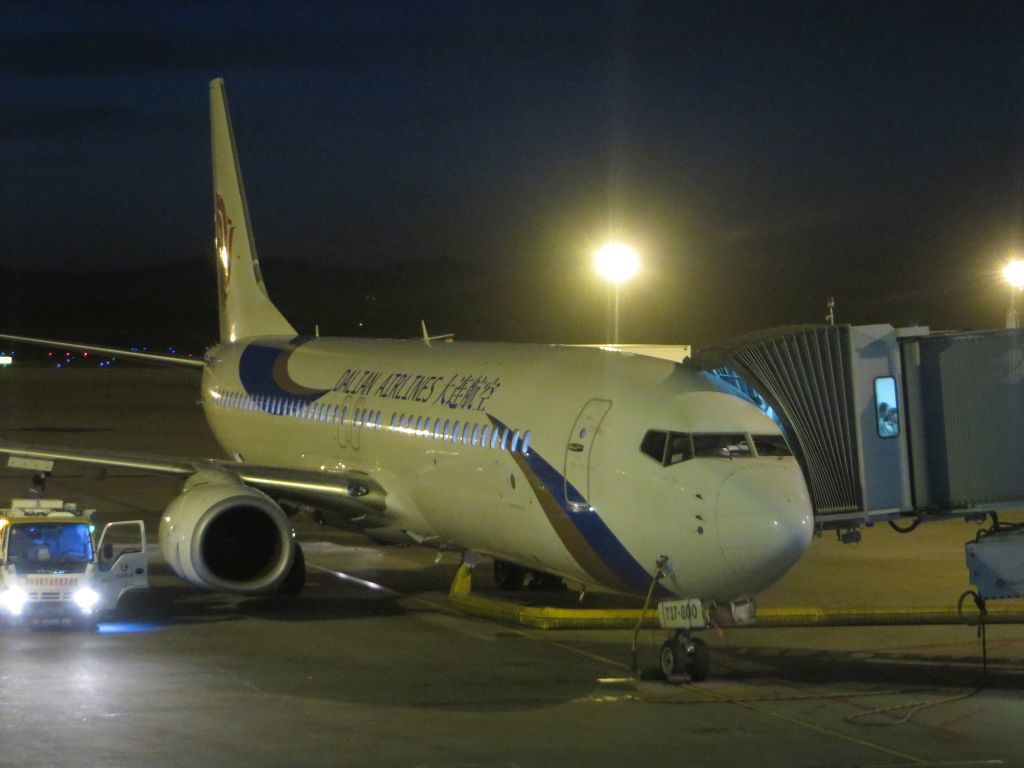
A last look at this unexpected plane, a first for me which was a pleasant surprise

A Xiamen Airlines 738
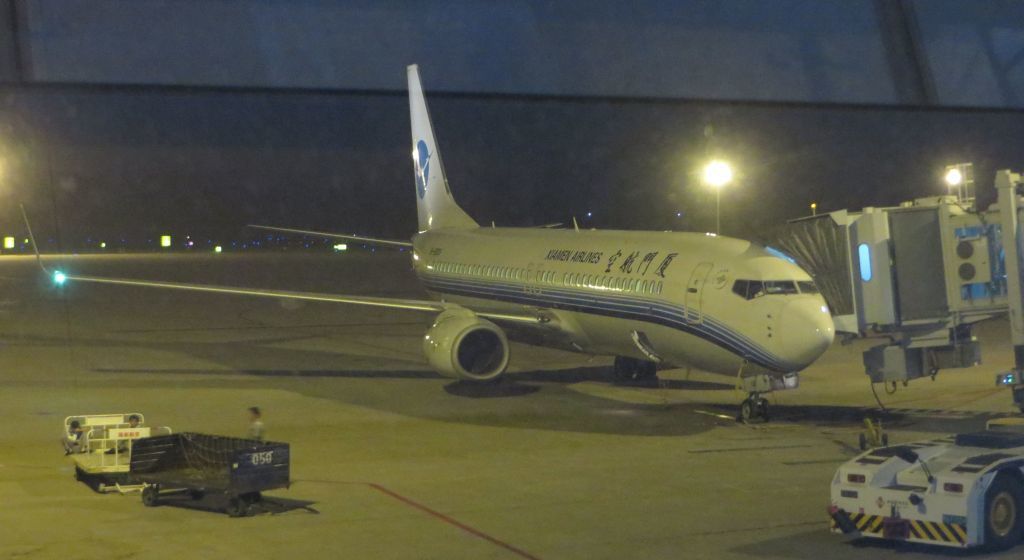
And arrival in the luggage delivery room, where mine which had a priority tag thanks to my colleague’s status arrived 7 minutes after the plane’s final stop !

And four minutes later, we were already in two taxis, leaving the terminal with as usual the name of the city in giant red characters : 西安
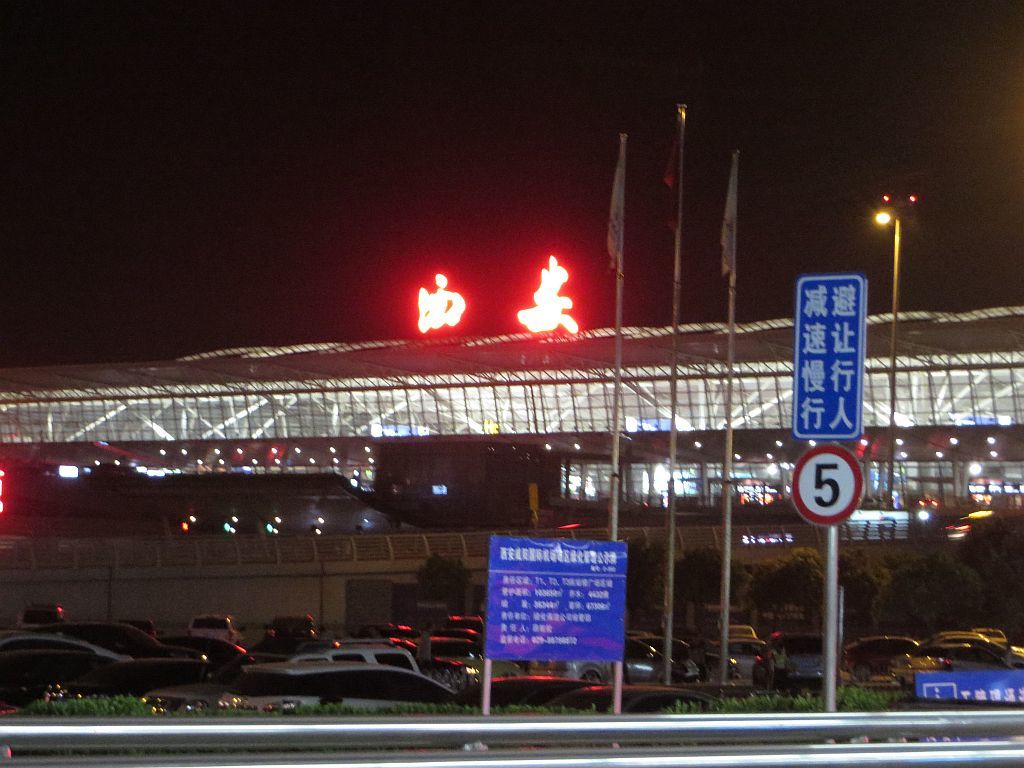
This is the end of this FR, and the beginning of a short tourist bonus limited to what I saw in the evening after my meetings.
Tianfu Square is Chengdu’s central square. That is also where Chengdu’s Subway Line 1 (north-south) and Line 2 (east-west) cross.
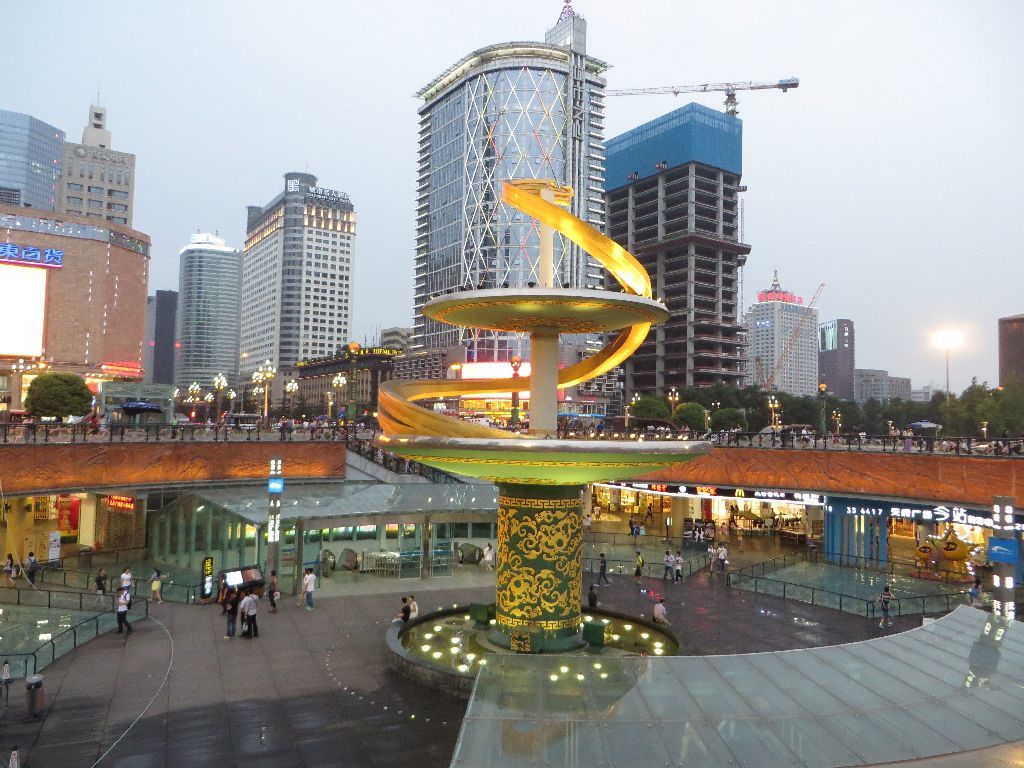
There are presently only two lines of subway in Chengdu which started operation a few years ago, but Chengdu Metro’s ambition are overwhelming : the master plan calls for an eventual 900 km of subway lines!
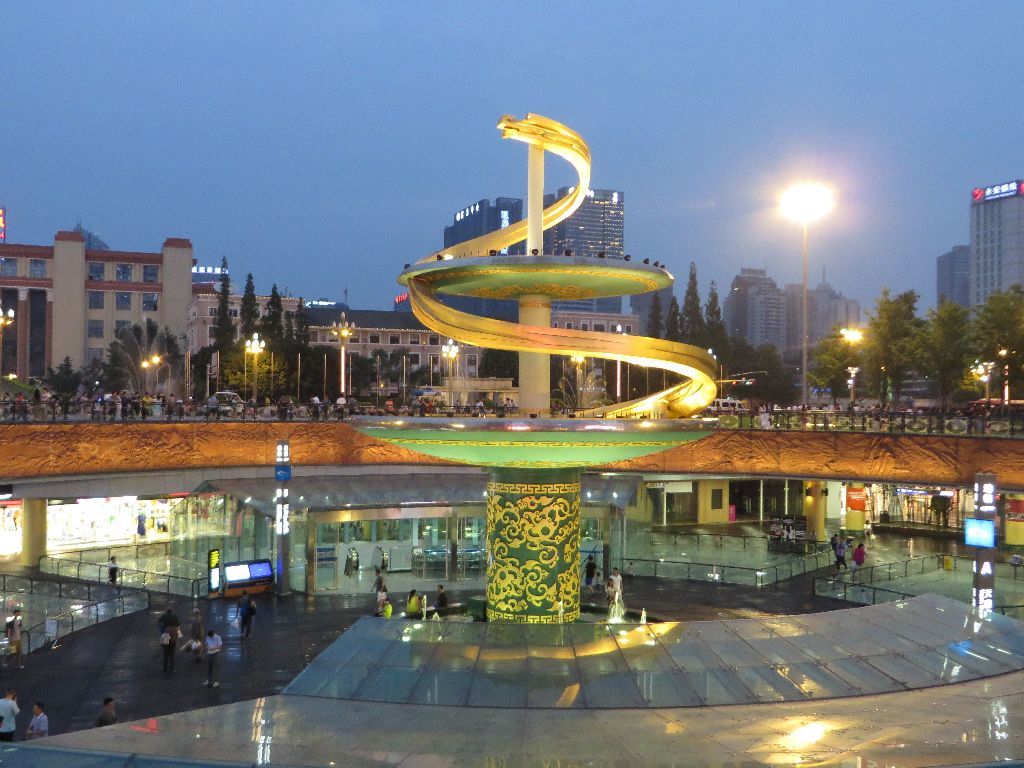
Tianfu Square was renovated by Chengdu Metro, which could afford building these fountains : I was told that the underground shopping mall and the parking lots that they built together with this central subway station made it a very profitable real estate operation.
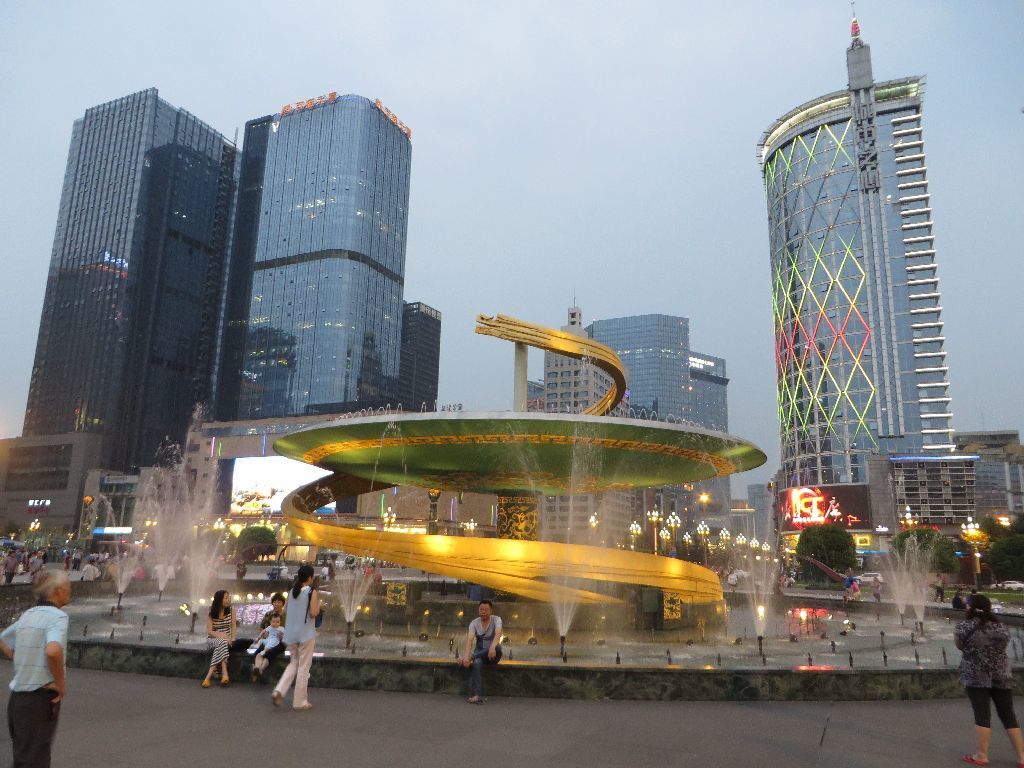
These women on Tianfu Square are not hawkers for hotels (like often outside a main railway station), and that they show pictures of young girls does not mean that they propose services of dubious morality: these are photographers who propose souvenirs of a better quality than that done with your smartphone. This kind of job is typical of the informal economy which accompanies the development of China today.
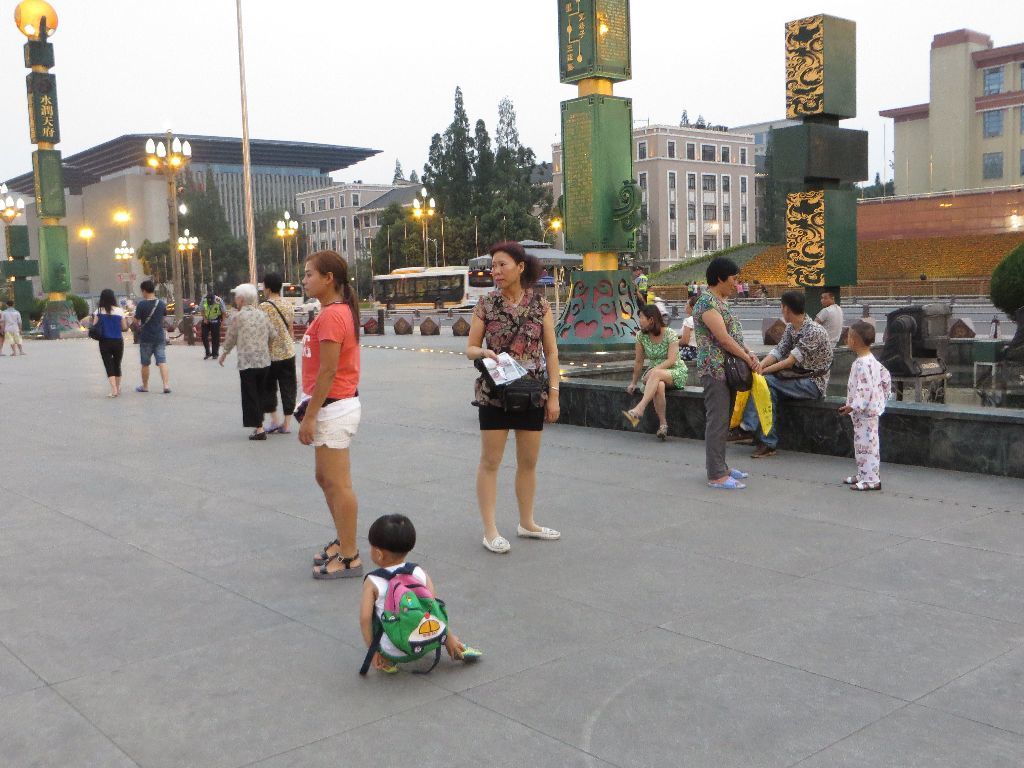

Tianfu Square was under the surveillance of policemen using all kinds of vehicles: electric like this Segway (or maybe a Chinese copy – I have seen one in an airport).
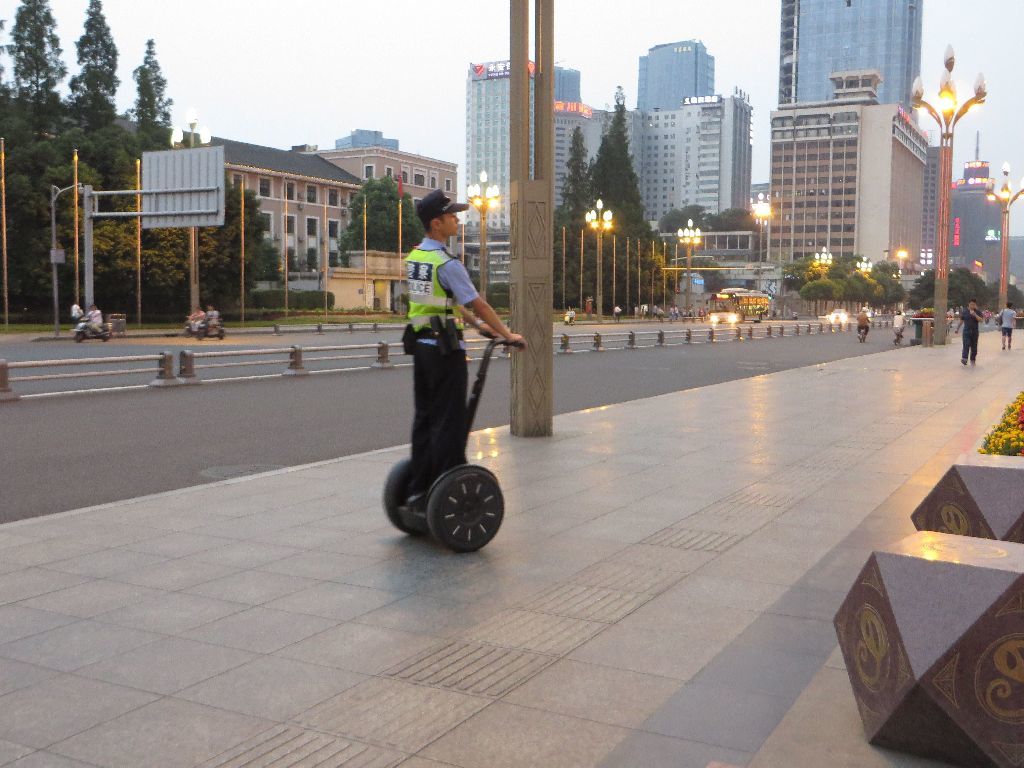
And this light car
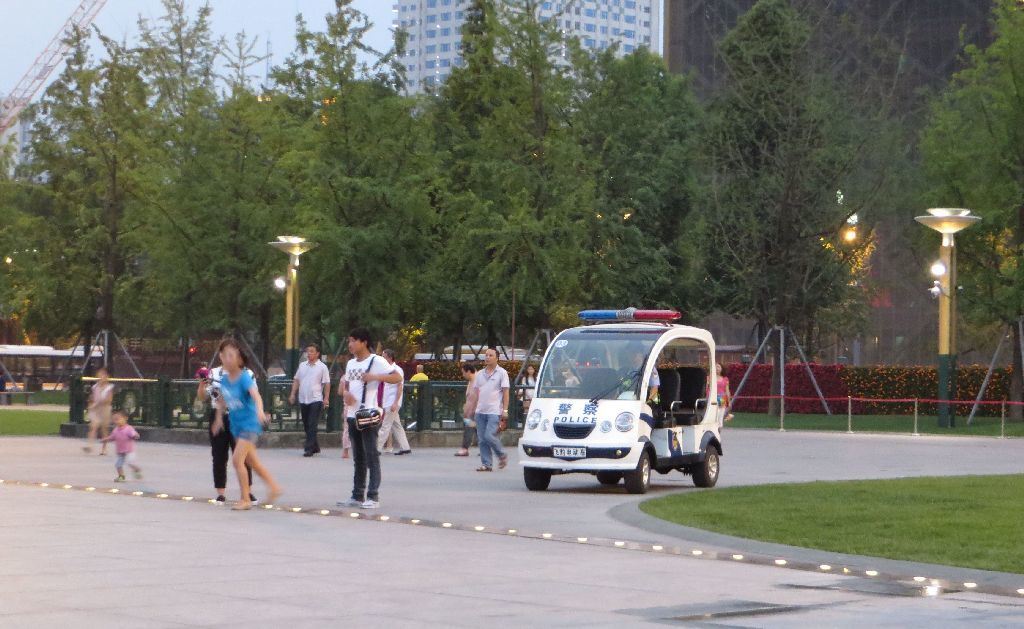
A bus, or rather a bus used as a mobile office
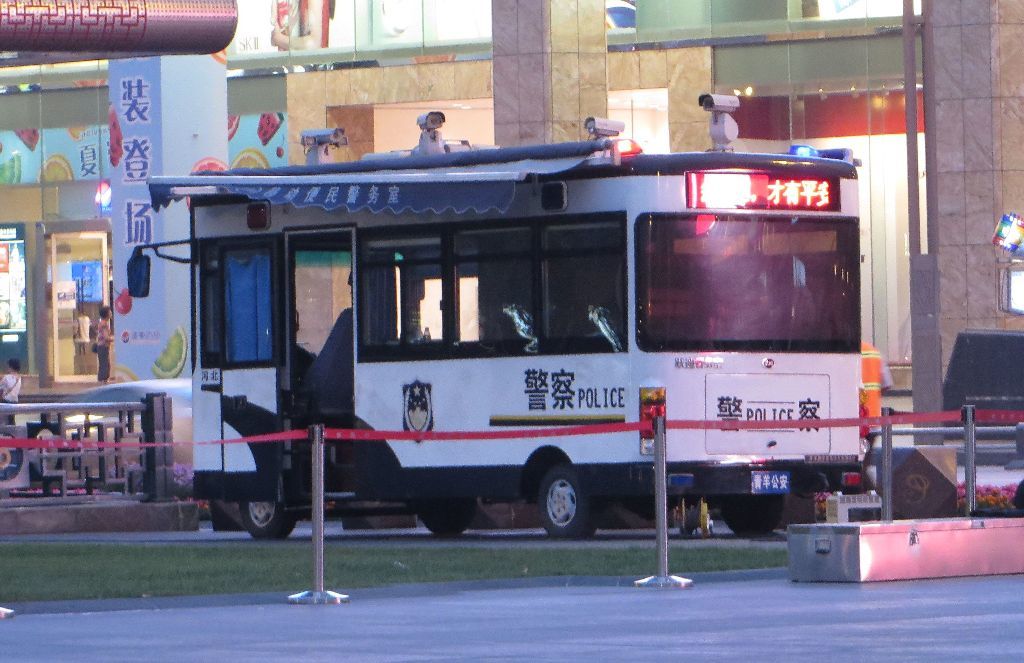
And even a light armored vehicle.
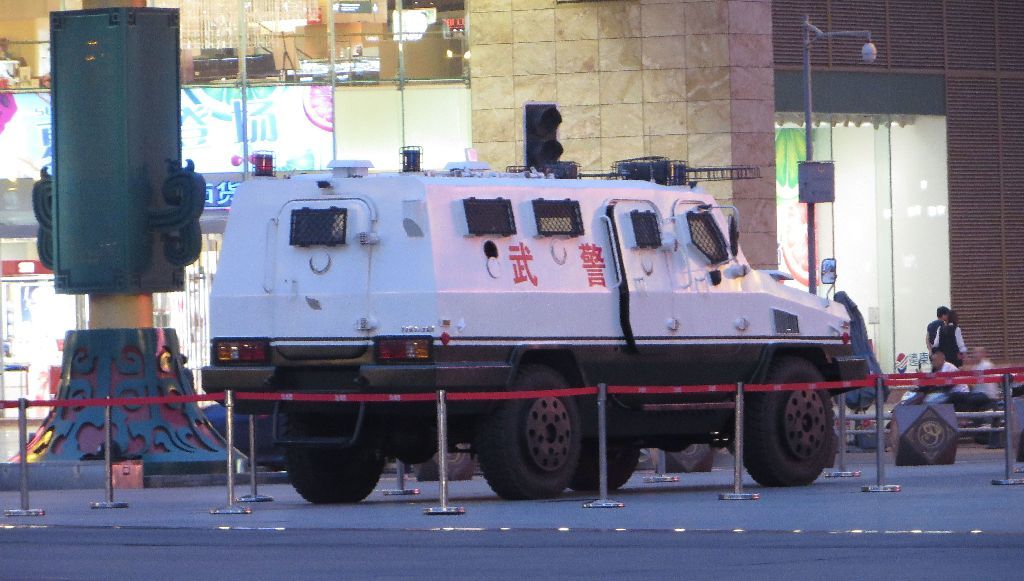
It was not heavy police presence and the mood was relaxed. Thinks changed radically since the time of Mao, whose statue keeps saluting the central axis of the square
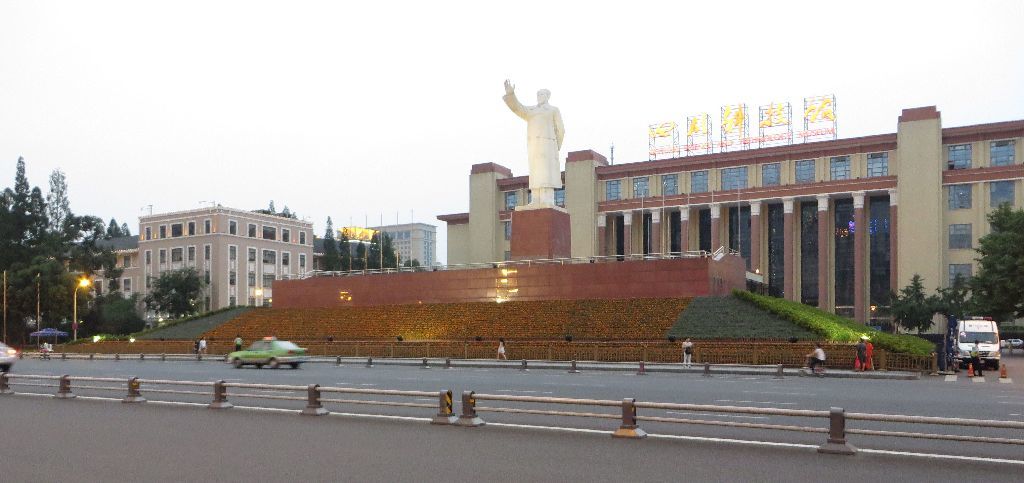
This was what the statue could see : a very wide and strictly straight avenue which measures in kilometers, illuminated by highly energy wasting omnidirectional street lamps.

Where was this structure in the distance? I knew it, but I had forgotten its localization.
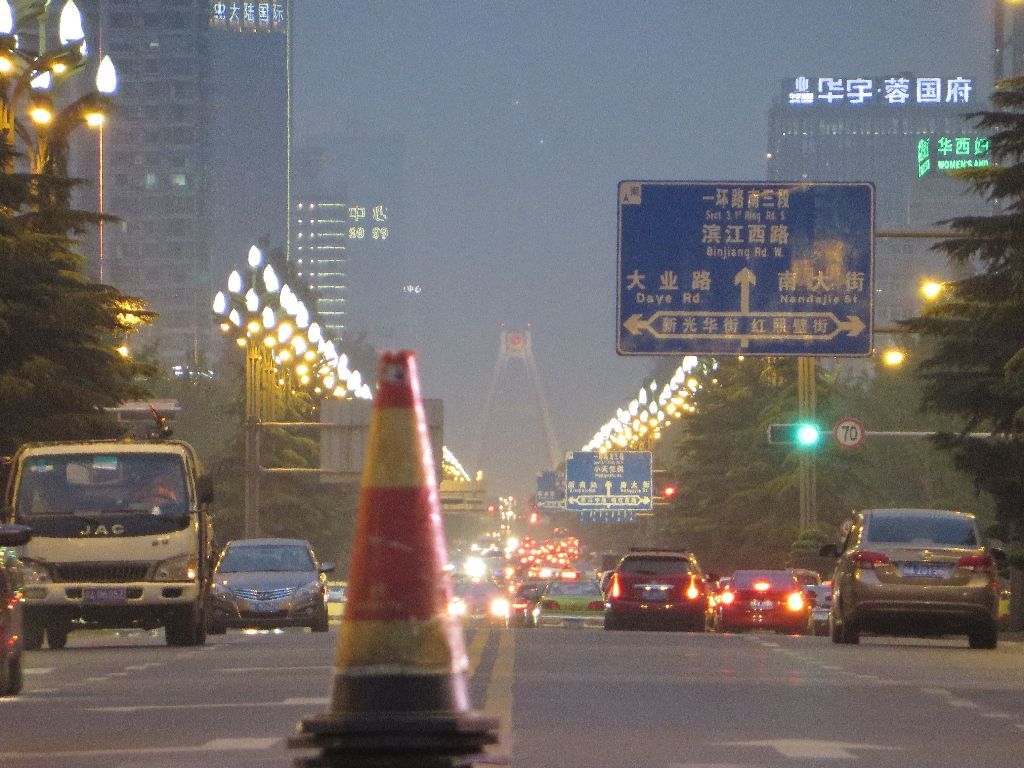
I only needed to ask one of the policemen keeping watch on the square, and he made no difficulty in telling me where to go : direction the South station subway stop. The surroundings are not especially attractive by night.
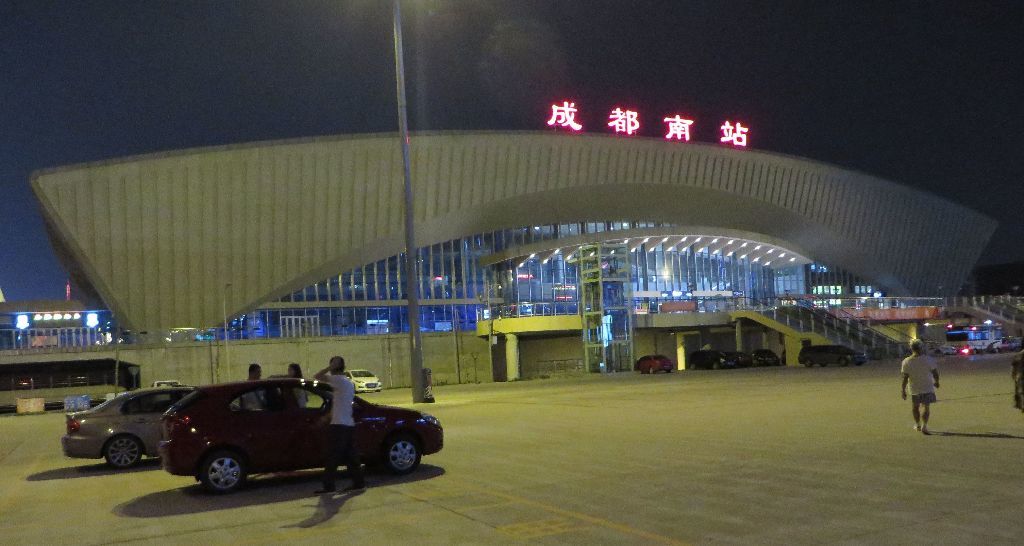
When you do not have a chance to go there by car in daytime, it is still possible to have a decent view of the viaduct which crosses the railway tracks.
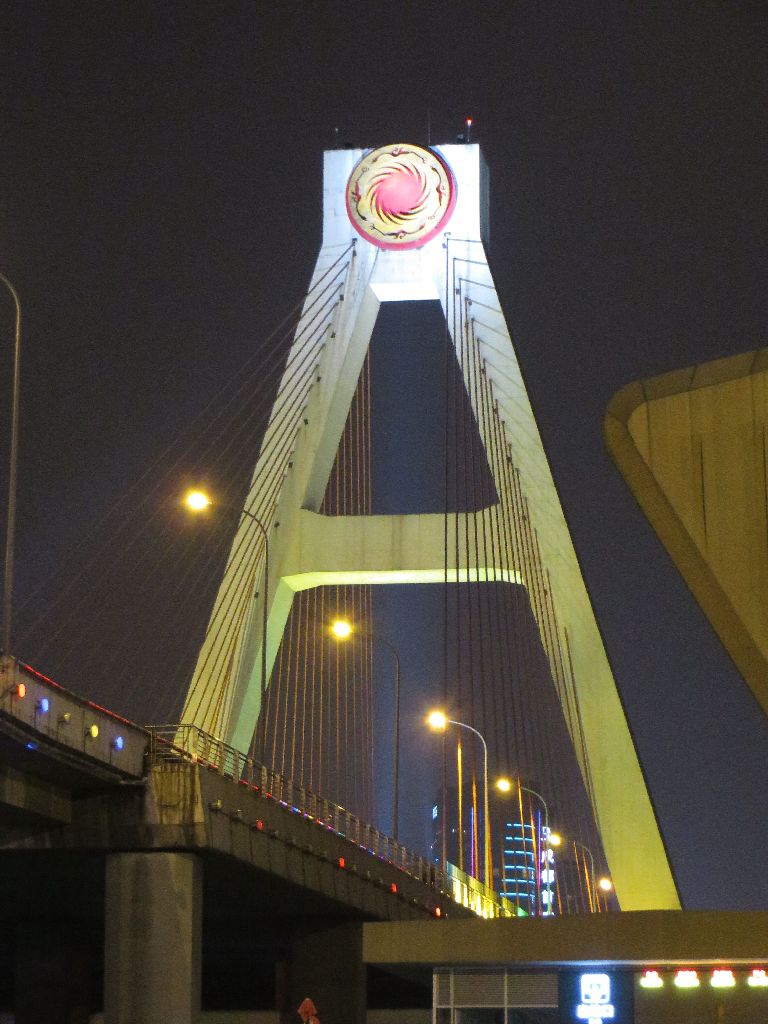
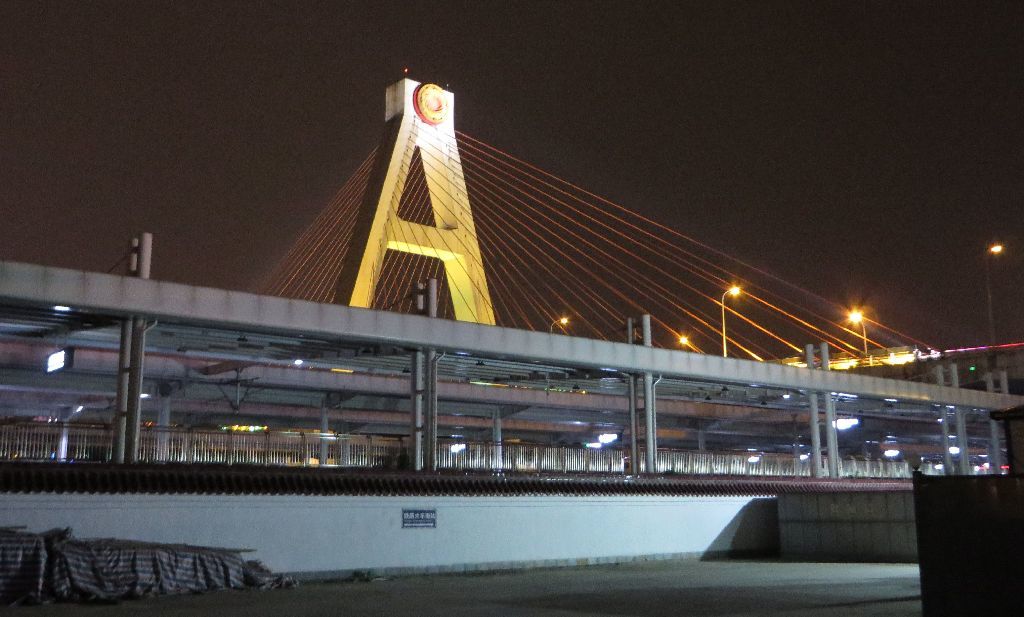
The decoration of the top of the pylon reproduces the design of the gold disk of Jinsha, that Chengdu Airlines chose for their logo.

Some more subway station stops to reach the temporary end station, at Century City. This subway exit was quite deserted between two subway arrivals.
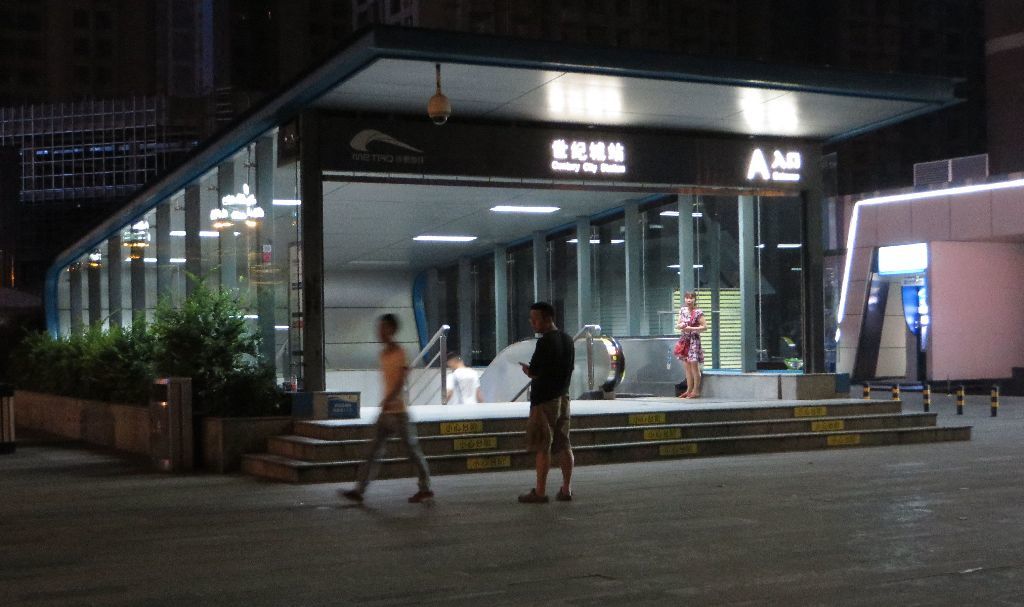
But when the passengers of a subway emerge, a dozen shouting women propose seats for transportation to suburban destinations.

The transportation is by car, or in one of these picturesque three wheel vehicles derived from light motorcycles.
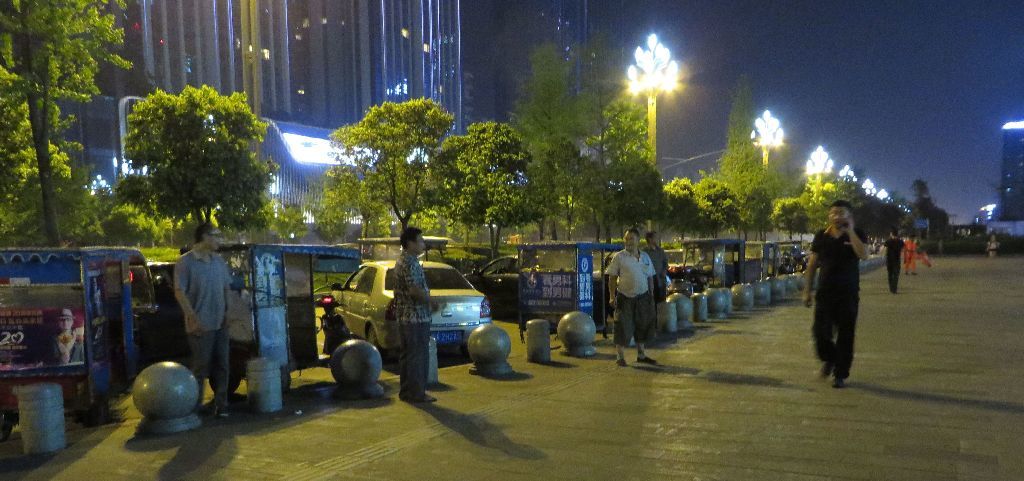
I did not need then : I only needed to cross the avenue on that bridge to quickly reach the Century City Holiday Inn. Untrue to this name, this neighborhood is probably at most ten years old, from the absence of any trace of old buildings.
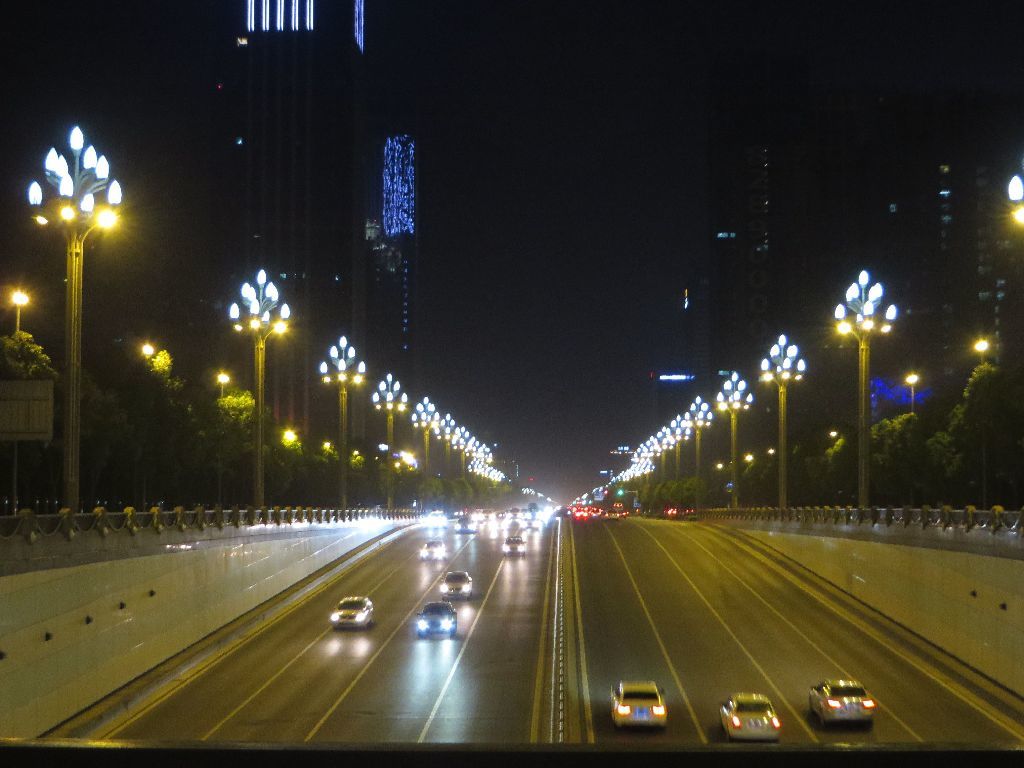
Thanks for reading me all the way to here!
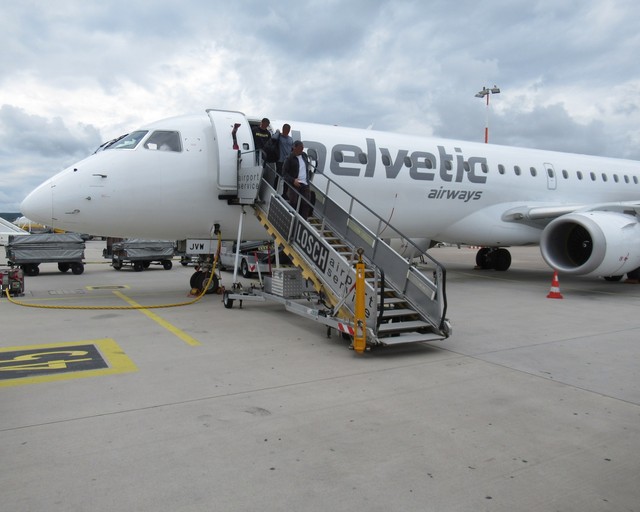

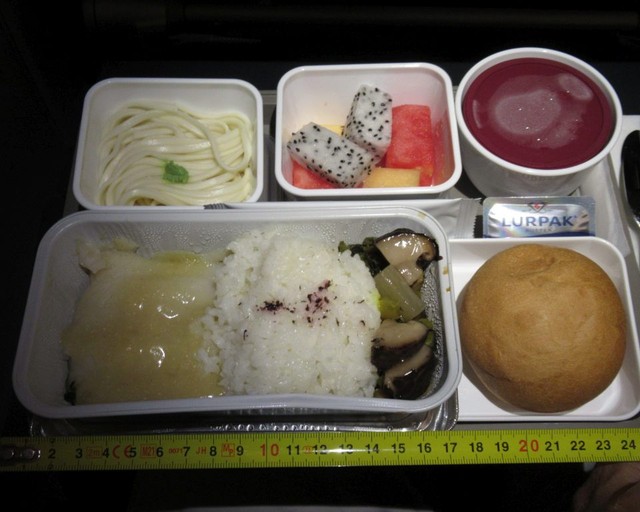

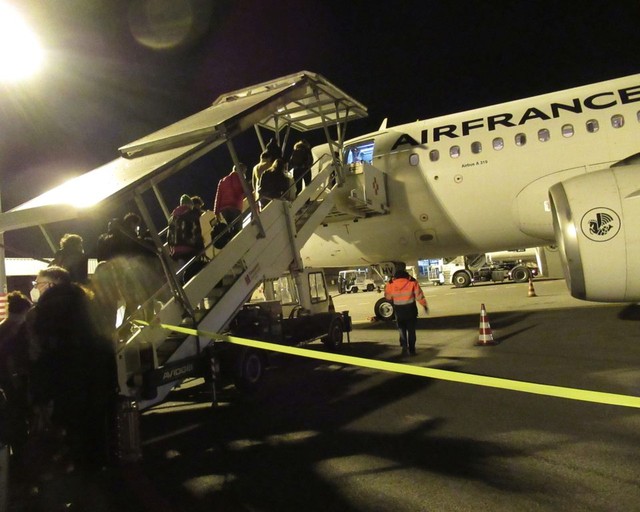
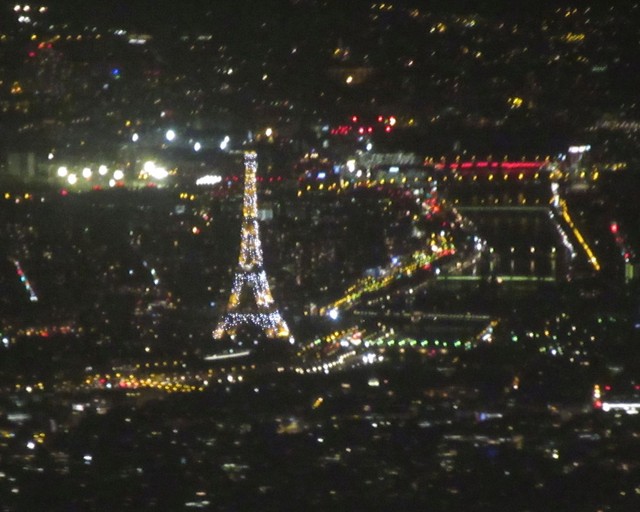

Thanks for this report,
You're very lucky to travel like this according to your work.
Concerning CTU, this airport is quite modern but CA lounge is not the best. I was expecting something better in terms of food and beverages.
Dalian Airlines is not offering correct catering, you could expect something better.
Your bonus is great and i can't wait to read your next flight.
Lucky is the correct adjective : I very seldom had a chance to get into a Chinese airport lounge.
Consequently, I did not have specific expectations with regards to this one, and since I like Chinese food and had an internet connection in a quiet environment, I was satisfied.
The limited catering on board was the result of flying the first shorter segment of a longer flight.
Thanks for your comment !
Thank you for sharing this nice FR.
CTU looks like an efficient and modern airport. The CA lounge looks very nice for a mainland Chinese one and the fact that it was not crowded made it even more enjoyable. The plastic utensils and the kitschy decoration by the buffet do not contribute to the appeal of the lounge. Catering looks solid with the choices provided. Pastries and sweets are not the forte of Chinese gastronomy.
I find the Tibet Airlines livery quite appealing. It looks better on a widebody.
Overall a good flight but the catering was certainly lacking.
Nice bonus of this big city.
I found the decoration in the lounge rather subdued, very low on the kitsch scale which can reach wild levels in China.
Pastries are not what Chinese gastronomy is best at, and cakes are plain disasters.
The FAs of Tibet Airlines have a fetching uniform. I wish I had a chance to fly with them on a domestic fifth freedom flight (a politically highly incorrect expression ;)
Catering on board was below par, but flying on that unusual airline more than compensated for it.
Thanks for the comment !